The Bled Castle in Slovenia offers panoramic views, a restaurant, and a small café. The island in the middle of Lake Bled, where the castle stands, has several buildings, including a pilgrimage church dedicated to Mary. According to legend, a young widow had a bell cast for the chapel that sank during transport, only to be replaced by a new one blessed by the Pope, which is said to grant wishes to those who ring it.
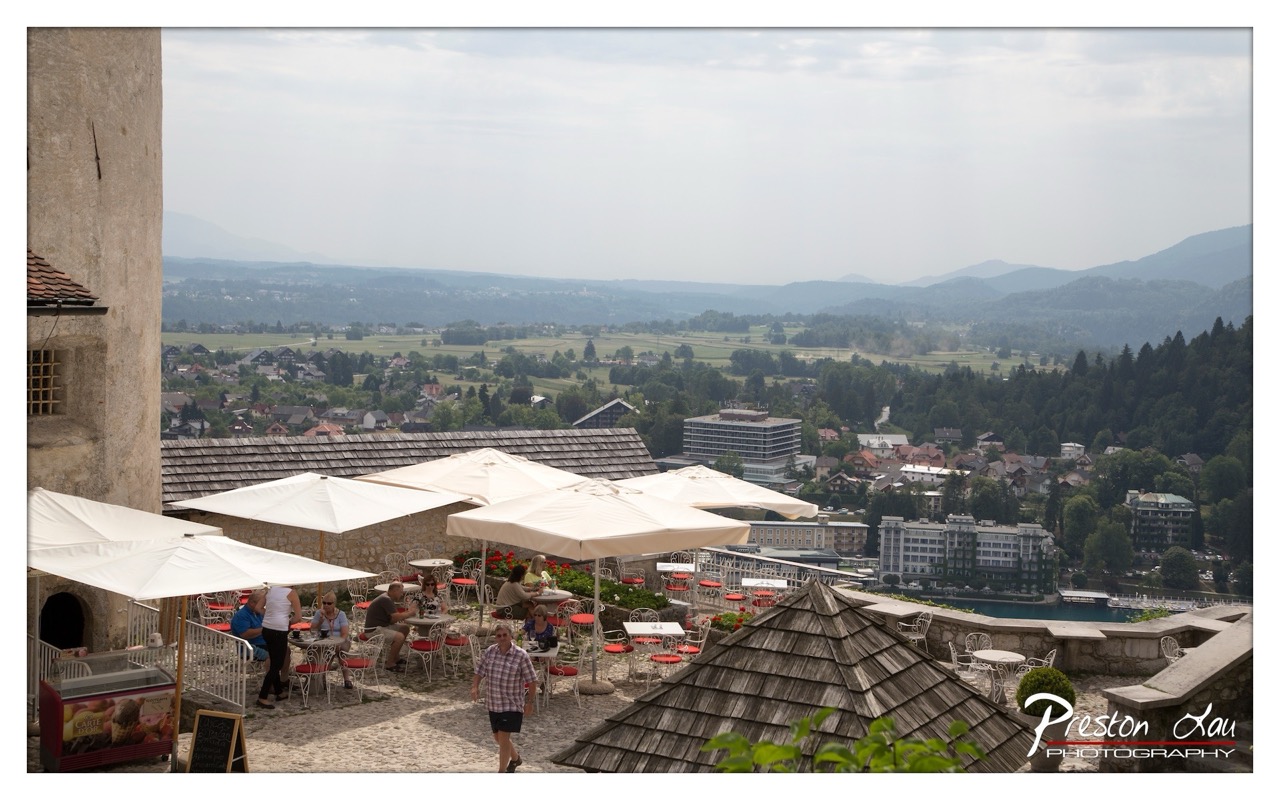

1. Overall Rating (0–10) — 7.0
This photograph captures a tranquil yet vibrant hillside café overlooking a picturesque town nestled in a valley, with mountains fading into the haze on the horizon. The scene balances human activity with expansive natural beauty, evoking a sense of leisure and place. While the composition is strong and the setting compelling, the slightly overcast lighting and muted tones temper the image’s emotional resonance, leaving it feeling more like a snapshot than a fully realized portrait of the moment.
2. Composition (0–10) — 7.5
The frame is well-balanced, with the café in the foreground drawing the eye while the sweeping valley and distant mountains create depth. The stone wall on the left and the diagonal line of the roof guide the viewer’s gaze into the scene, though the composition feels slightly crowded due to the number of umbrellas and tables.
3. Lighting (0–10) — 6.0
The light is diffused and even, a result of the overcast sky, which softens shadows and flattens contrast. While this prevents harsh highlights, it also drains some of the atmosphere, giving the scene a muted, almost gray quality that undercuts the potential vibrancy of the setting.
4. Color & Tone (0–10) — 6.5
The palette is largely neutral—beiges, grays, and soft greens—with only subtle pops of red from the chairs and flowers. The lack of rich saturation reduces visual impact, though the tonal range is reasonably balanced, preserving detail in both the foreground and background.
5. Creativity (0–10) — 7.0
The photograph captures a moment of everyday life within a stunning landscape, offering a narrative of travel and relaxation. The inclusion of people adds life and scale, while the elevated perspective provides a sense of discovery. While not groundbreaking in concept, it effectively conveys the experience of being in a place of scenic beauty.
6. Technical Quality (0–10) — 8.0
The image is sharp and well-focused throughout, with clear detail in both the foreground and background. The depth of field is adequate, allowing the café and distant town to remain distinct. The exposure is balanced, with no obvious over- or underexposed areas.
7. Emotional Impact (0–10) — 6.5
The image evokes a quiet sense of contentment and wanderlust, inviting the viewer to imagine themselves at that café, enjoying the view. However, the subdued lighting and lack of dramatic color limit the emotional punch, making the moment feel more observed than felt.
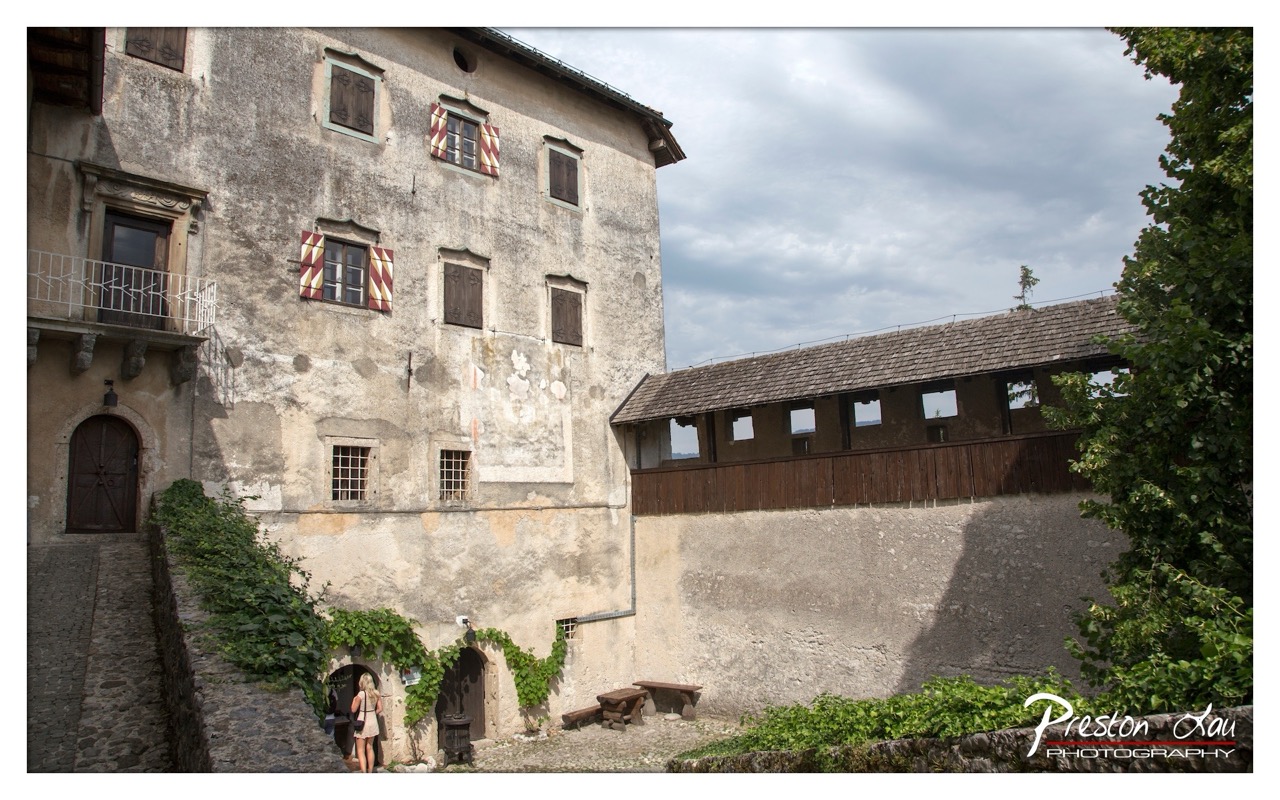

1. Overall Rating (0–10) — 7.0
This photograph captures the timeless character of a historic European courtyard, where weathered stone and ivy-clad walls evoke centuries of quiet life. The interplay of light and shadow across the aged façade lends a contemplative mood, while the lone figure provides a sense of scale and human presence. Though the composition is strong, the overcast sky and subdued palette slightly dampen the scene’s potential for dramatic impact.
2. Composition (0–10) — 7.0
The image employs a balanced diagonal structure, with the stone staircase and building facade leading the eye through the frame. The placement of the woman near the lower-left arch adds narrative interest, while the overhanging greenery on the right creates a natural counterweight.
3. Lighting (0–10) — 6.5
Diffused light from the overcast sky softens shadows and evenly illuminates the scene, preserving detail in both highlights and midtones. While this avoids harsh contrasts, it also limits the dramatic depth and texture that directional light might have revealed.
4. Color & Tone (0–10) — 6.0
The palette is muted, dominated by earthy tones of stone and green, with the red-and-white striped shutters offering a subtle accent. The overall tonal range is limited, giving the image a slightly flat appearance despite the rich textures.
5. Creativity (0–10) — 7.0
The photograph successfully captures a moment of quiet exploration within a historic setting, blending architecture, nature, and human presence. The choice to include the figure enhances storytelling, suggesting a journey through time.
6. Technical Quality (0–10) — 8.0
The image is sharp and well-focused, with clean details in the stonework and foliage. The exposure is balanced, and the camera’s resolution captures fine textures without noise.
7. Emotional Impact (0–10) — 6.5
The scene evokes a sense of nostalgia and quiet reverence for history, inviting the viewer to imagine the stories embedded in the walls. The emotional resonance is gentle but compelling, enhanced by the solitary figure’s contemplative stance.
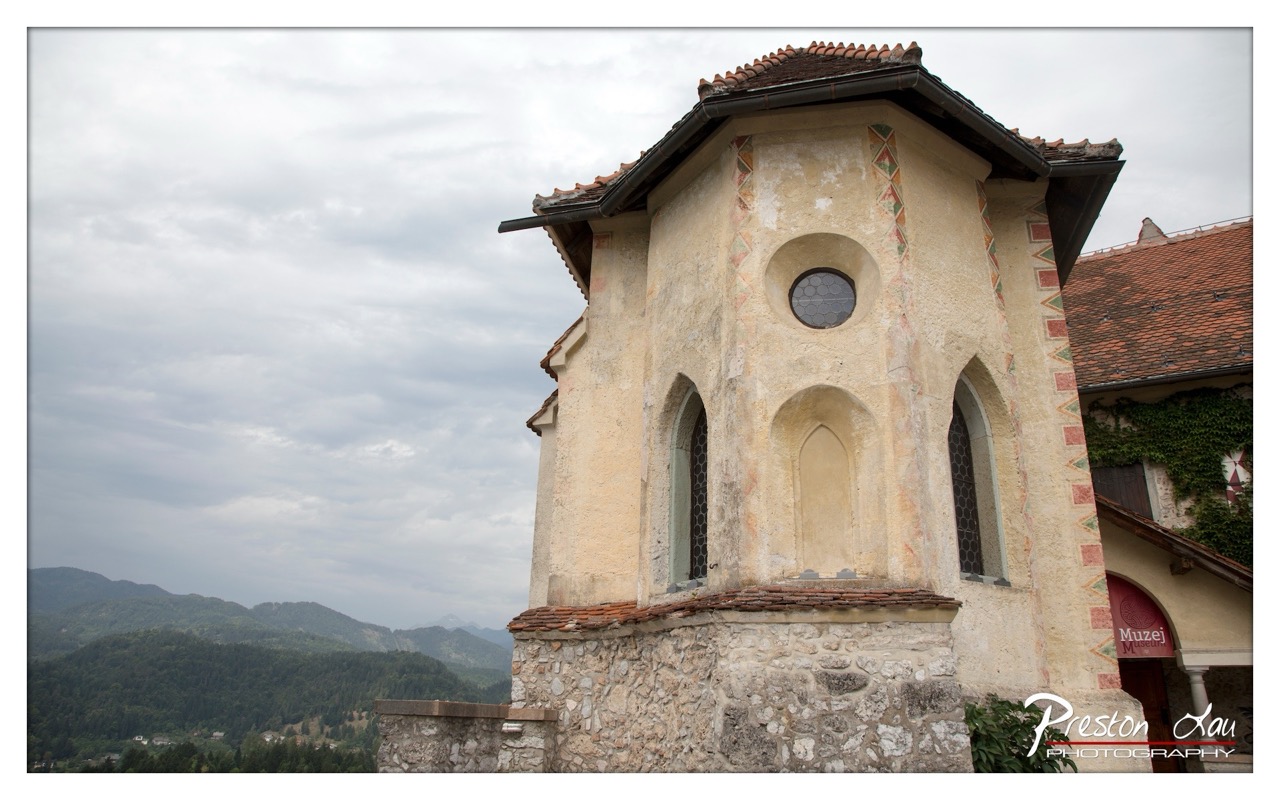

1. Overall Rating (0–10) — 7.0
This photograph captures the timeless elegance of a historic stone tower nestled against a dramatic mountain backdrop, where architecture and landscape converge in quiet harmony. The weathered textures of the stonework and the soft, diffused light lend a contemplative mood, while the overcast sky enhances the sense of stillness and age. Though the composition is strong, the image’s emotional weight is slightly restrained by its neutral lighting and lack of dynamic contrast.
2. Composition (0–10) — 7.5
The tower is well-placed on the right, creating a balanced asymmetry with the expansive valley to the left. The diagonal lines of the roof and the arched windows guide the eye upward, while the stone base grounds the structure. The inclusion of the museum sign adds context without distracting.
3. Lighting (0–10) — 6.0
The overcast sky provides even, soft light that minimizes harsh shadows and highlights the textures of the stonework. However, the lack of direct sunlight results in a muted atmosphere, reducing the visual drama and depth of the scene.
4. Color & Tone (0–10) — 6.5
The palette is restrained—soft beiges, muted greens, and grays—evoking a sense of history and weathering. While cohesive, the colors lack vibrancy, giving the image a somewhat flat appearance. The red roof and sign offer a subtle pop of color but don’t significantly elevate the overall tone.
5. Creativity (0–10) — 7.0
The image successfully blends architectural detail with natural scenery, creating a narrative of place and time. The inclusion of the museum sign adds a layer of human context, suggesting preservation and memory. While not overtly experimental, the composition is thoughtful and evocative.
6. Technical Quality (0–10) — 8.0
The focus is sharp across the frame, particularly on the tower’s facade. The exposure is well-balanced, with no blown highlights or lost shadows. The watermark is subtle and professionally placed, preserving the image’s integrity.
7. Emotional Impact (0–10) — 6.5
The photograph conveys a quiet reverence for heritage and place, inviting reflection on time and endurance. While the mood is serene, the lack of strong light or color contrast keeps the emotional resonance from fully resonating with the viewer.
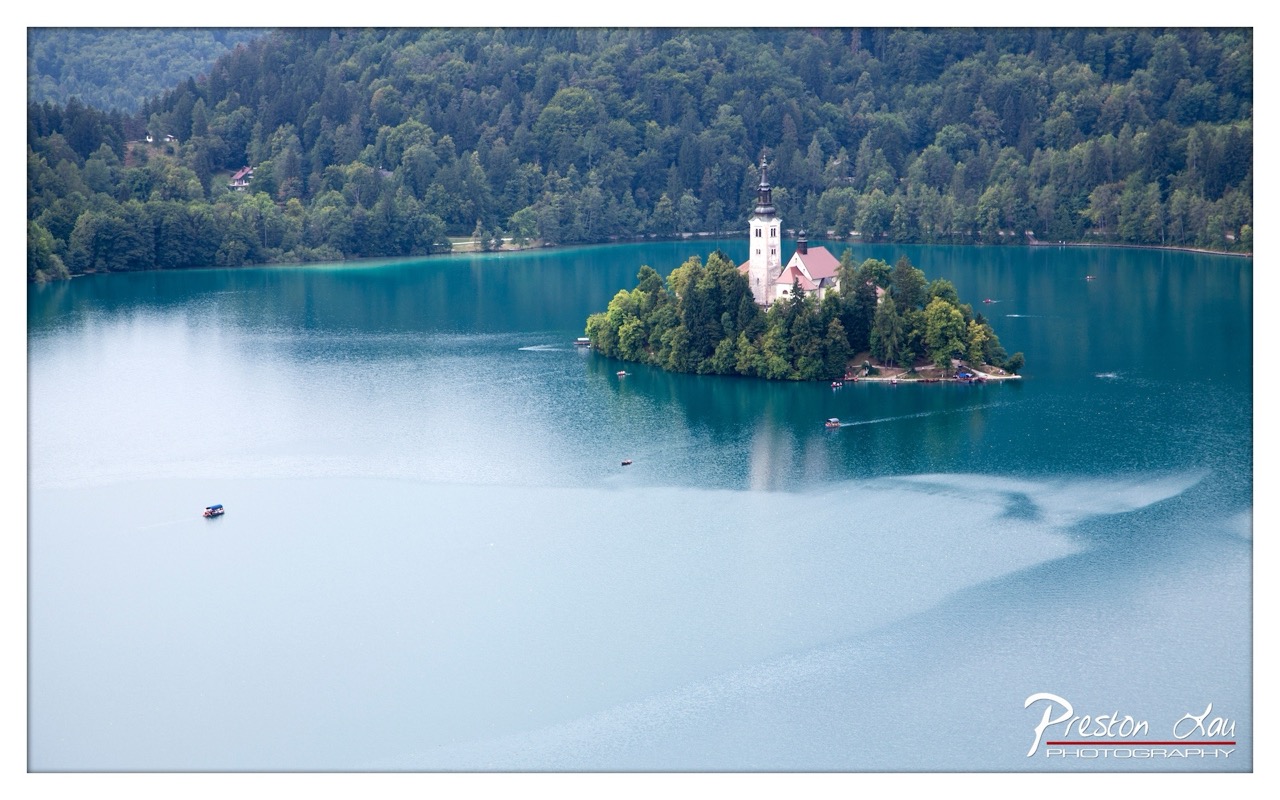

1. Overall Rating (0–10) — 8.0
This photograph captures the serene majesty of Lake Bled, where the island church emerges as a timeless focal point amid a sea of turquoise water. The expansive view and natural harmony of land, water, and sky create a deeply peaceful atmosphere, though the wide composition slightly dilutes the intimacy of the scene. The image succeeds as both a landscape document and a visual meditation on stillness and tradition.
2. Composition (0–10) — 7.5
The island is placed slightly off-center, drawing the eye naturally while allowing the surrounding water to breathe. The diagonal sweep of the water’s surface in the foreground adds depth, though the vast negative space in the lower left weakens the visual balance.
3. Lighting (0–10) — 8.0
Soft, diffused light enhances the tranquil mood, casting gentle reflections across the lake without harsh shadows. The even illumination reveals rich tonal details in the trees and water, creating a calm, almost ethereal quality.
4. Color & Tone (0–10) — 8.5
The palette of emerald greens and turquoise blues is vivid yet harmonious, with a subtle coolness that reinforces the scene’s serenity. The contrast between the bright white church and the darker forest enhances visual clarity and focal depth.
5. Creativity (0–10) — 7.0
While the subject is iconic and the composition traditional, the photographer’s choice to capture the scene from a high vantage point offers a fresh perspective. The subtle inclusion of the boat trail adds narrative motion without disrupting the stillness.
6. Technical Quality (0–10) — 9.0
Sharp focus and clean detail are evident throughout, particularly in the textures of the trees and the water’s surface. The exposure is well-balanced, with no blown highlights or crushed shadows.
7. Emotional Impact (0–10) — 8.5
The image evokes a profound sense of peace and timelessness, inviting contemplation. The quiet presence of the church on the island resonates as a symbol of enduring beauty, making the viewer feel both small and connected to the landscape.
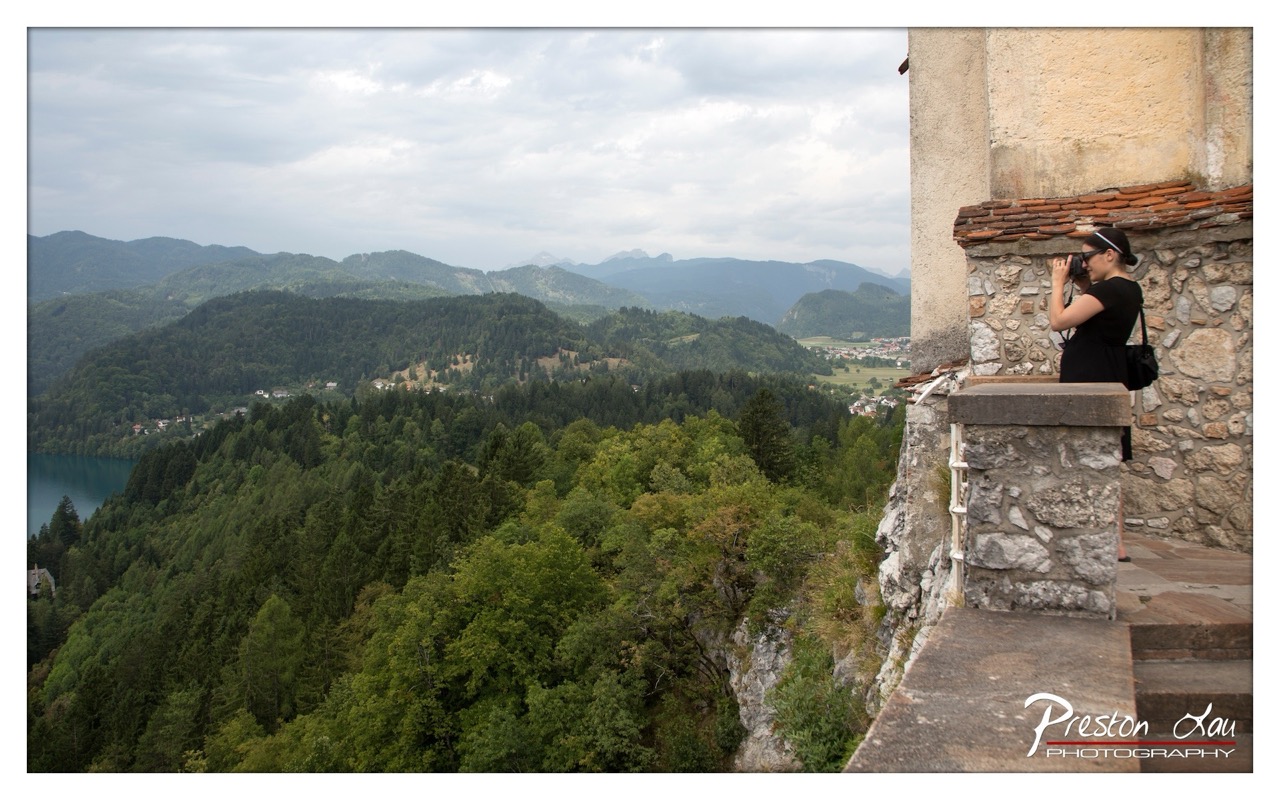

1. Overall Rating (0–10) — 7.0
This photograph captures a contemplative moment of a traveler immersed in the grandeur of a mountainous landscape, with the historic stone architecture framing the scene like a window into nature. The composition balances human presence with vast natural beauty, creating a narrative of discovery and reflection. While the overcast sky tempers the emotional intensity, the image succeeds in conveying both the scale of the environment and the intimacy of personal experience.
2. Composition (0–10) — 7.5
The subject is positioned off-center, drawing the eye toward the expansive valley and lake beyond. The stone wall on the right provides a strong vertical anchor, while the diagonal line of the cliff edge guides the viewer’s gaze into the depth of the landscape. The framing feels intentional and balanced, enhancing the sense of place.
3. Lighting (0–10) — 6.0
Diffused light from the overcast sky creates even illumination across the scene, softening shadows and preserving detail in both the foreground and background. While this avoids harsh contrasts, it also lends a muted, subdued quality to the image, slightly dampening the vibrancy of the landscape.
4. Color & Tone (0–10) — 6.5
The palette is dominated by natural greens and grays, with the deep blue of the lake offering a subtle but effective contrast. The colors are well-saturated but restrained, fitting the calm, contemplative mood. A touch more warmth could enhance the earthy tones of the stone and foliage.
5. Creativity (0–10) — 7.0
The image is creatively composed, using the act of photography within the photograph to add a layer of meta-narrative—someone capturing a moment that is itself being captured. This self-referential quality enriches the story, elevating it beyond a simple landscape shot.
6. Technical Quality (0–10) — 8.0
The image is sharp and well-focused, with clear detail in both the foreground architecture and the distant hills. The exposure is balanced, and there are no noticeable technical flaws. The watermark is discreet and unobtrusive.
7. Emotional Impact (0–10) — 7.0
The photograph evokes a sense of quiet wonder and connection to place. The solitary figure, absorbed in the view, invites the viewer to share in the moment of awe, creating a personal and introspective emotional resonance.
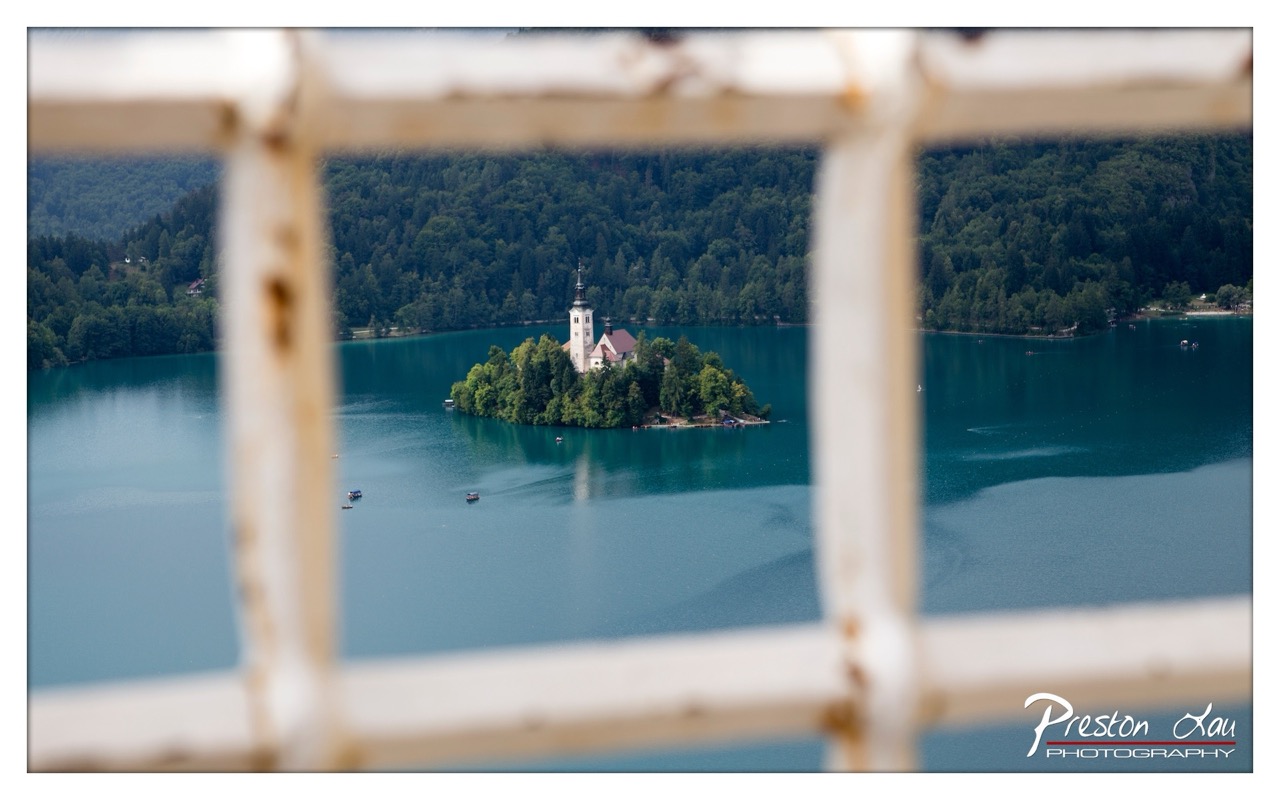

1. Overall Rating (0–10) — 8.0
This photograph captures the serene majesty of Lake Bled with a compelling sense of depth and narrative. The weathered railing in the foreground acts as a natural frame, grounding the viewer in a moment of quiet observation while drawing attention to the iconic church on the island. The cool, turquoise hues of the water contrast beautifully with the lush green forest, evoking a timeless, almost dreamlike atmosphere. While the framing is strong, a slightly more deliberate focus on the island might enhance the sense of immediacy.
2. Composition (0–10) — 8.5
The foreground railing creates a strong visual frame, guiding the eye toward the central island and church. The placement of the island near the center of the image establishes balance, while the leading lines of the railing add depth and dimension. The slight asymmetry of the railing adds a subtle sense of candidness, enhancing the photo’s authenticity.
3. Lighting (0–10) — 7.5
The lighting is soft and diffused, likely from an overcast sky, which evenly illuminates the scene and enhances the rich tones of the lake and forest. The absence of harsh shadows preserves detail in both the foreground and background, though the slightly muted light tempers the vibrancy of the colors.
4. Color & Tone (0–10) — 8.0
The palette is dominated by cool blues and greens, creating a harmonious and tranquil mood. The contrast between the deep teal water and the verdant foliage is striking, while the white railing provides a neutral counterpoint. The overall tone is cohesive and evocative of a calm, reflective day.
5. Creativity (0–10) — 8.0
The use of the railing as a framing device is both inventive and effective, transforming a familiar landscape into a more intimate, personal view. This perspective invites the viewer to feel as though they are standing at a vantage point, peering through a window into a quiet world. The composition feels intentional yet unobtrusive, blending natural beauty with human presence.
6. Technical Quality (0–10) — 8.5
The image is sharp and well-focused on the island, with a shallow depth of field that softly blurs the foreground while keeping the subject clear. The exposure is balanced, with no obvious over- or underexposed areas. The watermark is discreet and does not detract from the image.
7. Emotional Impact (0–10) — 8.5
The photograph evokes a sense of peace, nostalgia, and quiet contemplation. The viewer is drawn into a moment of stillness, as if standing at the edge of a dream, looking across a tranquil lake toward a place of spiritual and historical significance. The combination of natural beauty and human framing creates a deeply resonant and memorable impression.
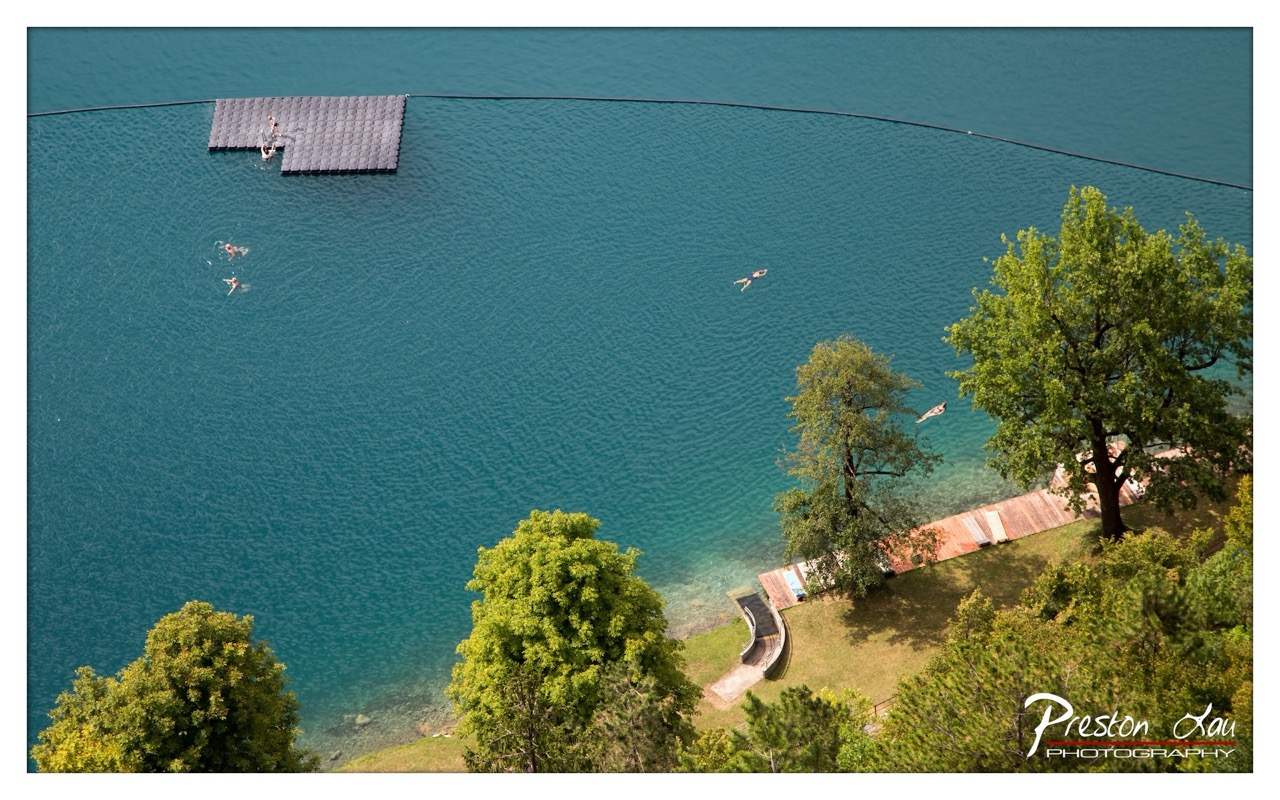

1. Overall Rating (0–10) — 7.0
This high-angle view of a lakeside scene captures a serene moment of leisure, with swimmers scattered across the vibrant turquoise water and a floating dock anchoring the composition. The rich, saturated colors and elevated perspective create a sense of calm detachment, inviting the viewer to observe the quiet rhythm of recreation. While the image is visually striking, its emotional depth is slightly restrained by a lack of dynamic contrast and narrative focus.
2. Composition (0–10) — 7.5
The diagonal line of the floating dock and the organic curve of the shoreline guide the eye through the frame, creating a balanced and engaging layout. The placement of the swimmers adds visual interest without overwhelming the scene, and the inclusion of lush green trees grounds the composition in natural beauty.
3. Lighting (0–10) — 8.0
Bright, natural daylight enhances the clarity and color vibrancy of the scene, with soft shadows indicating a high sun that illuminates the water and foliage evenly. The light reflects off the lake’s surface, adding texture and depth to the turquoise expanse.
4. Color & Tone (0–10) — 8.5
The vivid contrast between the deep teal water and the lush green trees creates a striking and harmonious palette. The warm tones of the wooden dock provide a subtle counterpoint, enriching the overall visual harmony and reinforcing the summery atmosphere.
5. Creativity (0–10) — 7.0
The elevated vantage point offers a unique perspective on a familiar lakeside setting, transforming a simple recreational scene into something more contemplative. The composition’s balance and color choices reflect a thoughtful approach to visual storytelling, though the subject matter remains largely observational.
6. Technical Quality (0–10) — 8.5
The image is sharp and well-focused, with fine detail visible in both the water’s surface and the surrounding foliage. The exposure is well-managed, capturing a broad dynamic range without overexposed highlights or lost shadows.
7. Emotional Impact (0–10) — 7.5
The photograph evokes a sense of peacefulness and leisure, with the swimmers’ quiet activity suggesting a carefree summer day. The elevated perspective lends a meditative quality, allowing the viewer to reflect on the simple beauty of nature and human interaction with it.
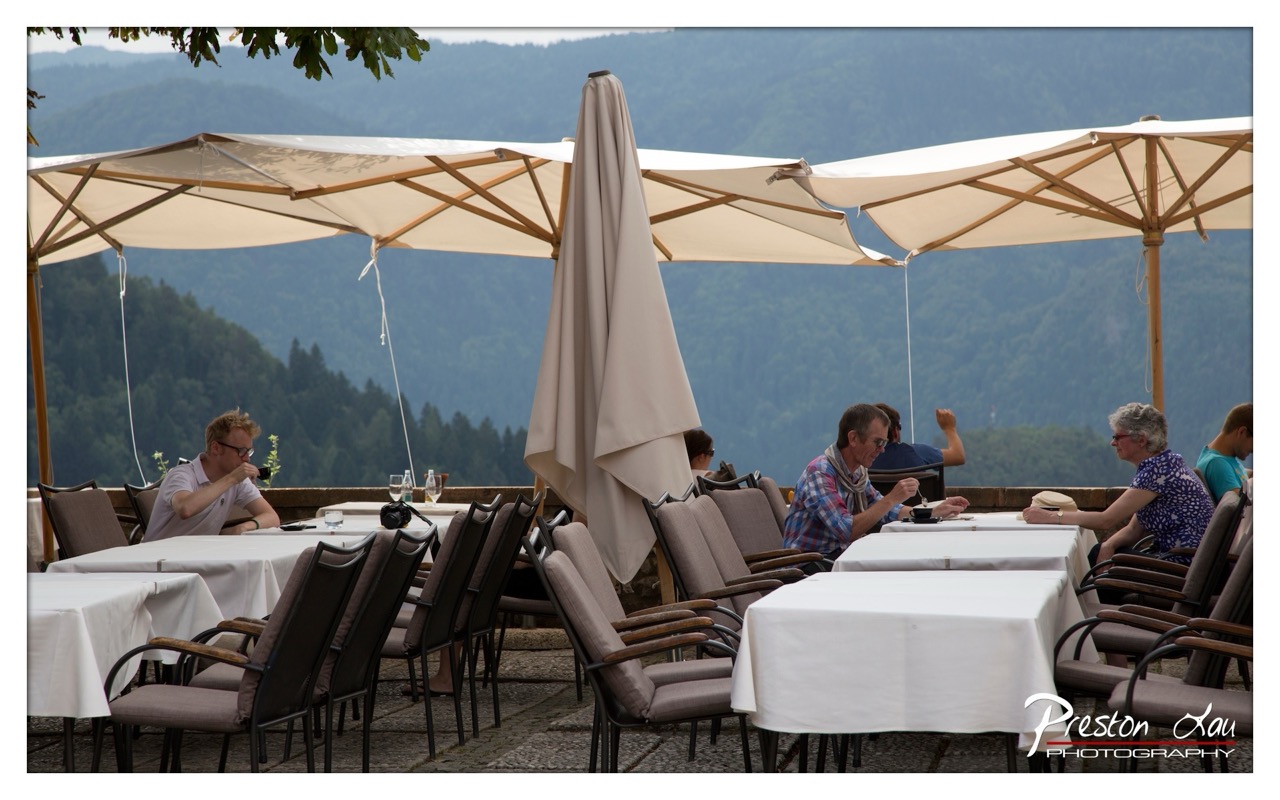

1. Overall Rating (0–10) — 7.0
This photograph captures a serene moment at an alpine restaurant, where the interplay of human activity and natural grandeur evokes a sense of peaceful contemplation. The layered composition, with tables in the foreground and a vast forested mountain range in the background, creates a narrative of leisure and escape. While the image is visually rich and atmospheric, the slightly muted tones and casual framing keep it from feeling fully polished—more a candid snapshot than a refined portrait of the scene.
2. Composition (0–10) — 7.0
The framing balances foreground activity with expansive background, using the umbrellas and tables as leading lines toward the mountains. The central closed umbrella acts as a subtle vertical anchor, adding depth and structure to the scene.
3. Lighting (0–10) — 6.5
Soft, diffused daylight evenly illuminates the scene, avoiding harsh shadows and enhancing the tranquil mood. The overcast sky contributes to a calm, muted light that harmonizes with the natural surroundings.
4. Color & Tone (0–10) — 6.5
The palette is dominated by neutral beiges, whites, and earthy greens, creating a cohesive and understated look. The tonal range is limited but appropriate for the calm, unassuming atmosphere of the setting.
5. Creativity (0–10) — 6.5
The image captures a moment of quiet life in a scenic location, but its strength lies in its realism rather than bold artistic interpretation. The storytelling is subtle, relying on context and mood rather than dramatic composition or color.
6. Technical Quality (0–10) — 7.5
The focus is sharp on the foreground subjects, with clear detail in the tables, chairs, and distant landscape. The image is well-exposed and free of technical flaws, though the slight softness in the background suggests a moderate depth of field.
7. Emotional Impact (0–10) — 7.0
The photograph conveys a sense of calm and retreat, inviting the viewer to imagine themselves in a peaceful mountain café. The quiet interactions and expansive vista evoke a longing for simplicity and natural beauty.
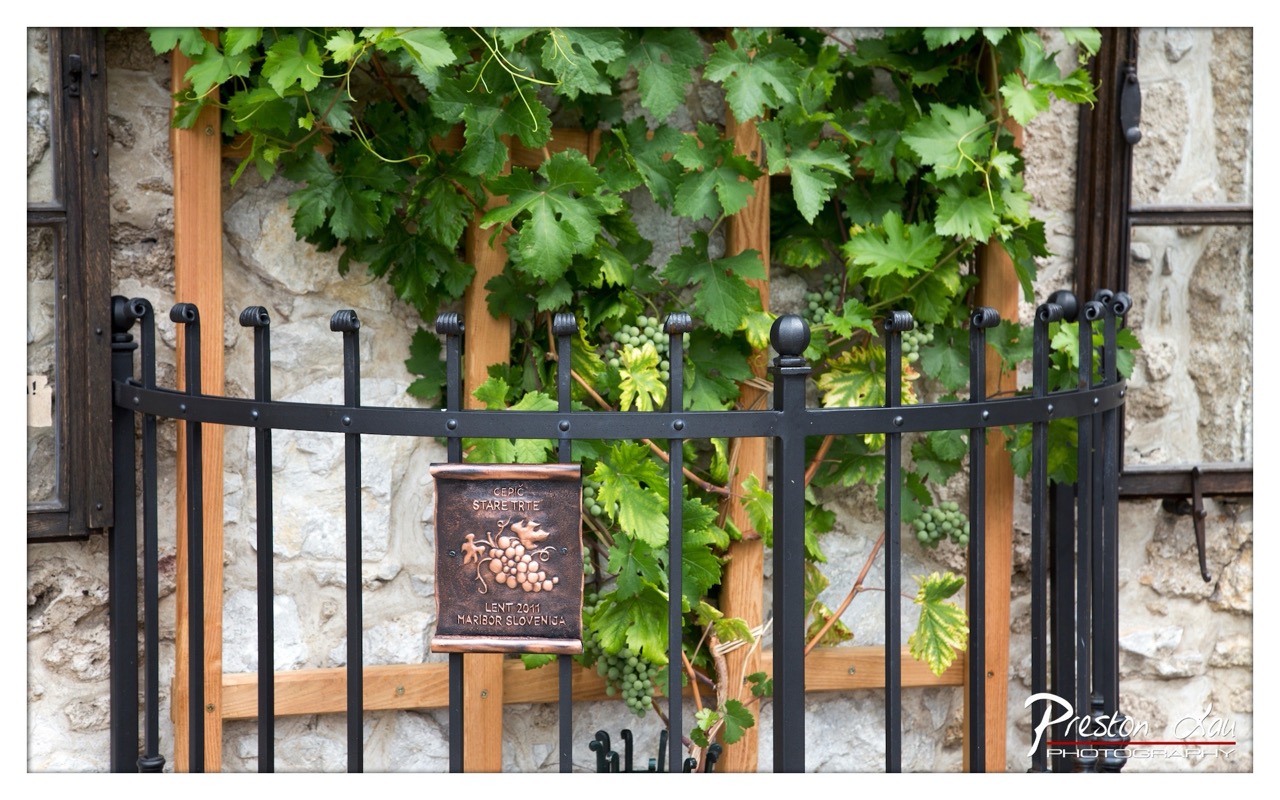

1. Overall Rating (0–10) — 7.0
This photograph captures the quiet charm of a traditional vineyard setting, where nature and craftsmanship coexist in harmony. The interplay of the weathered stone, lush green vines, and ornate metalwork evokes a sense of timelessness and place. While the image is rich in detail and texture, its emotional resonance is slightly restrained by a lack of dynamic lighting and a somewhat static composition.
2. Composition (0–10) — 6.5
The central placement of the plaque draws focus, but the symmetrical arrangement of the fence and vines creates a rigid, predictable frame. A more off-center composition or tighter crop could enhance visual interest and guide the eye more effectively.
3. Lighting (0–10) — 6.0
Soft, diffused daylight evenly illuminates the scene, preserving detail in both the foliage and the metalwork. However, the lack of strong directional light or shadows reduces depth and gives the image a flat, almost documentary feel.
4. Color & Tone (0–10) — 7.0
The natural palette of verdant greens, earthy stone, and deep black iron creates a cohesive and harmonious tone. The subtle patina on the plaque adds warmth and age, enhancing the image’s rustic authenticity.
5. Creativity (0–10) — 6.5
The image successfully captures a moment of rural elegance, but its approach is more observational than interpretive. The inclusion of the plaque adds narrative weight, but the overall concept remains grounded in straightforward documentation.
6. Technical Quality (0–10) — 8.0
The image is sharp and well-focused, with excellent clarity in both the foreground and background elements. The fine details of the vine leaves and the metalwork are rendered with precision.
7. Emotional Impact (0–10) — 6.5
The photograph evokes a sense of quiet reverence for tradition and place, but the emotional connection is subtle. The viewer is invited to observe rather than feel, making the experience more contemplative than stirring.
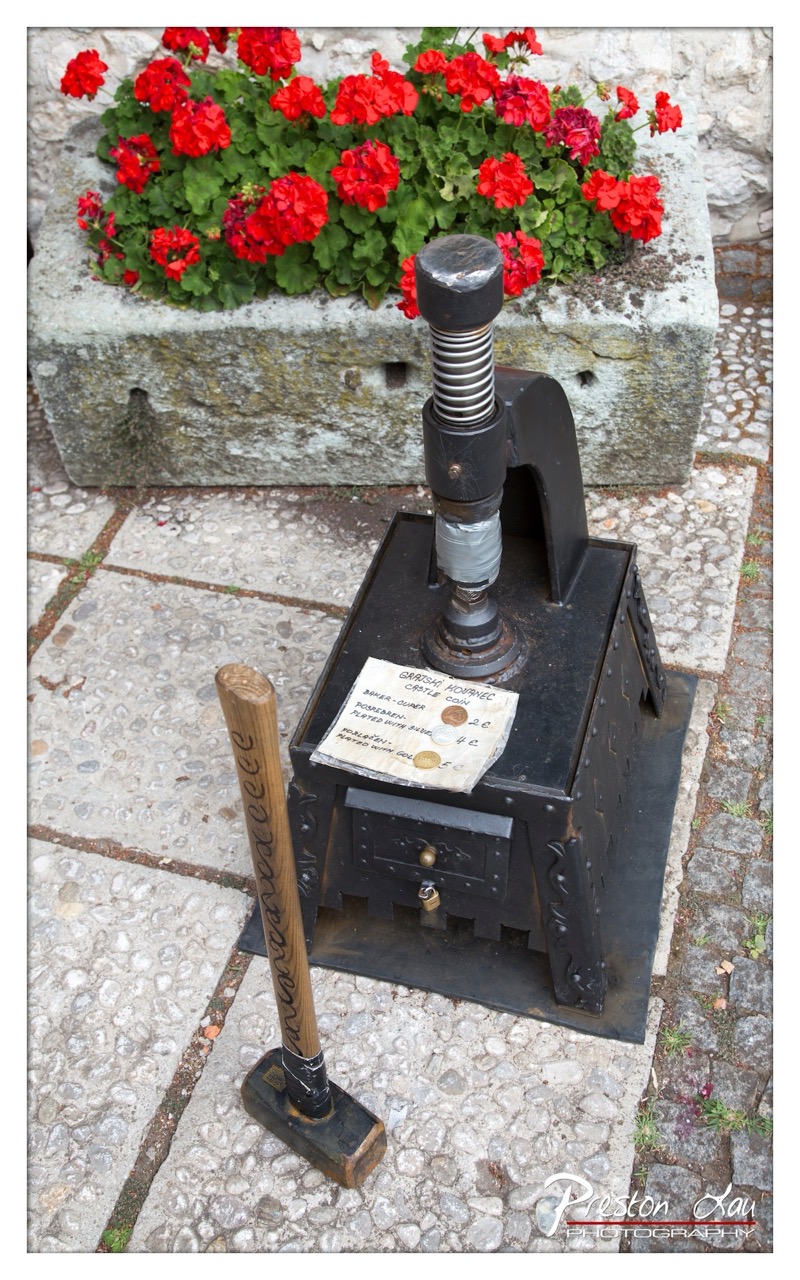

1. Overall Rating (0–10) — 7.0
This photograph captures a quiet, historical moment, juxtaposing the rugged charm of a vintage coin press with the soft vibrancy of red flowers in a stone planter. The contrast between industrial machinery and natural beauty creates a compelling narrative of tradition and endurance. While the composition is strong and the subject matter rich with story, the lighting and framing slightly limit its visual impact.
2. Composition (0–10) — 7.0
The coin press is centered effectively, with the hammer leading the eye into the frame. The planter in the background provides a natural frame, though the slightly tilted angle introduces a subtle imbalance.
3. Lighting (0–10) — 6.5
Natural daylight provides even illumination, but the overcast quality softens shadows and reduces depth. The light is functional, but lacks the warmth or drama that would elevate the scene.
4. Color & Tone (0–10) — 7.5
The rich reds of the geraniums pop against the muted stone and black metal, creating a strong focal point. The tonal range is balanced, with the dark press grounding the image while the greens and reds add life and contrast.
5. Creativity (0–10) — 7.0
The juxtaposition of historical machinery and vibrant flora is inherently creative, suggesting a story of continuity between past and present. The inclusion of the handwritten note adds authenticity and intrigue.
6. Technical Quality (0–10) — 8.0
Sharp focus and clear detail are evident throughout, particularly in the textures of the metal, wood, and stone. The image is well-exposed with no visible flaws.
7. Emotional Impact (0–10) — 6.5
There’s a quiet nostalgia in the image—evoking a sense of heritage and craftsmanship. The viewer is invited to imagine the hands that once operated the press, but the emotional pull is gentle rather than profound.
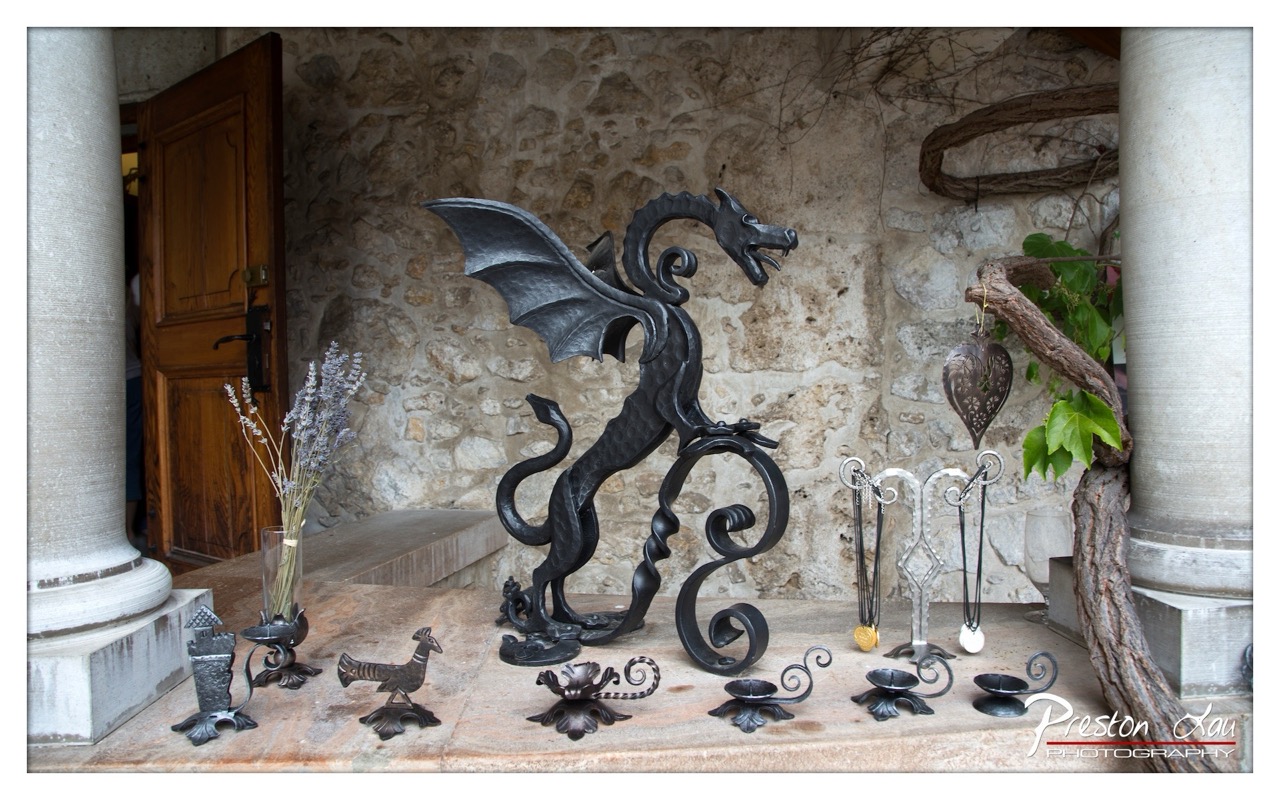

1. Overall Rating (0–10) — 7.5
This photograph captures a striking display of artisanal blacksmith work, centered around a dramatic, sculptural dragon that exudes both strength and elegance. The interplay of the wrought iron pieces against the rustic stone wall creates a compelling contrast between the crafted and the natural, while the arrangement feels curated and intentional. While the scene is rich in detail and texture, the composition’s slight clutter and overexposed highlights prevent it from achieving a truly refined balance.
2. Composition (0–10) — 7.0
The central dragon dominates the frame, drawing the eye with its dynamic pose, while surrounding objects create a sense of narrative depth. However, the arrangement feels slightly crowded, and the framing cuts off the lower portions of some pieces, disrupting visual harmony.
3. Lighting (0–10) — 6.5
Natural light from the left illuminates the scene, casting subtle shadows that accentuate the textures of the metal and stone. However, some areas, particularly the right side and the columns, are overexposed, washing out detail and creating a slight imbalance.
4. Color & Tone (0–10) — 7.0
The dark, matte tones of the iron pieces contrast beautifully with the muted earthy tones of the stone wall and the soft lavender hues of the dried flowers. The overall palette is cohesive and grounded, though the white highlights in the pillars slightly disrupt the tonal continuity.
5. Creativity (0–10) — 8.0
The concept of showcasing handcrafted metalwork in a historic setting is both evocative and imaginative. The choice to feature a mythical dragon as the centerpiece adds a layer of storytelling, suggesting craftsmanship rooted in tradition and fantasy.
6. Technical Quality (0–10) — 7.5
The image is sharp and detailed, especially in the central metalwork. The focus is well-managed, capturing fine textures. However, the exposure control could be improved to preserve detail in the brighter areas.
7. Emotional Impact (0–10) — 7.5
The photograph evokes a sense of craftsmanship, heritage, and quiet pride. The dragon, both fierce and graceful, invites the viewer to imagine the stories behind its creation, making the image feel both personal and timeless.
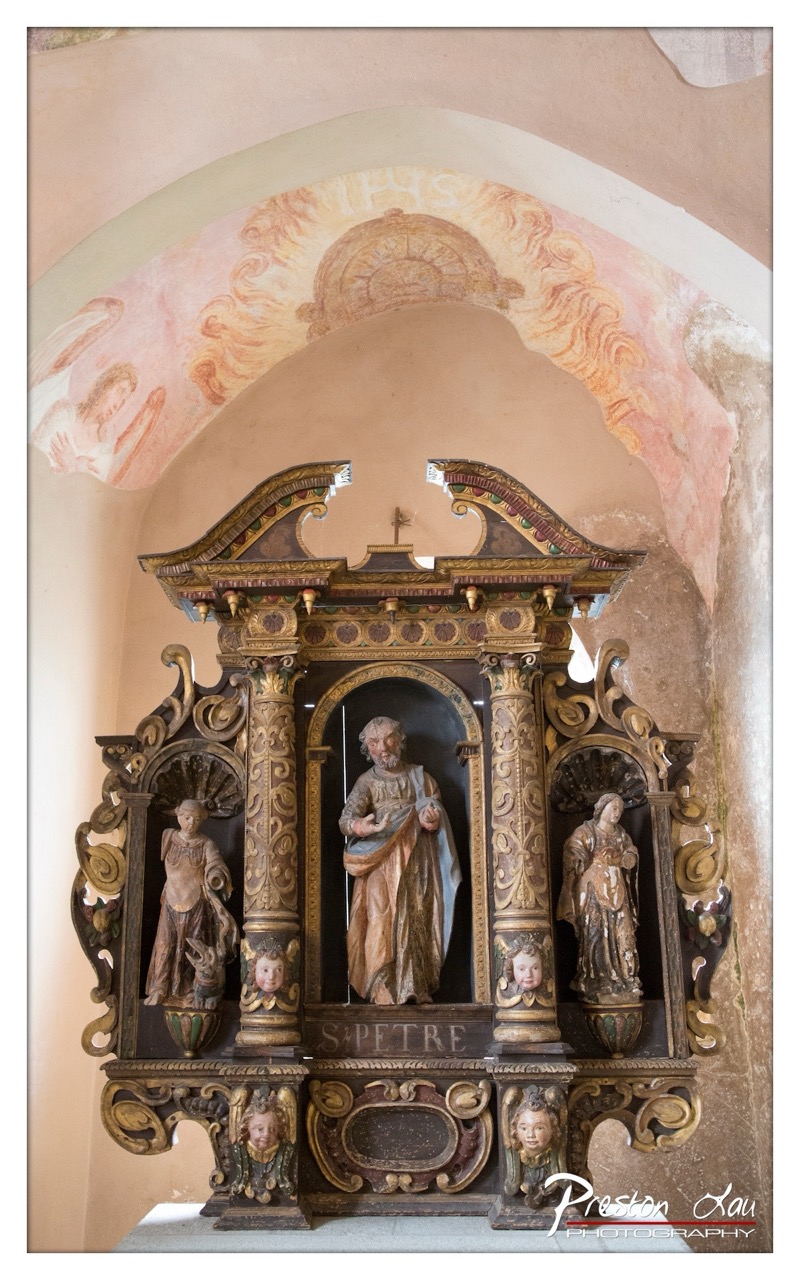

1. Overall Rating (0–10) — 7.5
This photograph captures the ornate grandeur of a religious altar with a reverent stillness, where centuries of craftsmanship and devotion converge. The rich textures of the gilded woodwork and the faded frescoes above create a layered narrative of faith and time, though the image's depth is slightly diminished by a muted tonal range. The composition balances detail and atmosphere, offering a contemplative glimpse into sacred artistry—its strength lies in its historical authenticity, not in dramatic visual flair.
2. Composition (0–10) — 7.0
The altar is centered within the arched frame, creating a natural focal point that draws the eye to the central figure of Saint Peter. The symmetry of the flanking niches and the arch above provide visual harmony, though the slight tilt of the frame and the uneven wall edge disrupt perfect balance.
3. Lighting (0–10) — 6.5
Soft, diffused light illuminates the altar evenly, highlighting the intricate carvings without harsh shadows. The lighting feels natural and respectful of the space, though it lacks the dramatic contrast that might enhance the three-dimensionality of the sculpture.
4. Color & Tone (0–10) — 7.0
The warm, earthy palette—gold, ochre, and soft pink—evokes a sense of age and reverence. While the colors are rich and authentic, the overall tone is slightly desaturated, giving the image a subdued, almost photographic documentary quality.
5. Creativity (0–10) — 7.5
The photograph successfully captures the spiritual and historical essence of the altar, using the architectural framing to enhance the subject’s significance. The inclusion of the fresco above adds depth, creating a subtle dialogue between sculpture and painting.
6. Technical Quality (0–10) — 8.0
The image is sharp and detailed, with excellent clarity in the carvings and inscriptions. The focus is consistent across the subject, and the digital clarity preserves the texture of the wood and paint.
7. Emotional Impact (0–10) — 7.0
The image evokes a quiet sense of awe and reverence, inviting the viewer to reflect on the devotion embedded in the craftsmanship. While not emotionally overwhelming, it resonates with a solemn dignity that lingers.
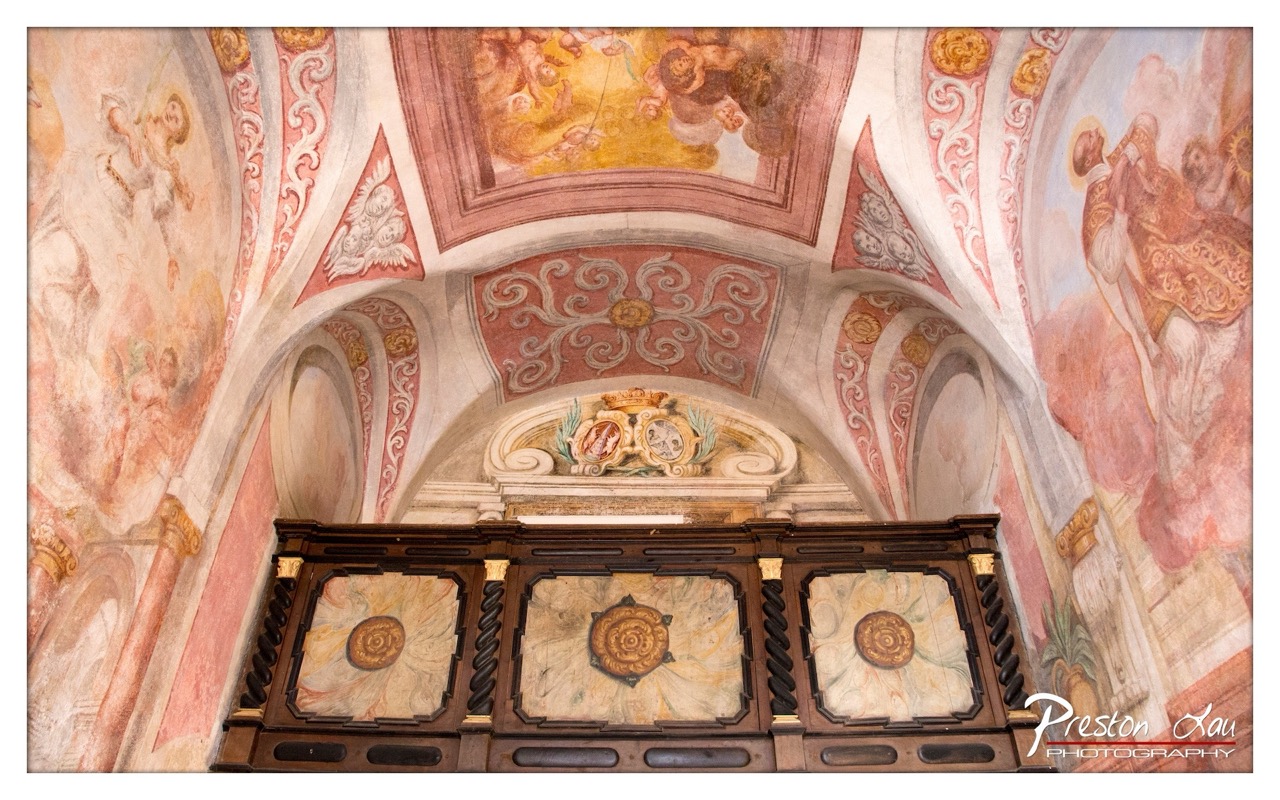

1. Overall Rating (0–10) — 8.0
This photograph captures the opulent grandeur of a Baroque interior with richly detailed frescoes and ornate woodwork, evoking a sense of sacred history and artistic mastery. The composition draws the eye upward, emphasizing the ceiling’s elaborate paintings and the symmetry of the space, while the warm, aged tones lend a timeless quality. Though the scene is visually dense, the image remains balanced and harmonious, offering a compelling glimpse into a place of cultural and spiritual significance.
2. Composition (0–10) — 8.5
The image is framed with strong symmetry, using the arches and the wooden structure as natural leading lines that guide the viewer’s gaze toward the central fresco and the decorative crest above. The low angle enhances the sense of verticality and grandeur, while the placement of the organ or screen anchors the lower third, creating a stable and visually pleasing structure.
3. Lighting (0–10) — 7.5
The lighting is soft and diffused, likely from natural sources, which gently illuminates the frescoes and highlights their texture without creating harsh shadows. The subtle interplay of light and shadow enhances the three-dimensionality of the architectural elements and the depth of the painted figures.
4. Color & Tone (0–10) — 8.0
The warm palette of rose, gold, and cream tones is harmonious and evocative of the Baroque period’s aesthetic. The slightly aged appearance of the paint adds a sense of authenticity and history, while the contrast between the richly colored frescoes and the darker woodwork provides visual interest and depth.
5. Creativity (0–10) — 8.0
The photographer has chosen a compelling perspective that emphasizes both the architectural symmetry and the narrative richness of the frescoes. The image tells a story of devotion, artistry, and time, capturing not just a space but a moment of cultural memory.
6. Technical Quality (0–10) — 8.5
The image is sharp and detailed, with excellent clarity in both the frescoes and the woodwork. The focus is precise, and the exposure is well-balanced, preserving fine textures and subtle tonal variations without overexposure or loss of detail.
7. Emotional Impact (0–10) — 8.5
The photograph evokes a sense of awe and reverence, inviting the viewer to contemplate the artistry and devotion behind the space. The combination of visual richness and historical depth creates a powerful emotional resonance, making the viewer feel as though they are standing in a sacred, living monument.
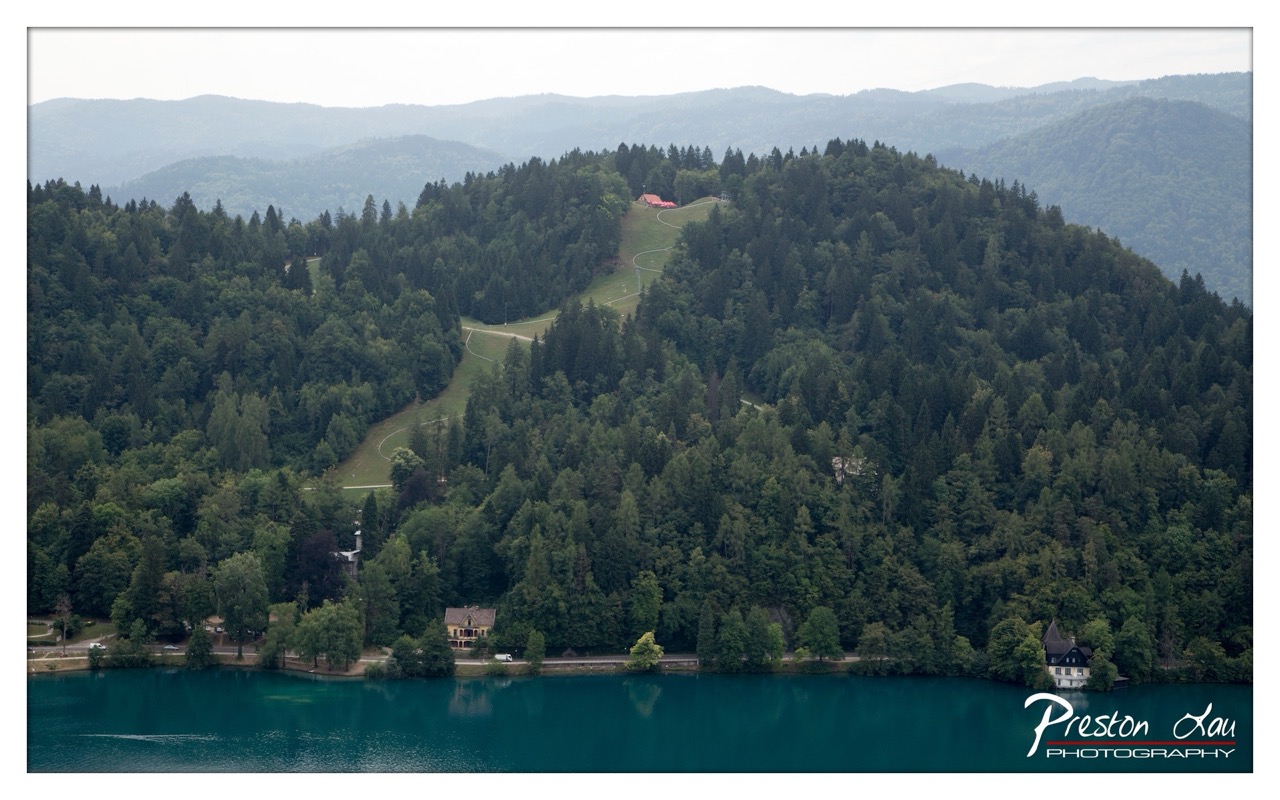

1. Overall Rating (0–10) — 7.0
This photograph captures the serene majesty of a forested hillside descending into a tranquil lake, with layers of misty mountains receding into the distance. The composition balances natural grandeur with subtle human presence—cottages nestled along the shore and a winding path cutting through the trees—creating a sense of quiet harmony between civilization and wilderness. While the overcast sky tempers the scene’s vibrancy, the cool, muted palette enhances its contemplative mood, making it feel both expansive and intimate.
2. Composition (0–10) — 7.5
The wide, elevated perspective frames the landscape with a natural sense of depth, guiding the eye from the foreground lake up the tree-covered slope toward the distant ridgeline. The winding path and scattered buildings provide subtle visual anchors, preventing the lush greenery from feeling overwhelming.
3. Lighting (0–10) — 6.0
Diffused, overcast light softens shadows and creates a uniform exposure across the scene, which enhances the atmospheric mood but reduces texture and contrast. The lack of direct sunlight limits the richness of the foliage and water, giving the image a slightly flat quality.
4. Color & Tone (0–10) — 7.0
The palette is dominated by cool greens and blues, with the turquoise of the lake providing a striking contrast to the darker forest. The tonal range is well-balanced, with subtle variations in green hue adding depth, though the overall desaturation slightly dampens the scene’s vibrancy.
5. Creativity (0–10) — 6.5
The image succeeds in capturing a moment of natural tranquility with a strong sense of place. The inclusion of the red-roofed building and winding path adds narrative intrigue, suggesting human connection to the landscape without disrupting its serenity.
6. Technical Quality (0–10) — 8.0
The image is sharp and well-focused throughout, with clean detail in both the foreground and background. The exposure is balanced, and the watermark is discreet, preserving the photo’s integrity.
7. Emotional Impact (0–10) — 7.5
The photograph evokes a sense of peace and solitude, inviting the viewer to imagine a quiet retreat in nature. The layered landscape and soft light create a contemplative atmosphere, encouraging reflection on the relationship between people and the natural world.
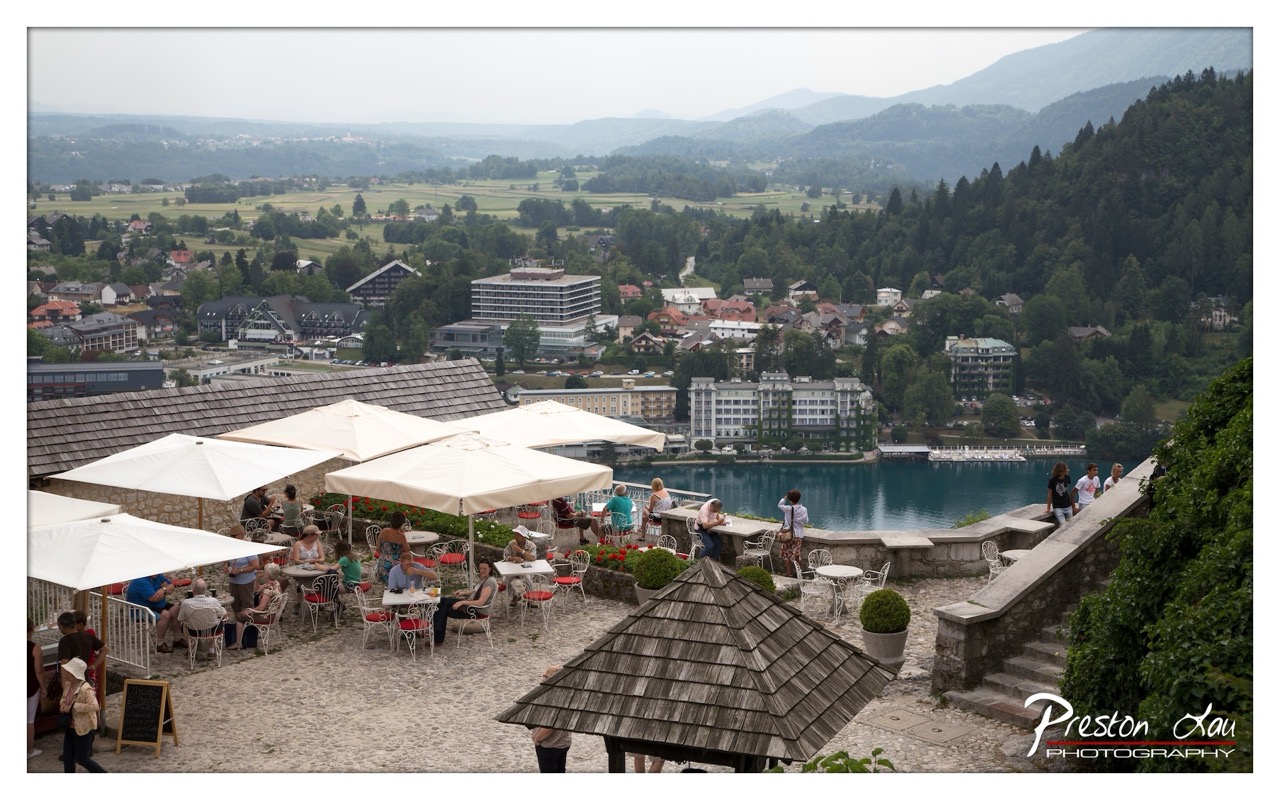

1. Overall Rating (0–10) — 7.0
This photograph captures a serene, sun-dappled lakeside terrace overlooking a picturesque town nestled in a lush valley, evoking a sense of peaceful leisure and natural beauty. The composition balances human activity with expansive landscape, creating a narrative of place and tranquility. While the image is visually rich and inviting, the overcast sky tempers its emotional intensity, and the slightly cluttered foreground risks distracting from the sweeping vista beyond.
2. Composition (0–10) — 7.0
The foreground terrace with its white umbrellas and tables anchors the image, drawing the eye toward the lake and distant mountains. The diagonal sweep of the stone balustrade and the sloping roof of the pavilion create a dynamic leading line, guiding the viewer through the scene. However, the crowded arrangement of tables and people introduces visual busyness that slightly disrupts the sense of harmony.
3. Lighting (0–10) — 6.0
Diffused, overcast light softens the scene, minimizing harsh shadows and allowing for even exposure across the landscape. While this creates a gentle, uniform tone, it also reduces contrast and depth, muting the vibrancy of the natural colors and diminishing the atmospheric drama that might come from golden hour light.
4. Color & Tone (0–10) — 6.5
The palette is dominated by muted greens, grays, and earth tones, with the cream of the umbrellas and the white of the buildings providing contrast. The turquoise of the lake offers a subtle pop of color, but the overall tone is subdued due to the cloudy conditions. A touch more saturation could enhance the visual appeal without compromising authenticity.
5. Creativity (0–10) — 7.0
The image successfully merges everyday life with a majestic landscape, creating a layered narrative that invites contemplation. The choice to frame the scene from an elevated, intimate vantage point adds a sense of discovery, making the viewer feel as though they are part of the moment. The blend of human presence and natural grandeur reflects a thoughtful, observational approach.
6. Technical Quality (0–10) — 8.0
The photograph is sharp and well-focused throughout, with fine detail visible in the cobblestones, the texture of the wooden shingles, and the distant buildings. The exposure is balanced, and there are no noticeable technical flaws such as blur or noise. The wide dynamic range captures both light and shadow details effectively.
7. Emotional Impact (0–10) — 6.5
The image evokes a calm, contemplative mood, capturing a quiet moment of leisure in a beautiful setting. The presence of people enjoying the view adds a touch of warmth and relatability, suggesting connection and contentment. While the overcast conditions temper the emotional warmth, the expansive view and sense of place still resonate with a quiet longing for escape and peace.
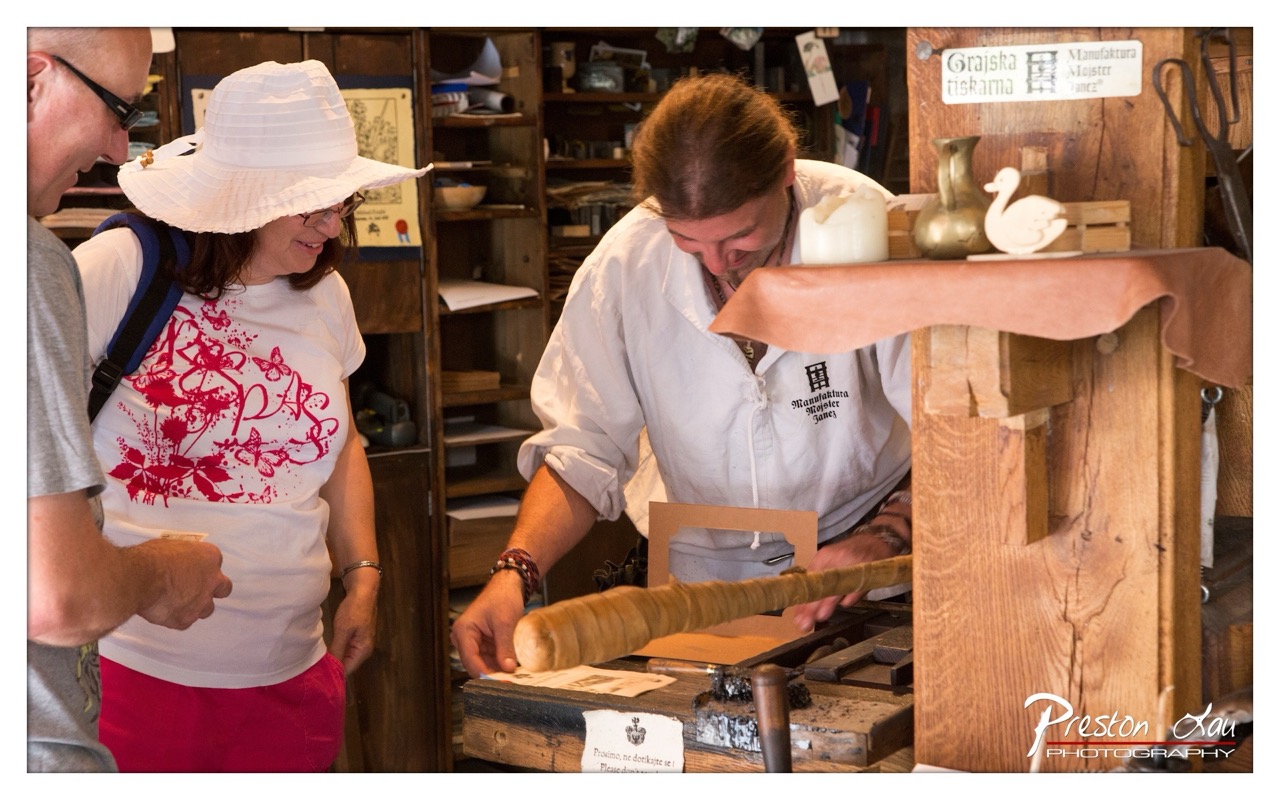

1. Overall Rating (0–10) — 7.5
This photograph captures a lively moment of cultural craftsmanship, where the artisan’s focused hands and the visitors’ engaged expressions create a sense of shared discovery. The warm, natural lighting and rich wooden textures lend the scene authenticity and warmth, though the composition feels slightly crowded, pulling attention from the central action. The image succeeds as both a document of tradition and a snapshot of human connection.
2. Composition (0–10) — 6.5
The frame is busy, with multiple figures and objects competing for attention. The artisan is the focal point, but the woman in the foreground partially obscures the view, and the sign in the upper right draws the eye away. A tighter crop would enhance focus on the crafting process.
3. Lighting (0–10) — 8.0
The lighting is warm and natural, enhancing the authenticity of the workshop environment. Soft shadows define the textures of wood and leather, while the highlights on the artisan’s hands and the wooden tool emphasize the tactile nature of the work.
4. Color & Tone (0–10) — 7.0
The palette is rich with earthy browns and warm tones, punctuated by the bright white hat and red floral print. The contrast between the vivid colors of the visitors' clothing and the subdued workshop setting creates visual interest without feeling chaotic.
5. Creativity (0–10) — 7.5
The photograph captures a narrative moment—tradition, craftsmanship, and tourism intersecting in a single frame. The artisan’s focused expression and the visitors’ curiosity lend emotional depth, making the image more than a simple snapshot.
6. Technical Quality (0–10) — 8.0
The image is sharp and well-exposed, with clear detail in the hands, tools, and textures. The focus is well-placed on the artisan’s work, and the depth of field effectively separates the subject from the background.
7. Emotional Impact (0–10) — 7.5
There is a quiet joy in the artisan’s concentration and the visitors’ fascination, conveying a sense of respect for heritage. The viewer is invited into a moment of cultural exchange, making the image both personal and universally relatable.
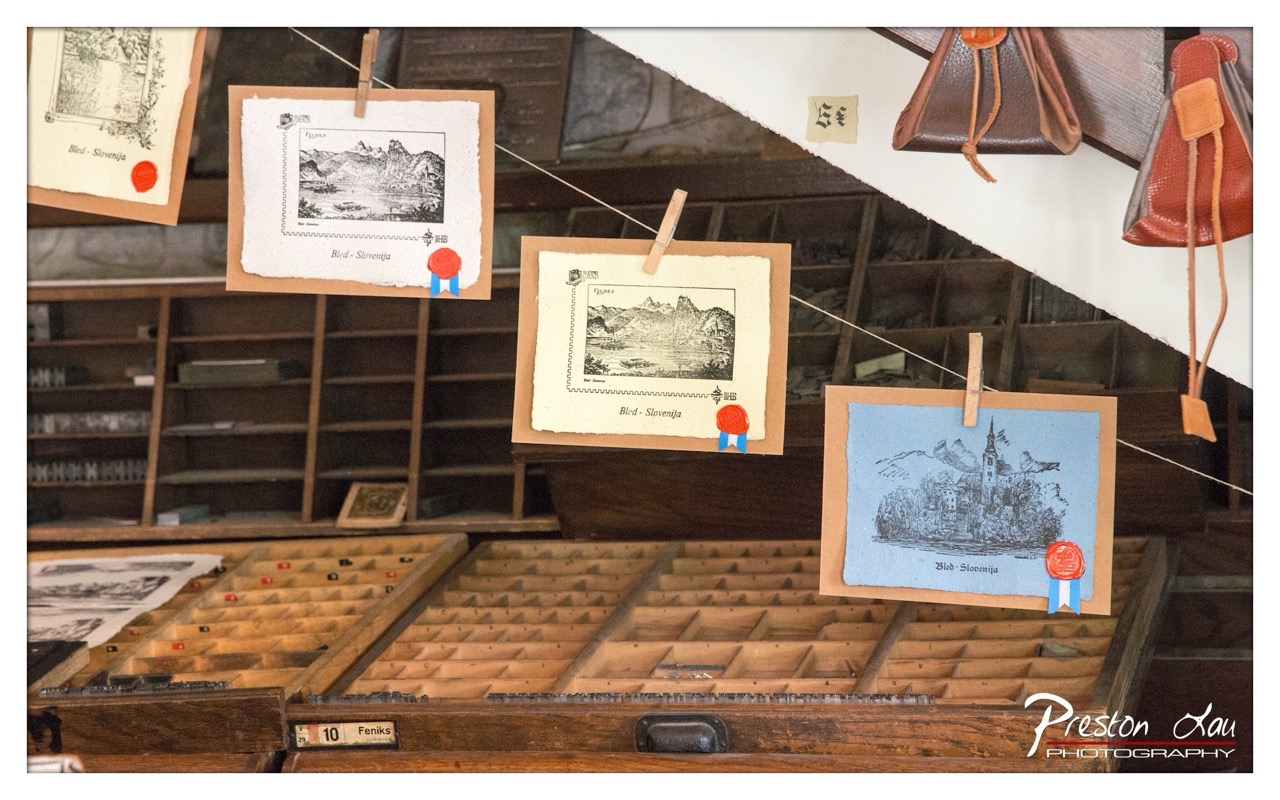

1. Overall Rating (0–10) — 7.0
This photograph captures the quiet charm of a traditional printing workshop, where history and craftsmanship intersect in a visually rich tableau. The hanging postcards, each adorned with wax seals and ribbons, evoke a sense of nostalgia and artisanal pride, while the wooden type cases below ground the scene in tangible, tactile tradition. Though the composition is slightly cluttered, the image successfully conveys the warmth and authenticity of a working print shop, inviting the viewer into a world of slow, deliberate creation.
2. Composition (0–10) — 6.5
The hanging postcards create a diagonal line that draws the eye across the frame, but the depth and layered elements—especially the shelves in the background—create visual busyness. A more focused focal point would enhance clarity.
3. Lighting (0–10) — 6.0
The lighting is soft and ambient, likely natural, which suits the vintage atmosphere. However, it’s uneven, with shadows in the lower shelves that obscure detail, reducing the overall visual balance.
4. Color & Tone (0–10) — 6.5
The palette is warm and muted, dominated by browns and earth tones, which enhances the historical feel. The blue-tinted postcard offers a subtle but effective contrast, adding visual interest without disrupting the harmony.
5. Creativity (0–10) — 7.0
The image is inventive in its storytelling, using the postcards and printing tools as narrative devices to evoke a sense of heritage. The inclusion of the wax seals and ribbons adds a layer of authenticity and craftsmanship.
6. Technical Quality (0–10) — 7.5
Sharp focus on the central postcards and clean detail in the wooden type cases demonstrate strong technical execution. The depth of field is appropriate, though the background remains slightly soft.
7. Emotional Impact (0–10) — 6.5
The photograph evokes a quiet reverence for tradition and handcraft, stirring a sense of nostalgia and appreciation for old-world methods. While it doesn’t elicit strong emotion, it lingers in the mind as a gentle tribute to artisanal heritage.
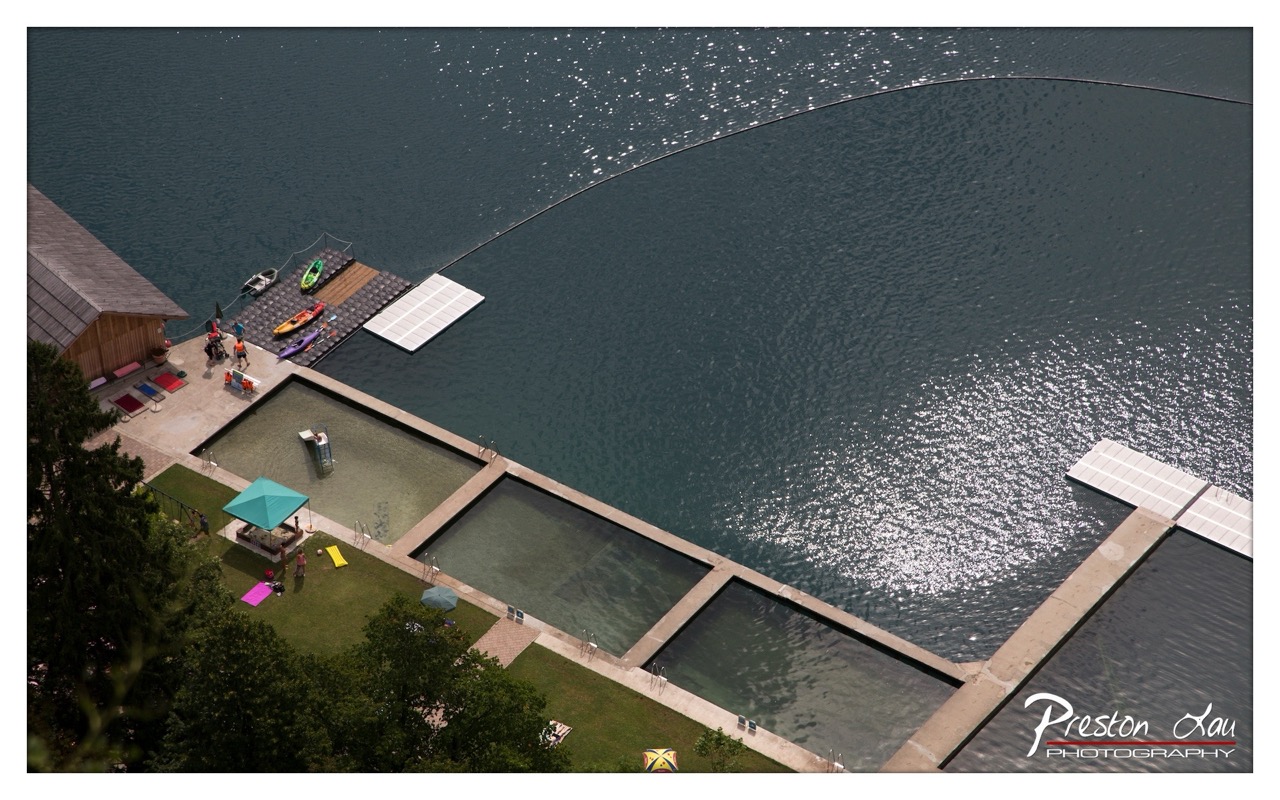

1. Overall Rating (0–10) — 7.0
This aerial photograph captures a serene lakeside recreational area with a quiet, contemplative mood, where human activity blends harmoniously with natural surroundings. The high vantage point offers a compelling overview of the layout, emphasizing the interplay between the man-made pools and the expansive lake, though the image's potential is slightly restrained by a lack of dynamic lighting and a somewhat muted color palette.
2. Composition (0–10) — 7.5
The diagonal flow of the docks and pools creates a strong visual path leading the eye from the lower-left toward the upper-right, with the curved shoreline adding organic contrast. The framing feels intentional, though the slight crop on the left edge disrupts full balance.
3. Lighting (0–10) — 6.5
The bright, direct sunlight creates strong specular highlights on the water’s surface, adding texture and energy, but the overall exposure is slightly flat in the shaded areas, diminishing depth and detail in the grass and buildings.
4. Color & Tone (0–10) — 6.0
The cool blue-green tones of the water dominate, creating a calm mood, while the earthy browns and muted greens of the land offer grounding contrast. The color palette is cohesive but lacks vibrancy, with the greens appearing somewhat dull and the sky nearly absent from the frame.
5. Creativity (0–10) — 7.0
The elevated perspective transforms a familiar lakeside scene into something more abstract and composed, emphasizing geometric patterns and spatial relationships. The inclusion of people adds narrative without disrupting the visual harmony.
6. Technical Quality (0–10) — 7.5
The image is sharp and well-focused throughout, with clean detail in both the water and the structures. The watermark is unobtrusive, and the exposure is generally well-managed despite the challenging light conditions.
7. Emotional Impact (0–10) — 6.5
The photograph evokes a sense of peaceful leisure and quiet connection to nature, inviting the viewer to imagine themselves in the scene. While the mood is pleasant and reflective, the emotional resonance is tempered by the somewhat detached, observational tone of the shot.
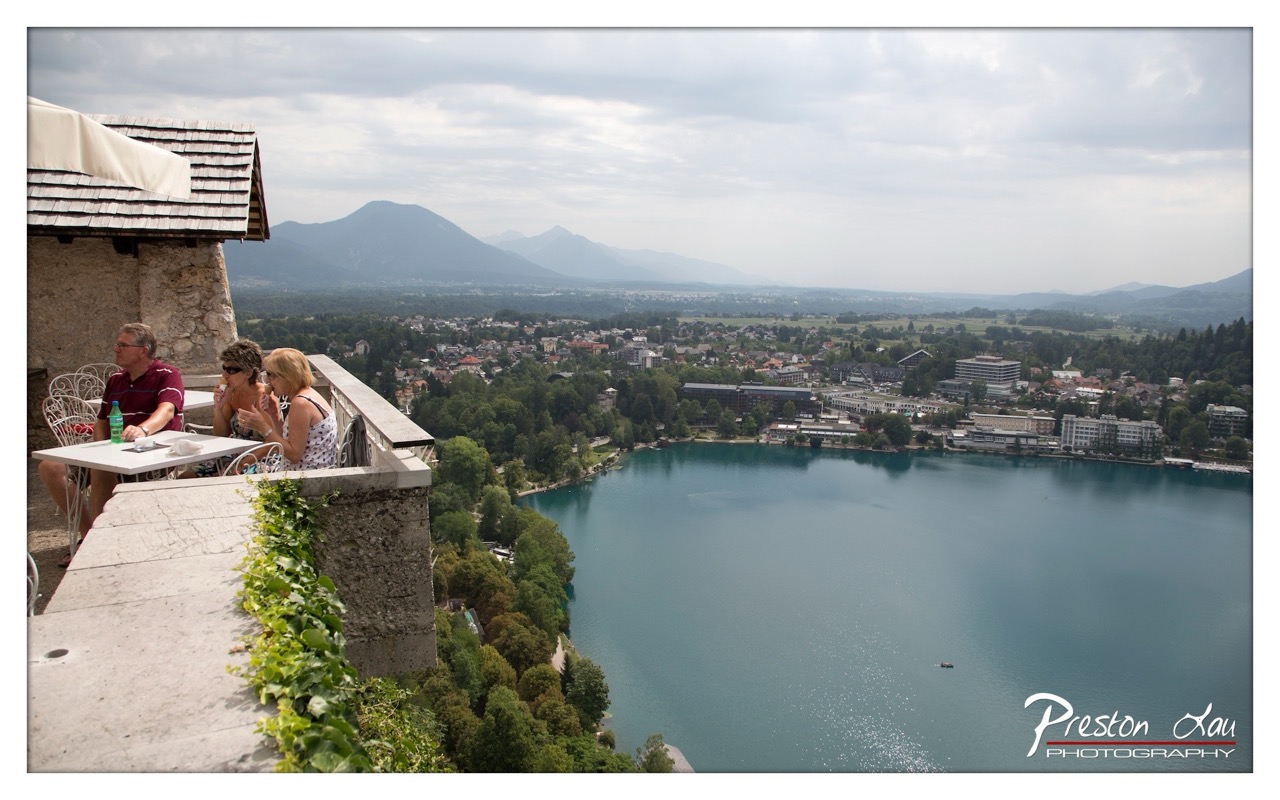

1. Overall Rating (0–10) — 7.5
This photograph captures a serene moment of leisure against a breathtaking alpine backdrop, where human presence harmonizes with nature’s grandeur. The composition balances intimate foreground activity with expansive landscape, creating a narrative of quiet contemplation. While the overcast sky tempers the vibrancy of the scene, the image succeeds in conveying both the scale of the setting and the subtle intimacy of shared experience.
2. Composition (0–10) — 7.0
The diagonal line of the terrace leads the eye from the people on the left toward the lake and mountains, creating a natural visual flow. The framing includes enough context to ground the scene without overwhelming it, though the composition feels slightly weighted to the left.
3. Lighting (0–10) — 6.0
Diffused light from the overcast sky softens shadows and evenly illuminates the scene, but results in muted contrast and a lack of dramatic depth. While the light is flattering for capturing detail, it dampens the emotional intensity of the moment.
4. Color & Tone (0–10) — 6.5
The palette is dominated by cool blues and greens, with soft, desaturated tones that reflect the cloudy atmosphere. While the colors are natural and cohesive, they lack richness, limiting the image’s visual punch.
5. Creativity (0–10) — 7.0
The photograph blends documentary realism with scenic beauty, capturing a candid moment within a majestic landscape. The inclusion of people adds narrative depth, transforming a standard travel view into a story of human connection with place.
6. Technical Quality (0–10) — 8.0
The image is sharp and well-focused throughout, with clear detail in both the foreground and background. The exposure is balanced, and the lens choice effectively captures the wide vista without distortion.
7. Emotional Impact (0–10) — 7.0
The photograph evokes a sense of peace and reflection, inviting the viewer to imagine the quiet conversation and shared awe of the subjects. The expansive view and relaxed posture of the people create a mood of contentment and escape.
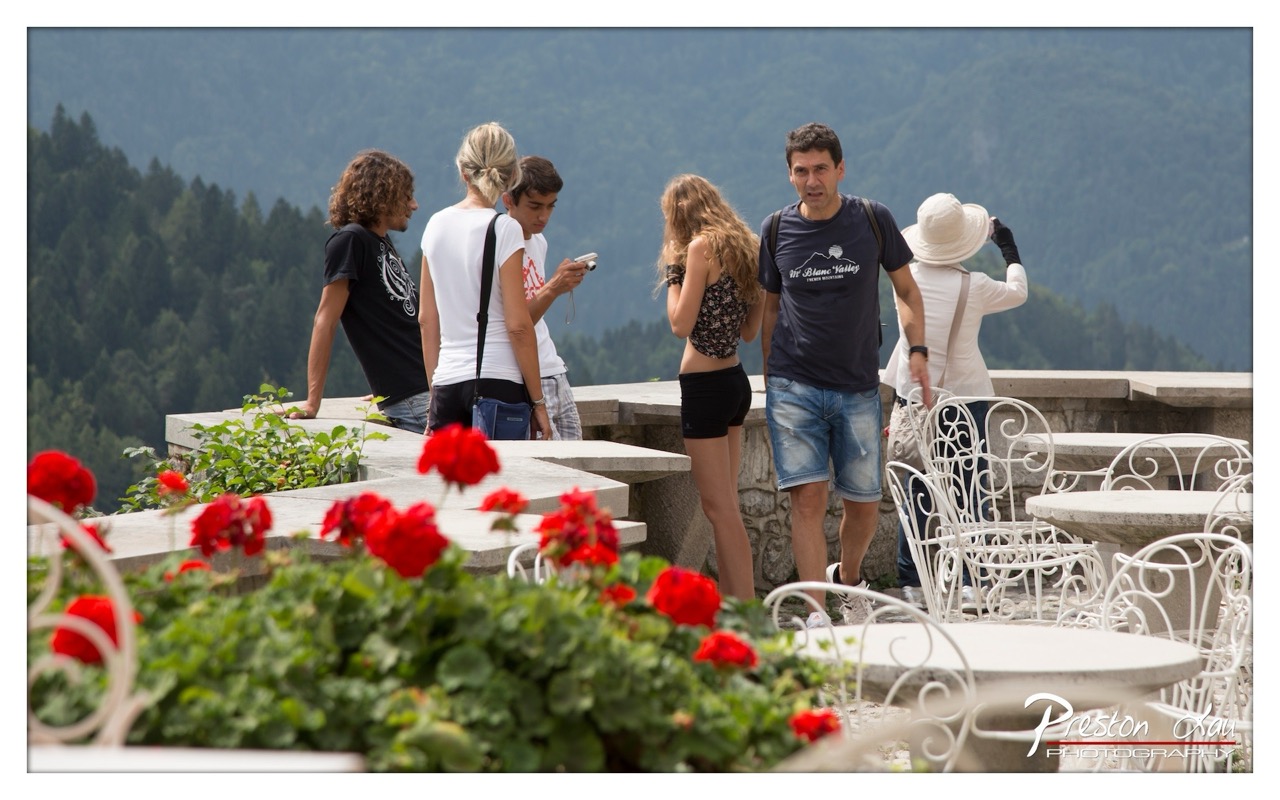

1. Overall Rating (0–10) — 7.0
This photograph captures a candid moment of travelers at a scenic overlook, where natural beauty meets human curiosity. The vibrant red geraniums in the foreground create a strong visual anchor, while the distant forested mountains provide a serene backdrop. The composition balances everyday life with landscape, though the casual, unposed nature of the subjects slightly tempers the image’s overall polish.
2. Composition (0–10) — 7.0
The foreground flowers create depth and lead the eye toward the group, while the stone railing and white wrought-iron furniture frame the scene. The subjects are arranged naturally, creating a sense of movement and narrative, though the central cluster of people feels slightly crowded and disrupts the visual flow.
3. Lighting (0–10) — 6.5
The scene is illuminated by soft, diffused daylight, likely from an overcast sky, which evenly lights the subjects and minimizes harsh shadows. This lighting suits the tranquil mood but reduces contrast and depth in the background, slightly muting the mountainous landscape.
4. Color & Tone (0–10) — 7.5
The rich reds of the flowers contrast beautifully with the muted greens and grays of the background, creating a pleasing palette. The cool tones of the mountains and the neutral whites of the furniture harmonize well, while the warm reds add vibrancy and visual interest.
5. Creativity (0–10) — 7.0
The photographer blends documentary realism with scenic beauty, capturing a genuine travel moment rather than a staged portrait. The use of the flowers as a foreground element adds a creative layer, transforming a simple snapshot into a more layered composition.
6. Technical Quality (0–10) — 8.0
The image is sharp and well-focused, particularly on the foreground elements, with clean detail throughout. The depth of field is appropriately managed, allowing the subjects to remain clear while subtly blurring the background. The watermark is professionally placed and unobtrusive.
7. Emotional Impact (0–10) — 6.5
The image evokes a sense of quiet travel and shared experience, with the group’s varied postures suggesting conversation and observation. While the emotional resonance is present, the lack of a strong focal point or expressive moment keeps the viewer from fully connecting with the scene.
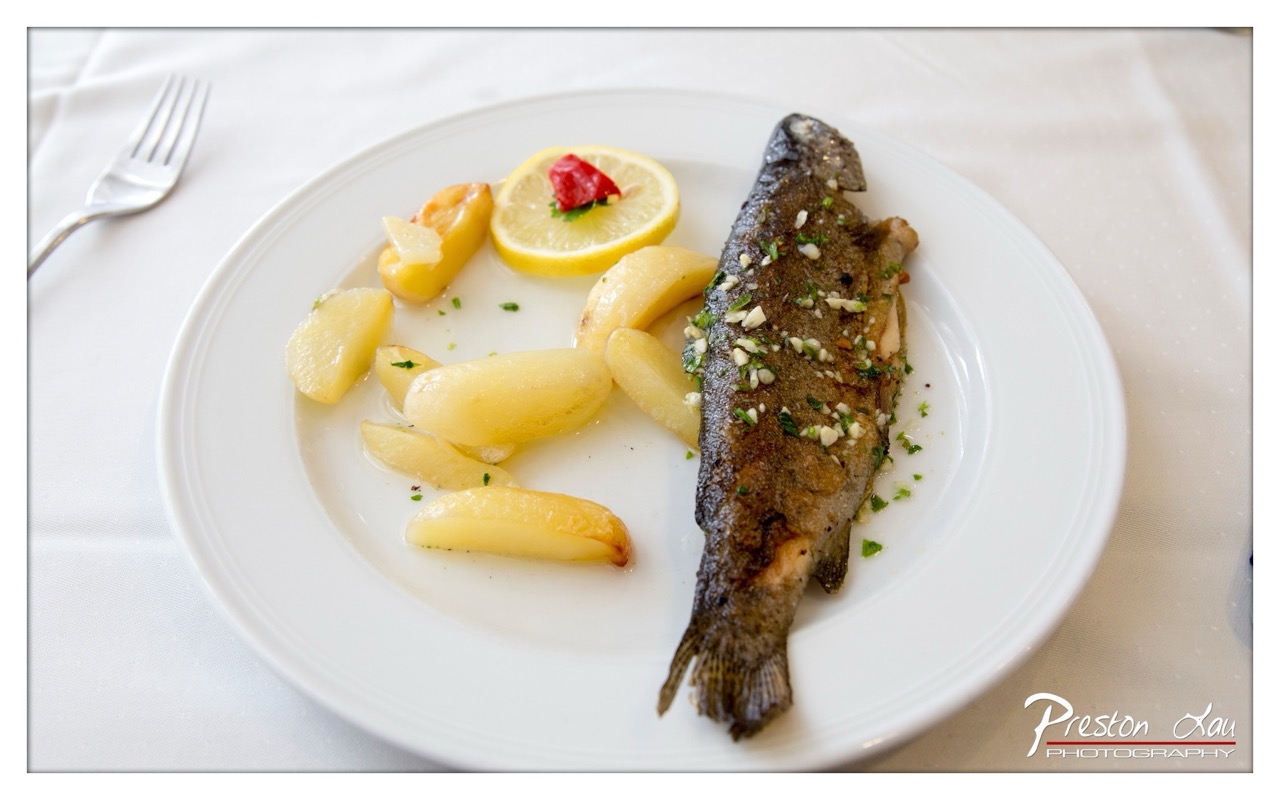

1. Overall Rating (0–10) — 7.0
This photograph presents a well-composed dish that balances rustic charm with refined presentation, capturing the essence of a thoughtfully prepared meal. The roasted fish and golden potatoes are rendered with clarity and appeal, while the lemon garnish adds a pop of color and freshness. The image’s strength lies in its clean, appetizing aesthetic, though it remains slightly restrained in emotional depth and visual dynamism.
2. Composition (0–10) — 7.5
The plate is centered with a natural asymmetry, allowing the fish to dominate while the potatoes and garnish create visual interest on the left. The fork in the upper left adds context without disrupting the balance, and the shallow depth of field gently isolates the subject.
3. Lighting (0–10) — 7.0
Soft, diffused lighting enhances the textures of the fish skin and potatoes without creating harsh shadows. The light direction highlights the dish’s contours and gives the scene a warm, inviting quality, though a touch more directional contrast could add dimension.
4. Color & Tone (0–10) — 7.5
The palette is harmonious, with the golden yellows of the potatoes and lemon complementing the earthy tones of the fish. The white plate and tablecloth provide a clean backdrop that lets the food’s colors stand out, while the red chili garnish introduces a subtle but effective accent.
5. Creativity (0–10) — 6.5
The image is straightforward and functional in its storytelling—focusing on the dish rather than a conceptual interpretation. While it lacks bold artistic experimentation, the thoughtful arrangement and attention to detail reflect a clear intent to celebrate the meal.
6. Technical Quality (0–10) — 8.0
Sharp focus on the fish and garnish, with a clean background and minimal noise, demonstrates strong technical execution. The depth of field is well-controlled, drawing the eye to the central elements.
7. Emotional Impact (0–10) — 6.5
The photograph evokes a sense of quiet satisfaction and culinary care, appealing to the viewer’s appetite and appreciation for well-prepared food. While it doesn’t stir deep emotion, it succeeds in creating a pleasant, relatable moment of dining.
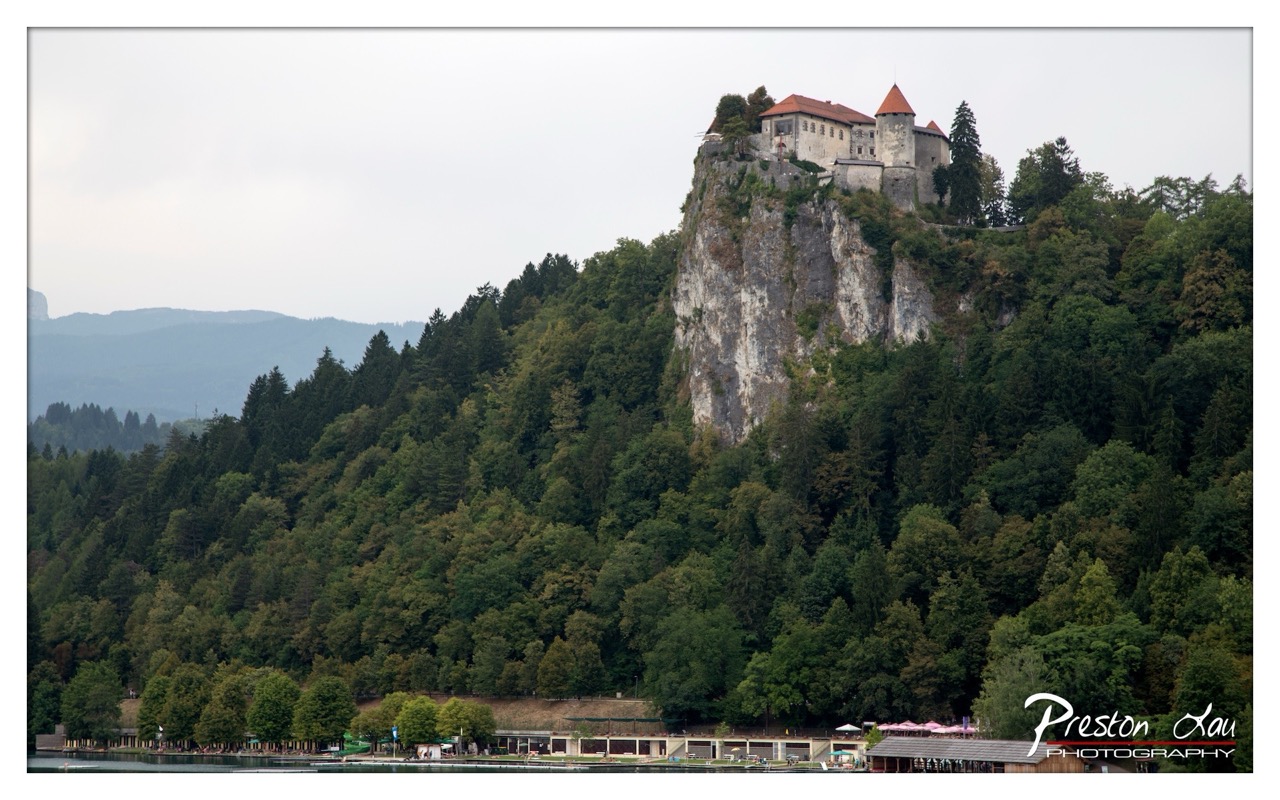

1. Overall Rating (0–10) — 7.0
This photograph captures the majestic presence of a castle perched atop a rugged cliff, framed by dense forest and a tranquil lake. The composition effectively conveys the grandeur and isolation of the structure, while the overcast sky lends a contemplative, almost cinematic mood. While the image is visually strong, the muted lighting and slightly flat color palette temper its emotional punch, preventing it from fully realizing its potential.
2. Composition (0–10) — 7.5
The castle is well-placed near the top right, drawing the eye upward along the cliff face, while the expansive forest and lake provide a sense of scale and balance. The horizontal line of the shoreline grounds the image, though the lower third feels slightly cluttered with structures and trees.
3. Lighting (0–10) — 6.0
The overcast sky results in soft, diffused light that minimizes harsh shadows, allowing for even exposure across the scene. However, the lack of directional light and contrast gives the image a somewhat flat and subdued quality.
4. Color & Tone (0–10) — 6.5
The palette is dominated by cool greens and grays, creating a cohesive, naturalistic tone. While the colors are well-matched, the overall tone is muted, and a touch more saturation could enhance the richness of the foliage and the texture of the stone.
5. Creativity (0–10) — 7.0
The image presents a classic landscape subject with a strong sense of place, emphasizing the harmony between architecture and nature. The photographer’s choice to frame the castle from a distance and include the lake and surrounding landscape adds narrative depth.
6. Technical Quality (0–10) — 8.0
The image is sharp and well-focused, with clear details in both the castle and the foreground. The exposure is balanced, and the resolution is high, allowing for a clean print or display.
7. Emotional Impact (0–10) — 6.5
The scene evokes a sense of timelessness and quiet awe, inviting the viewer to imagine the history embedded in the castle’s walls. While the emotional resonance is present, the subdued lighting and lack of dynamic elements keep the impact from being fully immersive.
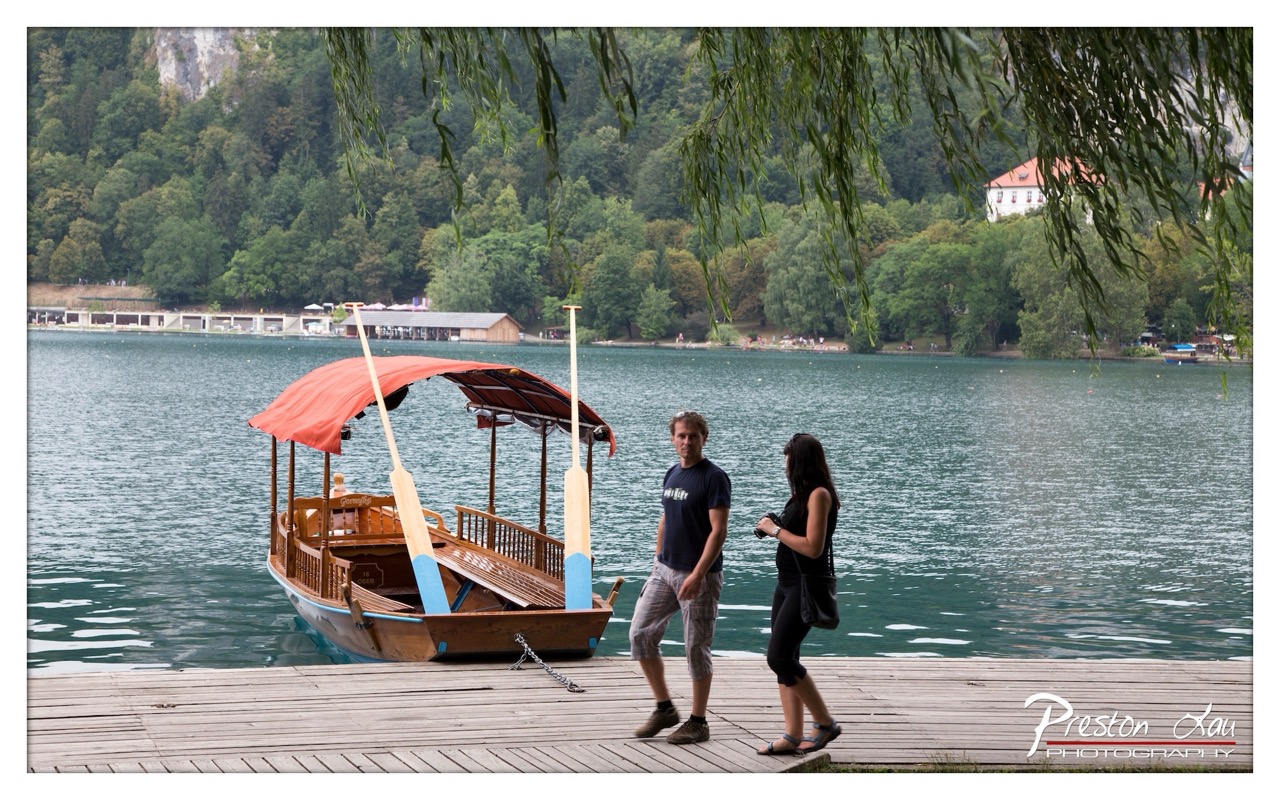

1. Overall Rating (0–10) — 7.0
This photograph captures a serene lakeside moment with a strong sense of place, blending natural beauty and human presence in a balanced, contemplative composition. The weeping willow framing the top of the image adds depth and a touch of elegance, while the traditional wooden boat and distant shoreline evoke a timeless charm. Though the scene feels slightly staged, the natural lighting and thoughtful composition elevate it beyond a simple travel snapshot into something more evocative and memorable.
2. Composition (0–10) — 7.5
The diagonal lines of the dock and the boat draw the eye into the frame, while the hanging willow branches create a natural frame that enhances depth. The subjects are placed off-center, allowing the landscape to breathe, though the man’s direct gaze slightly disrupts the flow.
3. Lighting (0–10) — 7.0
Soft, diffused daylight illuminates the scene evenly, minimizing harsh shadows and lending a calm, tranquil mood. The light enhances the textures of the wood and water, though a touch more contrast would add dimension.
4. Color & Tone (0–10) — 7.5
The palette is rich and cohesive, with the warm red of the boat canopy standing out against the cool blues and greens of the lake and forest. The tones are well-balanced, creating a harmonious and visually pleasing atmosphere.
5. Creativity (0–10) — 7.0
The use of the willow branches as a natural frame is a thoughtful compositional choice, adding a painterly quality. The inclusion of the couple introduces narrative, suggesting a moment of travel or reflection, though the scene remains grounded in realism.
6. Technical Quality (0–10) — 8.0
The image is sharp and well-focused, with clear detail in the boat, dock, and background. The exposure is well-managed, and the depth of field appropriately isolates the subjects while maintaining context.
7. Emotional Impact (0–10) — 7.5
There’s a quiet, reflective mood that invites the viewer to imagine themselves in this peaceful setting. The combination of nature, tradition, and human presence creates a sense of calm and nostalgia, making the image emotionally resonant.
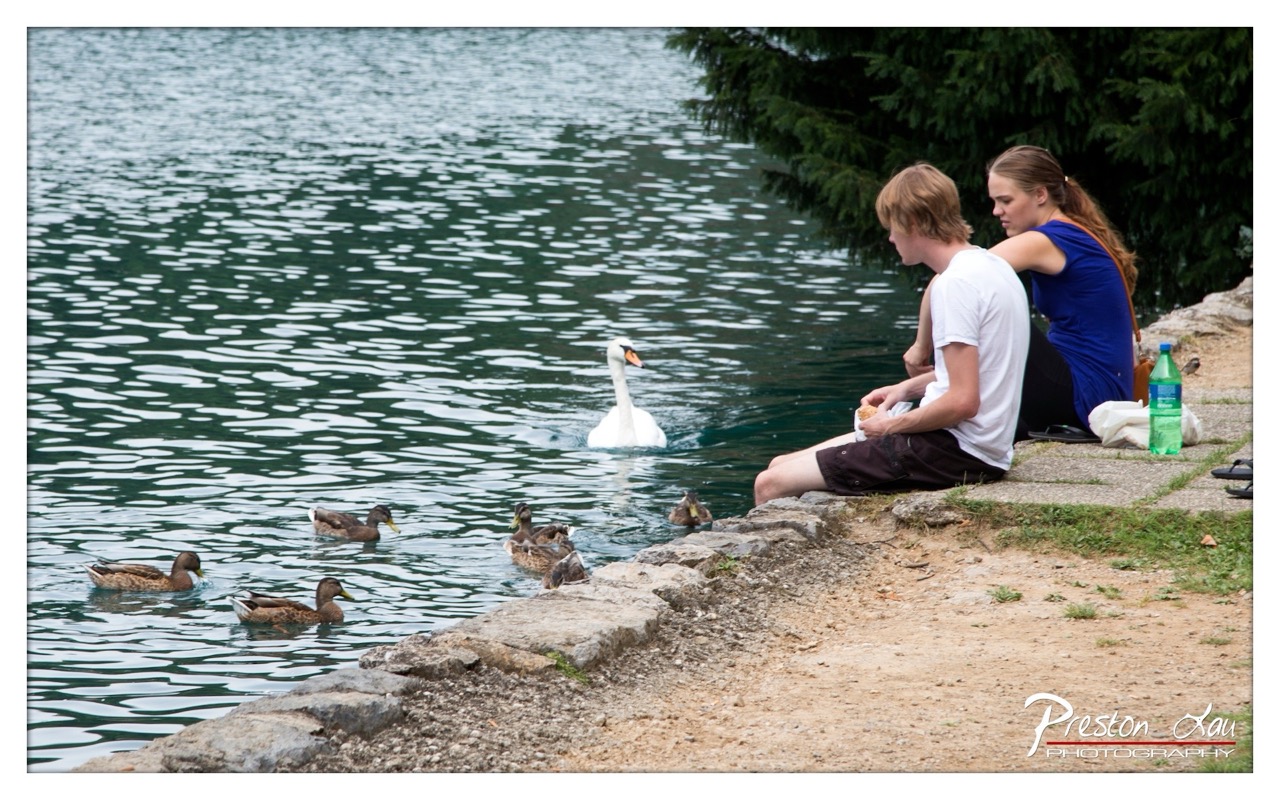

1. Overall Rating (0–10) — 7.0
This photograph captures a serene lakeside moment, where human presence gently intersects with nature. The contrast between the relaxed couple and the curious swan and ducks creates a narrative of quiet coexistence. While the scene is peaceful and authentic, the composition’s looseness and slightly flat lighting prevent it from feeling fully immersive, leaving the image more observational than emotionally resonant.
2. Composition (0–10) — 6.5
The subjects are placed off-center, with the couple on the right and the swan positioned near the center, creating a balanced but somewhat asymmetrical frame. The diagonal line of the shoreline guides the eye through the image, though the scattered ducks and uneven foreground distract from a stronger focal point.
3. Lighting (0–10) — 6.0
Natural daylight provides even illumination across the scene, but the overcast quality of the light flattens depth and reduces the vibrancy of the water and foliage. The lack of strong shadows limits the sense of time and mood, giving the image a neutral, documentary feel.
4. Color & Tone (0–10) — 6.5
The palette is dominated by muted greens and blues, with the white swan offering a subtle point of contrast. While the colors are natural and harmonious, the overall tone lacks richness and saturation, making the image feel slightly washed out.
5. Creativity (0–10) — 7.0
The juxtaposition of the couple with the wildlife introduces a gentle narrative about human interaction with nature. The candid moment is captured with authenticity, and the choice to include both the swan and the ducks adds a layer of visual storytelling.
6. Technical Quality (0–10) — 7.5
The image is sharp and clear, with well-defined details in the subjects and water. Focus is consistent across the frame, and the depth of field is appropriate for the scene, allowing both the couple and the birds to be visible.
7. Emotional Impact (0–10) — 6.5
The image evokes a sense of calm and quiet companionship, with the gentle interaction between the people and the animals suggesting a peaceful moment of connection. While the emotion is present, it remains subdued due to the lack of dramatic lighting and expressive composition.
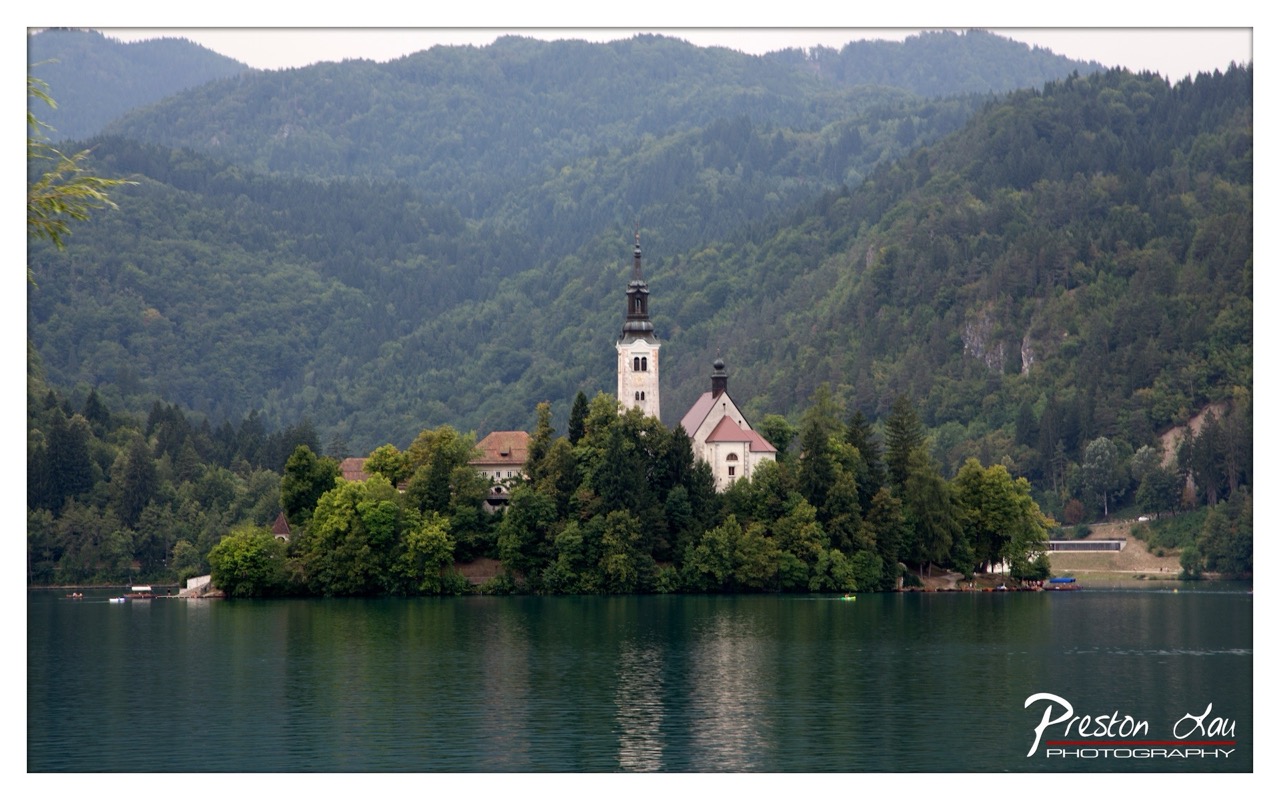

1. Overall Rating (0–10) — 7.5
This photograph captures a serene and timeless lakeside scene, where the church on the island emerges as a quiet focal point amid lush green hills and still water. The composition balances natural grandeur with human presence, evoking a sense of peace and contemplation. While the image is rich in atmosphere, a slightly more dynamic light and tighter framing could elevate its visual impact.
2. Composition (0–10) — 7.0
The island and church are well-centered, creating a strong focal point, though the inclusion of the distant shoreline on the right slightly disrupts the symmetry. The framing is wide enough to establish context but could be tighter to emphasize the island's isolation.
3. Lighting (0–10) — 6.5
The soft, diffused light from an overcast sky creates a muted, even exposure that enhances the tranquil mood. However, the lack of shadows or directional light reduces depth and dimensionality in the landscape.
4. Color & Tone (0–10) — 7.0
The palette is dominated by cool greens and blues, reinforcing the calm, reflective atmosphere. The subtle tonal gradations in the forested hills add depth, though the overall color saturation is restrained, lending a slightly subdued feel.
5. Creativity (0–10) — 7.5
The image presents a classic landscape with a strong narrative presence—the church as a spiritual anchor in nature. The choice to capture the scene in soft light and wide perspective feels intentional and poetic, offering a contemplative interpretation of place.
6. Technical Quality (0–10) — 8.0
The image is sharp and clear, with excellent detail in the foliage and architecture. The exposure is well-balanced, and the water’s gentle ripples add a natural texture without distracting from the main subject.
7. Emotional Impact (0–10) — 8.0
There is a strong sense of tranquility and timelessness that resonates emotionally, inviting the viewer to pause and reflect. The quiet beauty of the setting, combined with the human element of the church, evokes a deep sense of peace and connection to place.
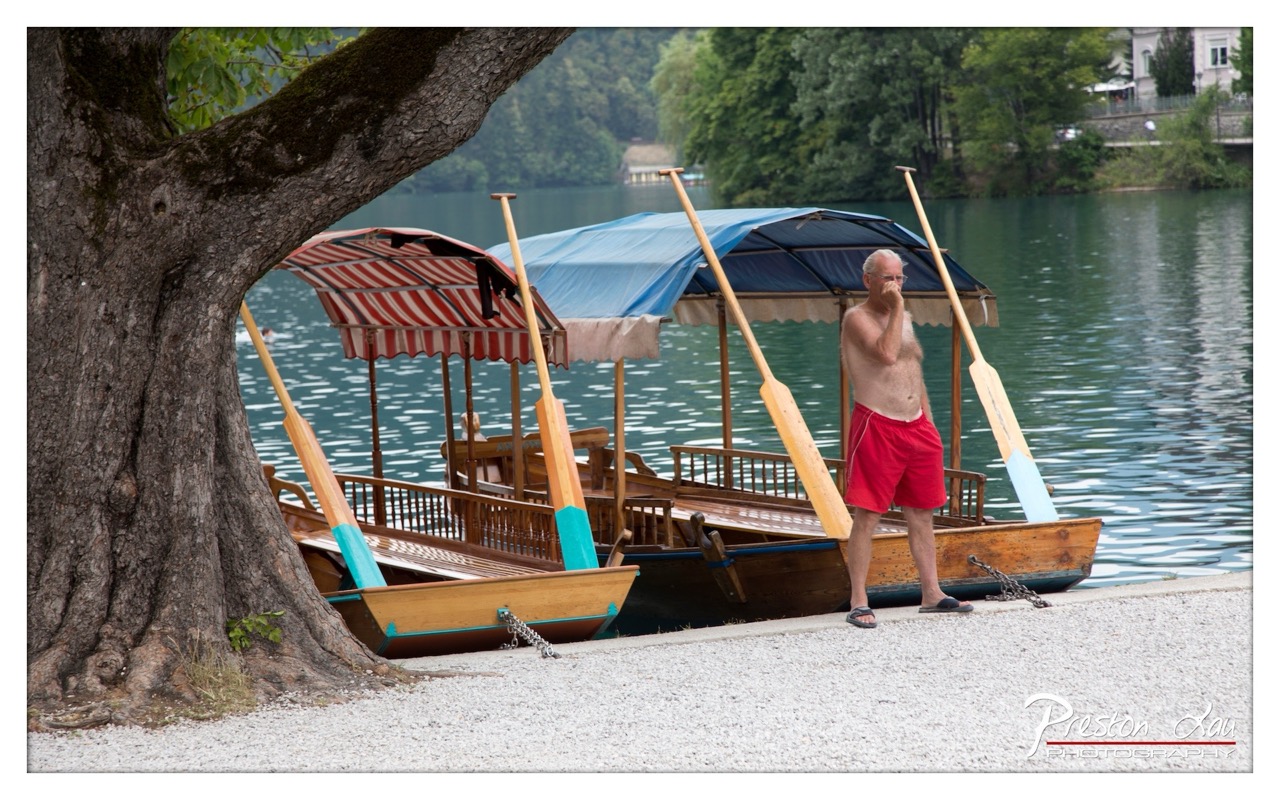

1. Overall Rating (0–10) — 7.0
This photograph captures a serene lakeside moment, where the quiet stillness of a man on the shore contrasts with the gentle ripples of the water and the vibrant colors of the boats. The composition draws the eye naturally from the textured tree trunk to the man and the vessels, creating a sense of place and contemplation. While the image is well-framed and rich in detail, it feels slightly restrained by the flat lighting and lack of dynamic movement, holding back its full emotional potential.
2. Composition (0–10) — 7.5
The tree on the left anchors the frame, guiding the viewer’s eye toward the man and the boats, creating a balanced diagonal flow. The placement of the man off-center adds visual interest, while the boats provide rhythmic repetition that enhances depth.
3. Lighting (0–10) — 6.0
The light is soft and diffused, likely from an overcast day, which results in even exposure but diminishes the sense of atmosphere. The lack of strong shadows or highlights limits the image’s depth and drama.
4. Color & Tone (0–10) — 7.0
The cool blue-green of the water contrasts beautifully with the warm red of the man’s shorts and the red-and-white striped canopy, creating a visually engaging palette. The tones are harmonious, though slightly muted by the lighting.
5. Creativity (0–10) — 6.5
The image captures a candid, slice-of-life moment with a strong sense of location. While not overtly experimental, it tells a quiet story of leisure and solitude, finding beauty in the ordinary.
6. Technical Quality (0–10) — 8.0
The image is sharp and well-focused, with clear detail in the tree bark, the wood grain of the boats, and the man’s features. The white gravel and water are rendered with clarity, and the exposure is well-balanced.
7. Emotional Impact (0–10) — 6.5
There’s a sense of calm and introspection, underscored by the man’s solitary pose and the stillness of the scene. The viewer is invited to pause and reflect, though the emotional resonance is subtle rather than overwhelming.
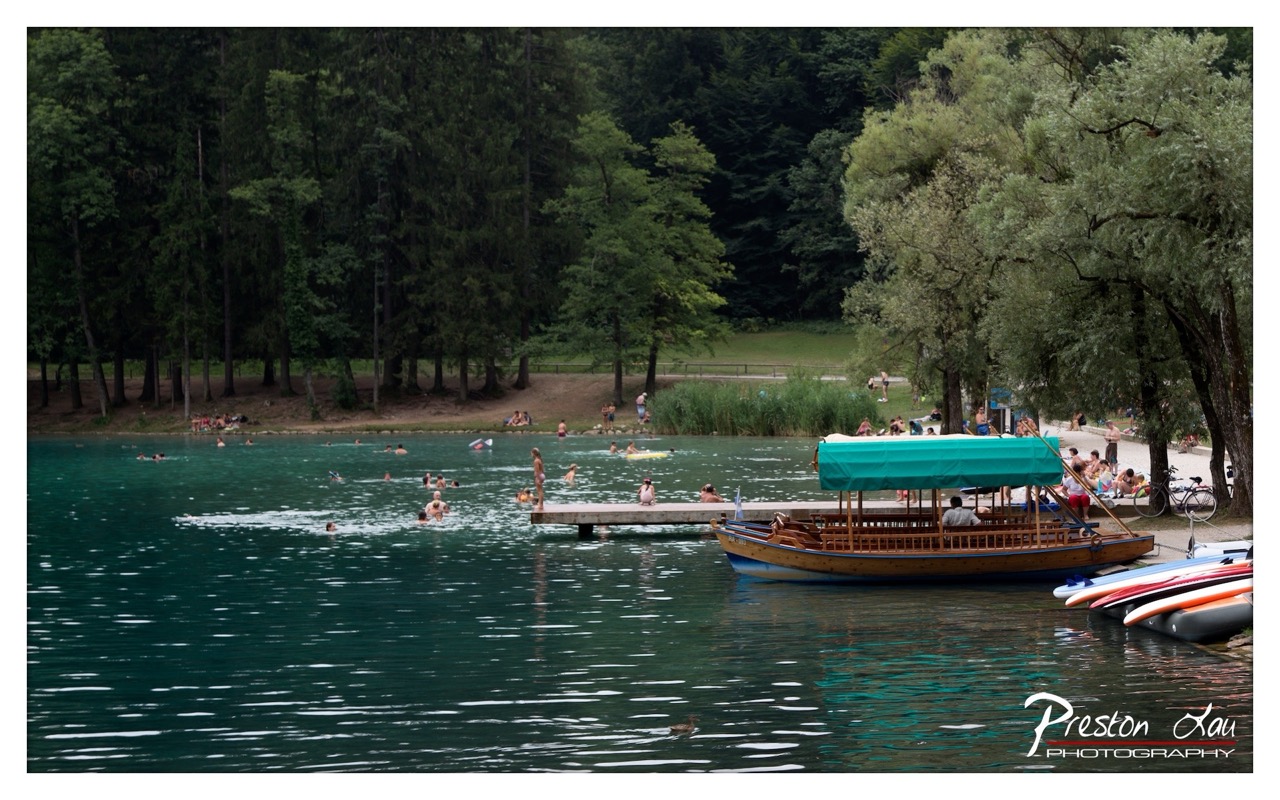

1. Overall Rating (0–10) — 7.0
This photograph captures a serene lakeside scene where nature and recreation coexist in quiet harmony. The deep teal water and lush green trees create a tranquil, almost timeless atmosphere, while the scattered swimmers and docked boat add subtle life without disrupting the calm. The image feels balanced and inviting, though the slightly muted lighting and dense foliage reduce its visual punch, keeping it from feeling truly transcendent.
2. Composition (0–10) — 7.5
The frame is well-balanced, with the wooden boat and canopy on the right providing a natural anchor, while the open water and distant swimmers draw the eye into the scene. The diagonal line of the dock leads the viewer’s gaze through the image, creating depth and guiding attention toward the activity in the middle ground.
3. Lighting (0–10) — 6.0
The lighting is soft and diffused, likely due to an overcast sky, which lends a calm, even tone to the scene. While this prevents harsh shadows and preserves detail in the trees and water, it also diminishes contrast and depth, giving the image a somewhat flat appearance.
4. Color & Tone (0–10) — 7.0
The rich, cool teal of the lake contrasts beautifully with the deep greens of the forest, creating a visually cohesive palette. The muted tones of the boat and the bright turquoise canopy add subtle pops of color without disrupting the natural harmony. The overall tonal balance is pleasing, though slightly subdued.
5. Creativity (0–10) — 6.5
The photograph captures a familiar scene with a sense of quiet observation, focusing on the interplay between human activity and natural beauty. While not overtly experimental, the composition and framing suggest a thoughtful approach to capturing a moment of leisure in a scenic setting.
6. Technical Quality (0–10) — 7.5
The image is sharp and clear, with well-defined details in the water, trees, and boat. The focus is consistent across the frame, and the exposure is balanced, preserving detail in both the shadows and highlights. The watermark is unobtrusive and professionally placed.
7. Emotional Impact (0–10) — 7.0
The image evokes a sense of peace and nostalgia, conjuring memories of lazy summer days by the lake. The presence of people enjoying the water adds a human touch, making the scene relatable and warm, while the stillness of the surrounding forest enhances its contemplative mood.
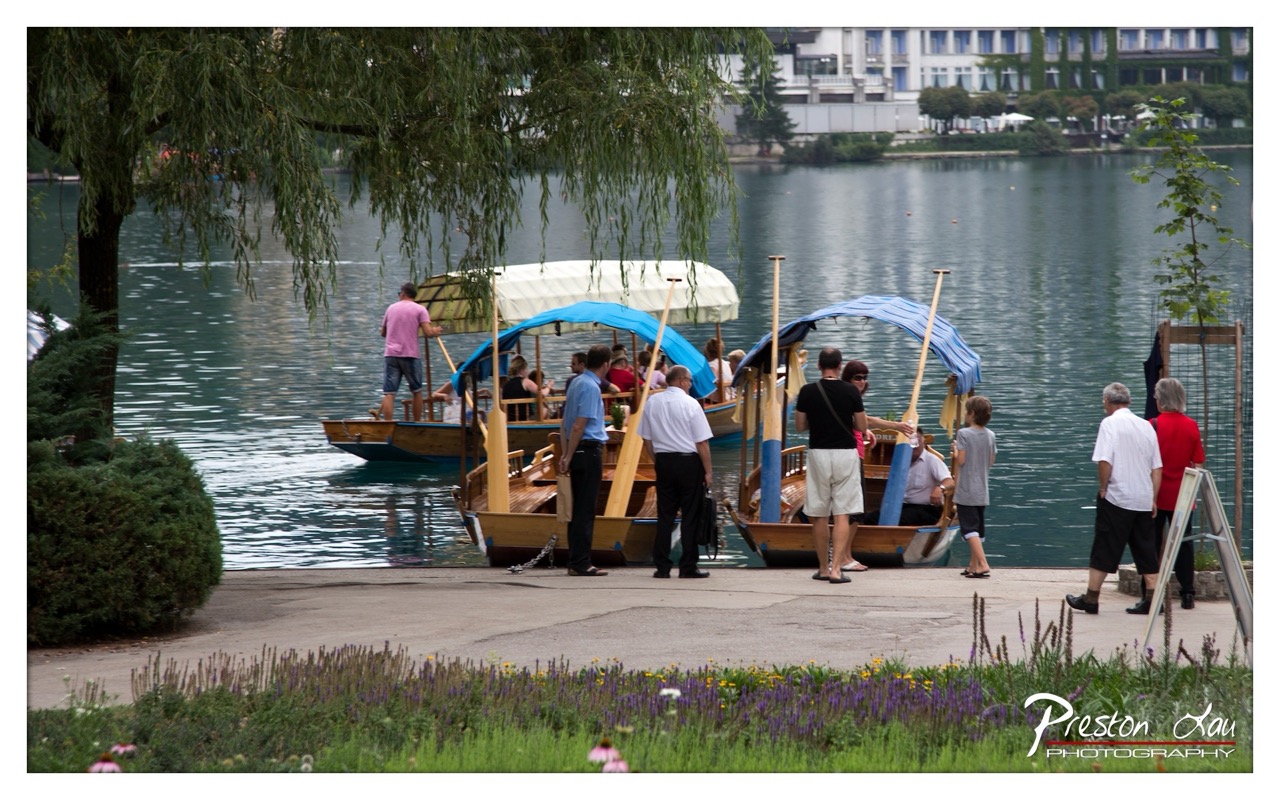

1. Overall Rating (0–10) — 7.0
This photograph captures a serene lakeside moment, where the rhythm of leisurely boat tours blends with the quiet beauty of a verdant park. The composition draws the eye from the flower-filled foreground through the bustling dock to the calm water and distant architecture, creating a layered narrative of place and activity. While the scene feels slightly overexposed and the colors somewhat muted, the image succeeds in evoking a sense of peaceful tourism and natural charm.
2. Composition (0–10) — 7.5
The frame is well-balanced, with the weeping willow on the left and the flowering bed in the foreground adding depth and framing. The boats and people create a natural diagonal leading toward the center, guiding the viewer through the scene with a sense of movement.
3. Lighting (0–10) — 6.0
The lighting is bright and even, suggesting a midday sun, but it flattens the scene with a lack of shadow definition. The reflections on the water are soft, and the sky is slightly blown out, reducing atmospheric contrast.
4. Color & Tone (0–10) — 6.5
The palette is dominated by greens and blues, creating a harmonious and tranquil mood. However, the colors lack vibrancy, with muted purples and a washed-out sky that diminish the visual punch. A slight boost in saturation would enhance the scene’s natural beauty.
5. Creativity (0–10) — 6.5
The photograph is observational and documentary in nature, capturing a slice of everyday life with a pleasant sense of place. While not highly original in concept, it effectively conveys the rhythm of a lakeside resort, offering a quiet story of leisure and connection.
6. Technical Quality (0–10) — 7.0
The image is sharp and clear, with good focus across the midground. The depth of field is appropriate, keeping the boats and people in focus while softly blurring the background. The watermark is cleanly placed and unobtrusive.
7. Emotional Impact (0–10) — 6.5
The scene evokes a sense of calm and nostalgia, inviting the viewer to imagine a leisurely afternoon on the water. The human presence adds warmth and relatability, though the slightly flat lighting keeps the emotional resonance from fully resonating.
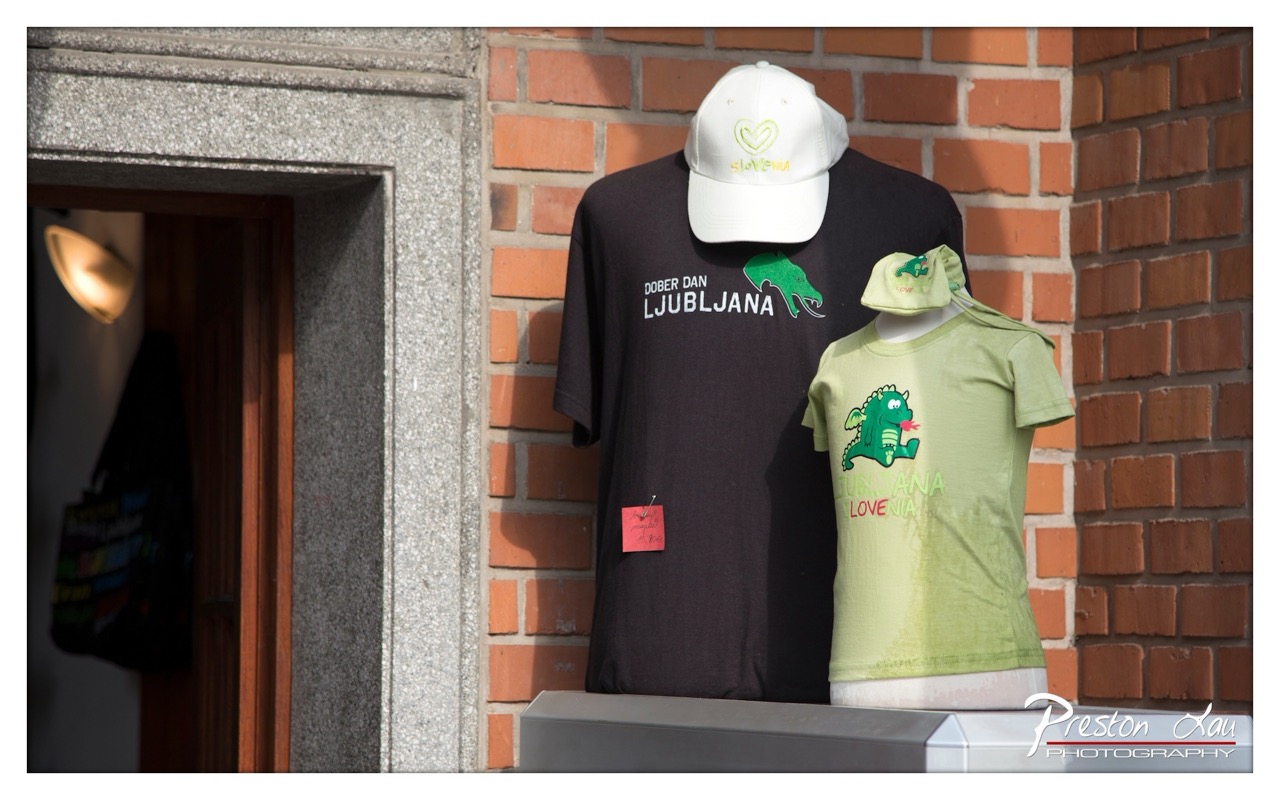

1. Overall Rating (0–10) — 6.0
This photograph captures a simple yet charming display of Slovenian-themed merchandise, evoking a sense of local pride and cultural celebration. The juxtaposition of the rustic brick wall and the bright, child-friendly apparel creates a warm, approachable atmosphere. While the image successfully conveys its subject, it lacks a compelling visual narrative, feeling more like a functional snapshot than an artistically composed piece.
2. Composition (0–10) — 6.0
The arrangement of the mannequins is slightly off-center, creating a natural balance with the doorway on the left. However, the tight framing and lack of negative space make the composition feel somewhat cluttered, drawing attention to the merchandise without guiding the viewer’s eye effectively.
3. Lighting (0–10) — 7.0
Natural sunlight from the right casts soft shadows and highlights the textures of the brick and fabric, enhancing the tactile quality of the scene. The contrast between the sunlit right side and the darker interior adds depth, though the shadows are slightly harsh, reducing subtlety in tonal transitions.
4. Color & Tone (0–10) — 6.5
The warm reds of the brick and the green accents on the apparel create a cohesive color palette that feels both inviting and regionally authentic. The slight color saturation enhances the vibrancy of the shirts, though the overall tone remains somewhat flat due to the bright, unfiltered daylight.
5. Creativity (0–10) — 5.5
The concept is straightforward and grounded in cultural documentation rather than artistic experimentation. While the subject matter is inherently engaging, the execution lacks a unique perspective or interpretive layer, remaining largely observational.
6. Technical Quality (0–10) — 7.5
The image is sharp and well-focused, particularly on the central garments. The depth of field is appropriate, keeping the main subjects clear while softly blurring the background. The watermark is professionally placed and does not detract from the composition.
7. Emotional Impact (0–10) — 6.0
The photograph evokes a sense of local pride and nostalgia, particularly for those familiar with Slovenia’s cultural symbols. However, the emotional resonance is tempered by the image’s straightforward, almost transactional quality, leaving the viewer with a sense of recognition rather than deep connection.
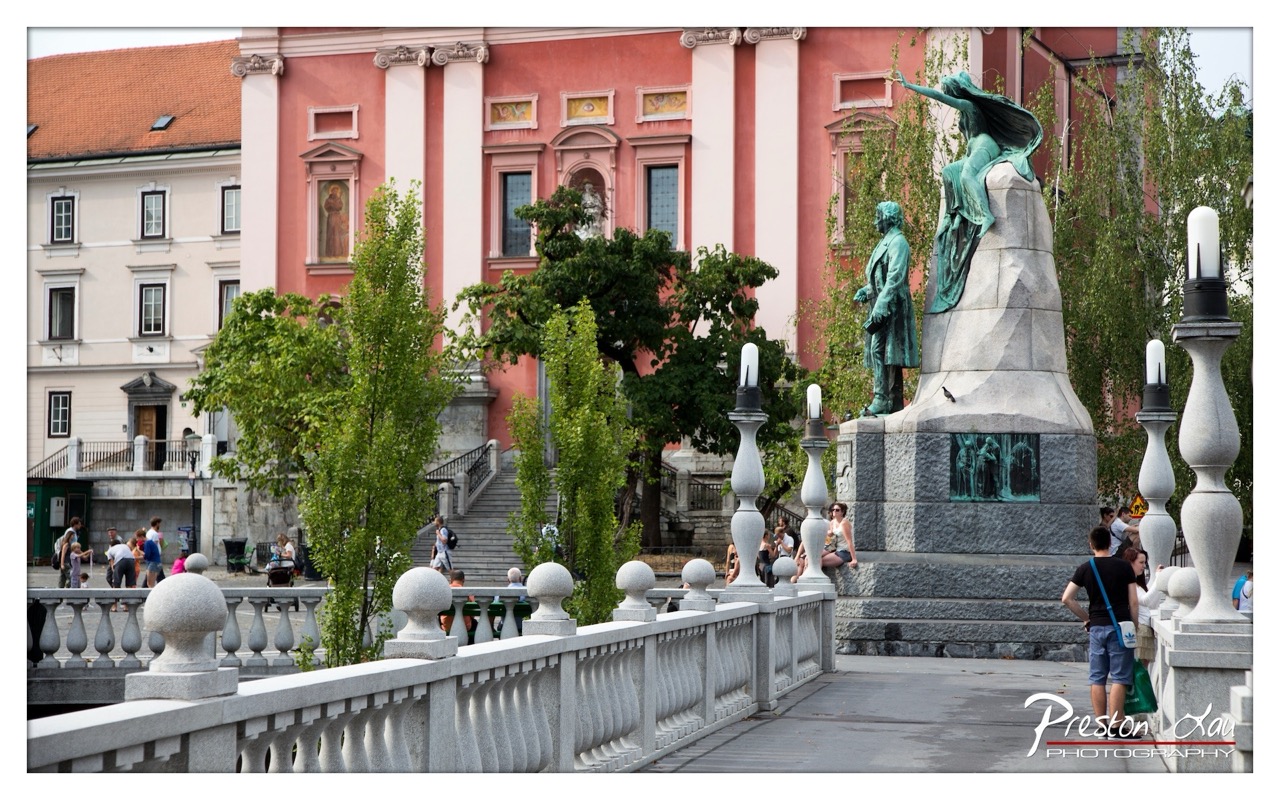

1. Overall Rating (0–10) — 7.0
This photograph captures a vibrant urban scene where history and daily life intersect, centered around a striking monument set against a grand, pastel-hued building. The composition balances architectural detail, natural elements, and human activity, creating a sense of place and movement. While the image is rich in narrative and context, its full potential is slightly restrained by a lack of visual cohesion and overemphasis on background clutter.
2. Composition (0–10) — 6.5
The statue and steps create a strong diagonal leading the eye into the frame, but the foreground railing and scattered people introduce visual noise. The central placement of the monument provides balance, yet the composition feels slightly crowded, diluting focus.
3. Lighting (0–10) — 6.0
The light is soft and diffused, suggesting an overcast day, which minimizes harsh shadows and allows for even exposure across the scene. However, the flat lighting reduces the depth and drama of the architecture and sculpture.
4. Color & Tone (0–10) — 6.5
The warm pink of the building contrasts nicely with the green patina of the bronze statues and the fresh green of the trees. The overall palette is harmonious, though the muted tones and slight oversaturation in the sky detract from the image’s natural vibrancy.
5. Creativity (0–10) — 6.5
The photographer captures a moment of cultural and social life, blending history and modernity. The inclusion of people adds narrative, but the approach is more documentary than conceptual, limiting the image’s originality.
6. Technical Quality (0–10) — 7.5
The image is sharp and well-focused, with clear details in both the foreground and background. The depth of field is appropriately managed, though slight chromatic aberration is visible along high-contrast edges.
7. Emotional Impact (0–10) — 6.0
The scene evokes a sense of quiet civic pride and continuity, with the monument standing as a silent witness to the passage of time. While the image feels authentic and grounded, it lacks the emotional intensity to deeply resonate with the viewer.
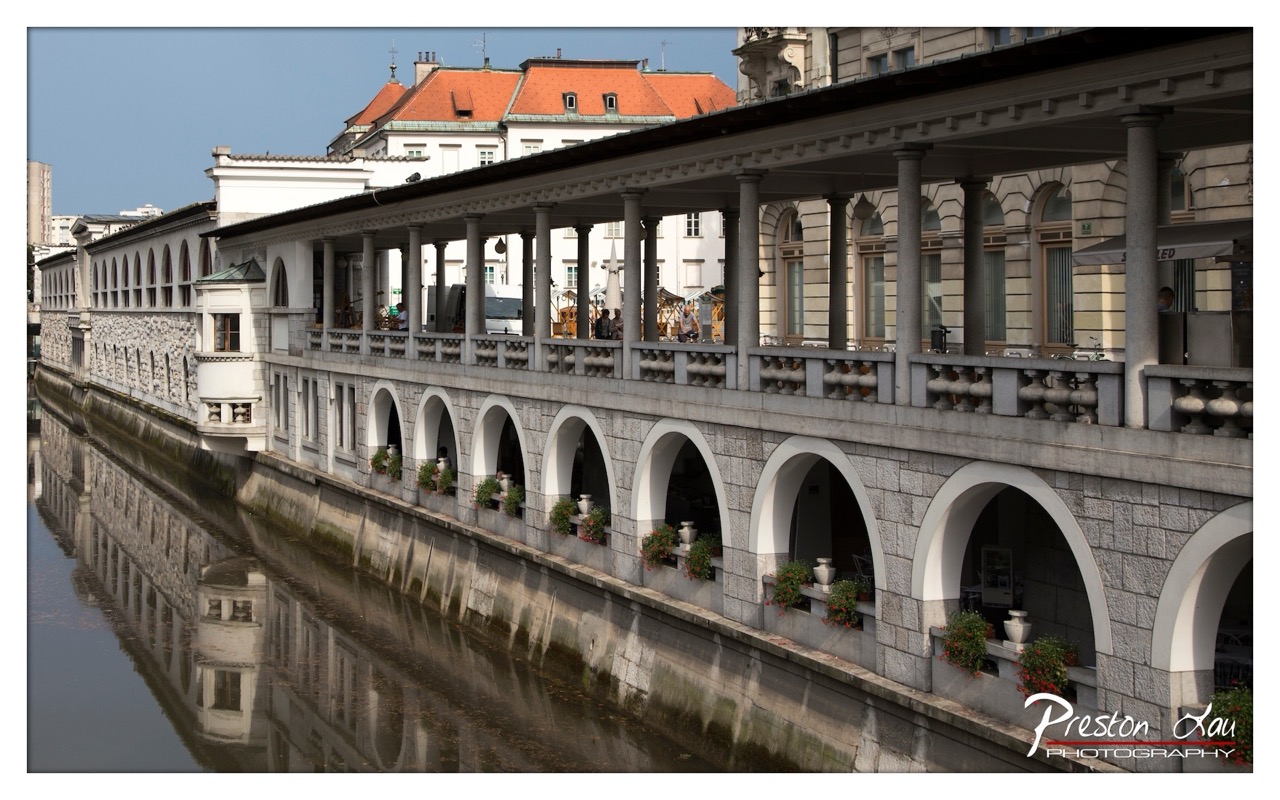

1. Overall Rating (0–10) — 8.0
This photograph captures the serene elegance of a historic riverside promenade, where architectural symmetry and water reflections converge in a harmonious visual rhythm. The strong horizontal lines of the colonnade and its mirror image in the still water create a sense of balance and timelessness, while the soft daylight enhances the textures of stone and tile. Though the composition is deliberate and well-executed, a slightly warmer tone might deepen the emotional resonance and make the scene feel more inviting.
2. Composition (0–10) — 8.5
The long, repeating arches form a strong leading line that guides the eye along the length of the structure, while the reflection doubles the visual weight and reinforces symmetry. The framing is tight yet balanced, emphasizing the architectural rhythm without overcrowding the scene.
3. Lighting (0–10) — 7.5
Natural daylight provides even illumination, enhancing the clarity of the stone textures and architectural details. The soft, diffused quality of the light minimizes harsh shadows, allowing the reflection in the water to remain crisp and clear.
4. Color & Tone (0–10) — 7.0
The palette is restrained and cohesive, dominated by neutral grays, whites, and the warm terracotta of the rooftops. While the colors are accurate and harmonious, they lack vibrancy, giving the image a slightly muted, almost documentary feel.
5. Creativity (0–10) — 8.0
The photographer has skillfully used symmetry and reflection to transform a simple architectural scene into a contemplative composition. The choice to include the quiet, everyday details—such as the potted plants and distant figures—adds narrative depth without disrupting the formal balance.
6. Technical Quality (0–10) — 8.5
Sharp focus and excellent clarity throughout the image, with precise rendering of textures and edges. The exposure is well-managed, and the depth of field is appropriate for capturing both the foreground architecture and the distant buildings.
7. Emotional Impact (0–10) — 7.5
The image evokes a sense of calm and quiet dignity, inviting the viewer to pause and reflect on the beauty of urban history and design. The stillness of the water and the graceful repetition of the arches lend a meditative quality, though the lack of strong human presence keeps the emotional connection from fully resonating.
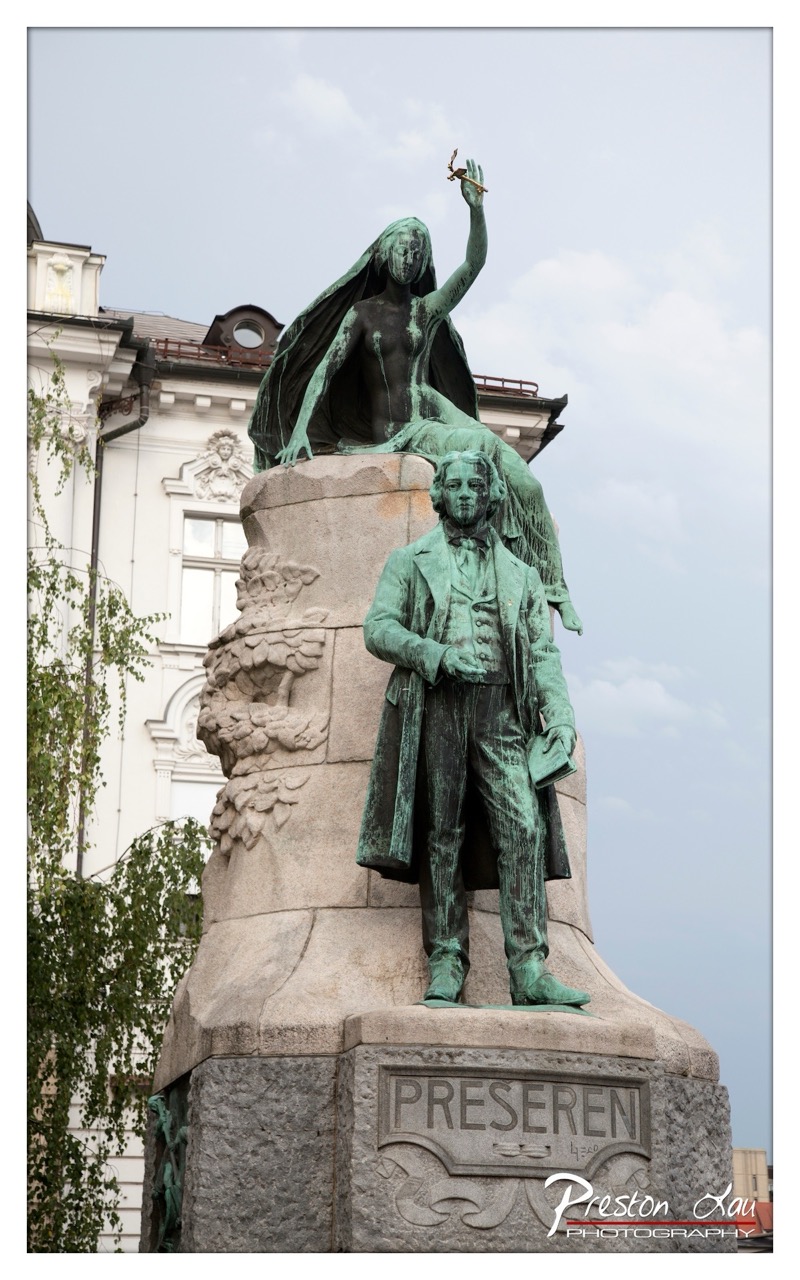

1. Overall Rating (0–10) — 7.0
This photograph captures a powerful historical monument with a quiet dignity, where the patina of age and the weight of memory converge in a single frame. The verdigris of the bronze figures contrasts beautifully with the pale stone and overcast sky, lending the scene a somber, timeless quality. While the composition is strong and the subject compelling, the slightly muted lighting and unremarkable background prevent the image from achieving greater visual resonance.
2. Composition (0–10) — 7.5
The monument is centered and fills the frame effectively, with the vertical lines of the figures guiding the eye upward. The inclusion of the building and foliage on the left adds depth and context without distracting from the main subject.
3. Lighting (0–10) — 6.0
The soft, diffused light from the overcast sky evenly illuminates the sculpture, minimizing harsh shadows and allowing the texture of the bronze and stone to be clearly visible. However, the lack of directional light or dramatic contrast slightly flattens the overall mood.
4. Color & Tone (0–10) — 7.0
The dominant green patina of the bronze harmonizes with the gray stone and muted sky, creating a cohesive, monochromatic palette. The subtle warmth in the stone and the cool tones of the sky create a balanced tonal range that supports the solemn atmosphere.
5. Creativity (0–10) — 7.0
The photographer captures the monument with a respectful, observational approach, emphasizing its historical and artistic significance. The framing and angle highlight the narrative elements of the sculpture, suggesting a story of cultural legacy and artistic devotion.
6. Technical Quality (0–10) — 8.0
The image is sharp and detailed, with clear focus on the monument and readable inscriptions. The exposure is well-balanced, and the depth of field is appropriate for a subject of this scale.
7. Emotional Impact (0–10) — 6.5
The photograph evokes a sense of reverence and contemplation, inviting the viewer to reflect on the figure's historical importance. While the emotional pull is present, the lack of dynamic lighting and environmental interaction keeps the experience more intellectual than visceral.
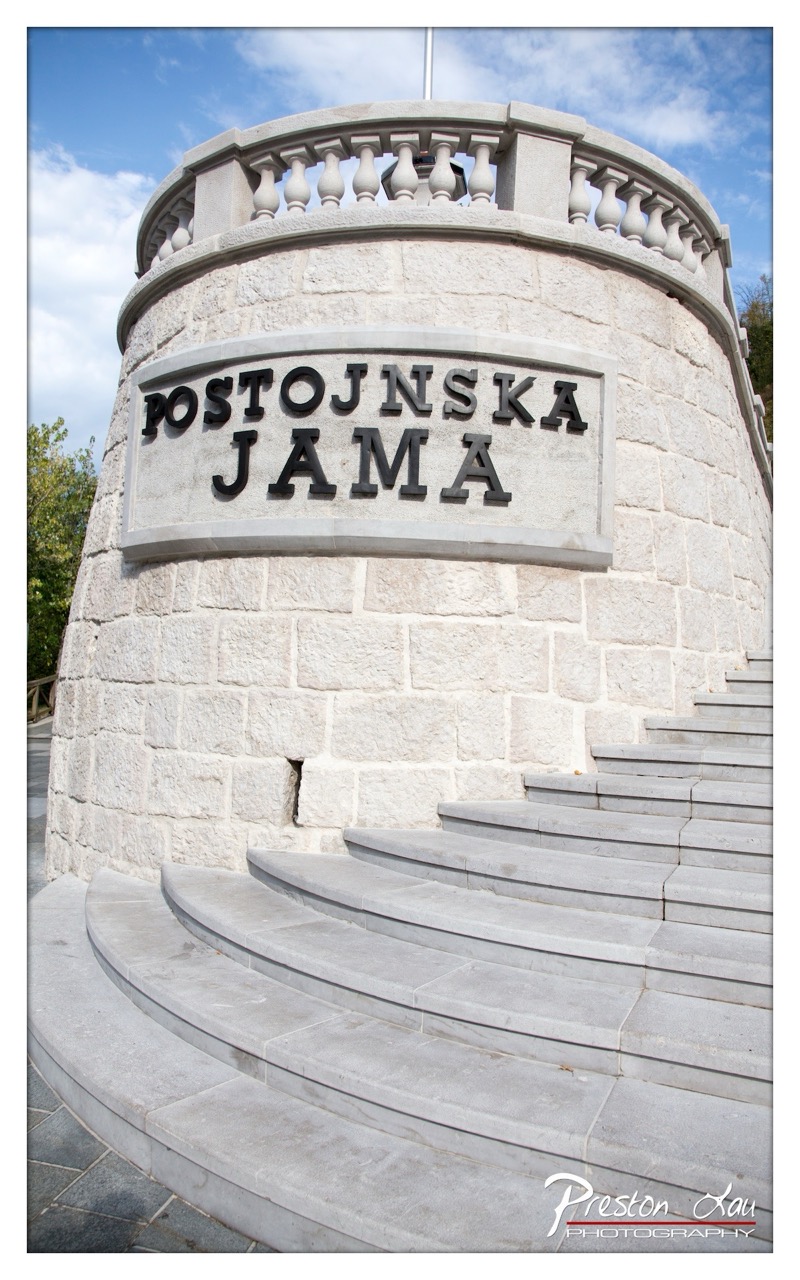

1. Overall Rating (0–10) — 7.0
This photograph captures the solemn grandeur of a stone monument under a bright blue sky, evoking a sense of historical reverence and quiet dignity. The clean lines of the curved staircase and the bold inscription “POSTOJNSKA JAMA” anchor the image with architectural clarity, while the interplay of light and texture on the stone adds a tactile richness. Though the composition is strong and the subject is clearly communicated, the image’s emotional resonance is slightly tempered by the straightforwardness of its presentation—more a document than a meditation.
2. Composition (0–10) — 7.5
The low-angle perspective emphasizes the monument’s scale and gravitas, while the sweeping curve of the stairs draws the eye upward toward the inscription. The diagonal lines of the steps create a dynamic sense of ascent, balancing the verticality of the structure and the horizontal span of the sky.
3. Lighting (0–10) — 8.0
Bright, natural daylight enhances the texture of the stone and creates subtle shadows that define the form. The sun’s position highlights the monument’s surface without overexposing, and the clear blue sky provides a crisp, contrasting backdrop that makes the inscription pop.
4. Color & Tone (0–10) — 7.0
The palette is dominated by cool grays and whites of the stone, accented by the vibrant blue of the sky. While the tones are harmonious and clean, the lack of warmth lends a slightly clinical feel, keeping the mood formal rather than evocative.
5. Creativity (0–10) — 6.5
The image is conceptually sound and well-executed, but it leans more toward straightforward documentation than expressive interpretation. The choice to frame the monument from below is effective, but the narrative remains largely literal.
6. Technical Quality (0–10) — 8.5
Sharp focus across the frame captures fine details in the stonework and lettering. The exposure is well-balanced, and the image shows no signs of digital noise or distortion, indicating strong technical execution.
7. Emotional Impact (0–10) — 6.0
The photograph conveys respect and awe for a place of natural and cultural significance, but its emotional pull is restrained by its documentary clarity. It invites contemplation, but doesn’t fully stir the heart or imagination.
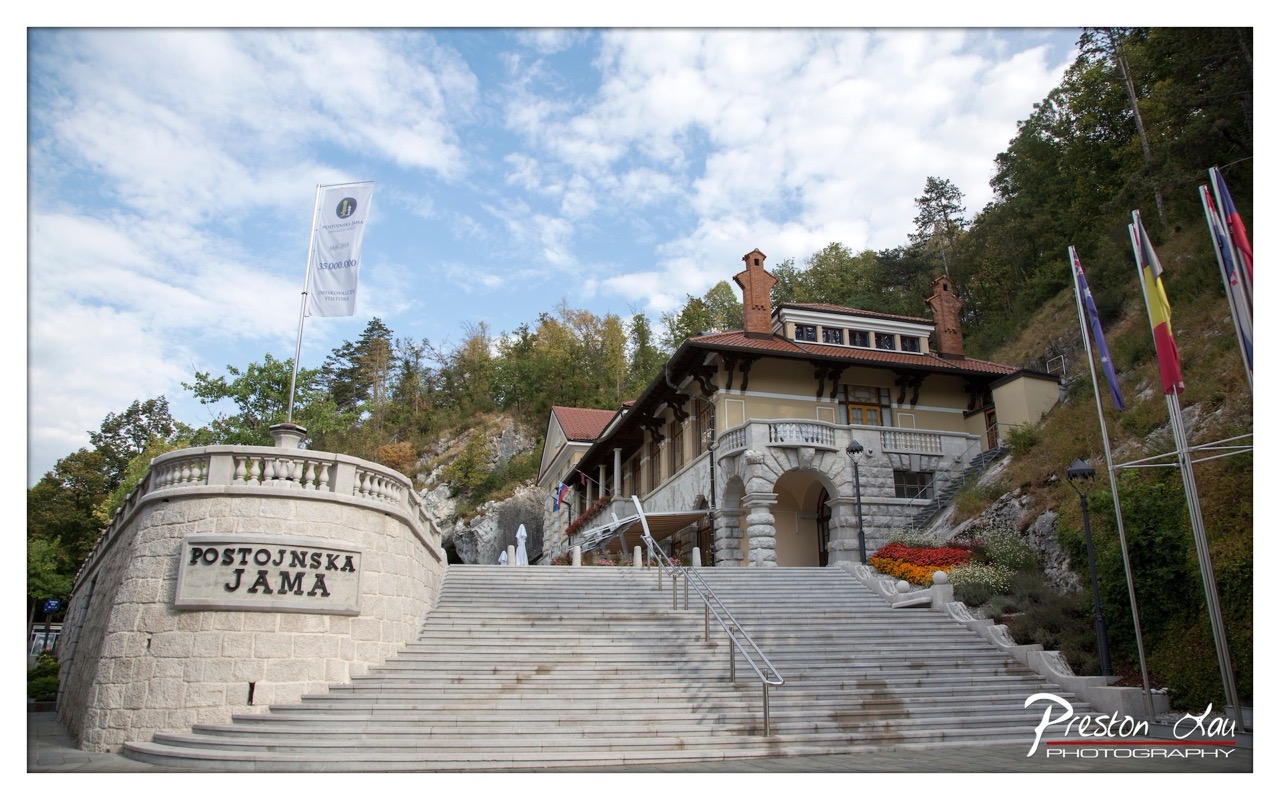

1. Overall Rating (0–10) — 7.0
This photograph captures the grand entrance to Postojnska Jama with a sense of architectural dignity and natural majesty. The composition draws the eye upward along the sweeping staircase, leading to the historic building nestled into the hillside, while the fluttering flags and sky add a dynamic sense of place. The image successfully conveys both the scale and the cultural significance of the site, though the slightly overexposed sky and cluttered foreground elements slightly detract from its visual harmony.
2. Composition (0–10) — 7.5
The low-angle perspective emphasizes the monumentality of the staircase and building, creating a strong sense of ascent. The curved balustrade on the left and the diagonal line of the steps guide the viewer’s gaze naturally toward the central structure, though the flagpoles on the right introduce visual noise that slightly disrupts the balance.
3. Lighting (0–10) — 6.5
Natural daylight illuminates the scene clearly, with soft shadows suggesting a midday sun. The sky is slightly overexposed, causing some loss of cloud detail, while the stone surfaces are well-lit, enhancing texture. The lighting is functional but lacks the dramatic contrast that would elevate the mood.
4. Color & Tone (0–10) — 7.0
The palette is harmonious, with warm stone tones contrasting against the green foliage and the blue sky. The red and yellow flowers near the entrance add a touch of vibrancy, and the overall tonal range is balanced, though the sky's brightness slightly flattens the atmosphere.
5. Creativity (0–10) — 6.5
The image is a strong architectural documentation, capturing the site’s identity with clarity. While not overtly experimental, the choice of perspective and framing conveys a sense of reverence for the location, suggesting an intent to honor its historical and natural significance.
6. Technical Quality (0–10) — 8.0
The photograph is sharp and detailed, with clear focus across the frame. The lens choice and exposure are well-suited to the scene, capturing fine textures in the stonework and foliage. The watermark is subtly placed, maintaining professionalism.
7. Emotional Impact (0–10) — 6.5
The image evokes a sense of awe and anticipation, inviting the viewer to imagine ascending toward the entrance of this natural wonder. While the emotional resonance is grounded in the site’s grandeur, it remains somewhat restrained by the lack of human presence and narrative depth.
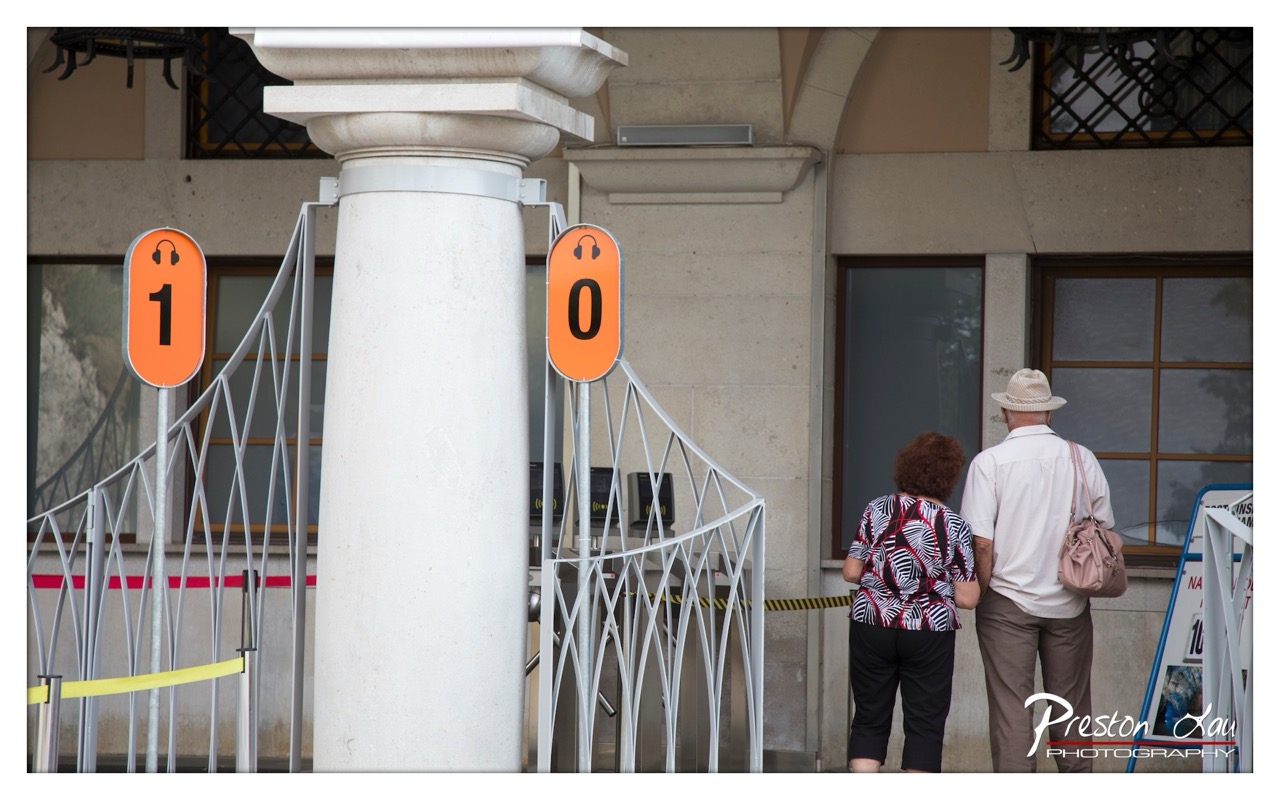

1. Overall Rating (0–10) — 6.8
This photograph captures a quiet moment of tourist observation at a cultural site, where the juxtaposition of modern audio guides and classical architecture creates a subtle narrative tension. The warm sunlight and candid posture of the couple lend a sense of authenticity, while the bold orange signs add visual punctuation. Though the scene is grounded in everyday reality, the composition’s slightly cluttered framing and muted color palette prevent it from achieving greater aesthetic cohesion.
2. Composition (0–10) — 6.5
The couple is placed off-center, creating a natural focal point, but the overlapping railings and signage introduce visual noise. The strong vertical of the column anchors the frame, though the diagonal lines of the gate disrupt balance slightly.
3. Lighting (0–10) — 7.0
Soft, natural light enhances the textures of the stone and metal, casting gentle shadows that add depth. The overcast sky prevents harsh contrast, allowing for even exposure across the scene.
4. Color & Tone (0–10) — 6.0
The dominant neutral tones of stone and metal are punctuated by the bright orange signs, which draw attention but feel slightly jarring. The warm skin tones and earthy clothing provide a subtle counterpoint, but the overall palette remains restrained.
5. Creativity (0–10) — 6.5
The image effectively captures a slice of travel life, blending human presence with architectural context. The inclusion of the audio guide signs introduces a narrative layer—of guided experience and shared memory—but the execution leans more observational than conceptual.
6. Technical Quality (0–10) — 7.5
The image is sharp and well-focused, with clear detail in both the foreground and background. The exposure is balanced, and the depth of field appropriately isolates the subjects from the surroundings.
7. Emotional Impact (0–10) — 6.0
There’s a quiet intimacy in the couple’s shared moment, suggesting familiarity and companionship. The emotional resonance is gentle and relatable, though the viewer is kept at a slight remove by the institutional setting and the photographer’s distance.
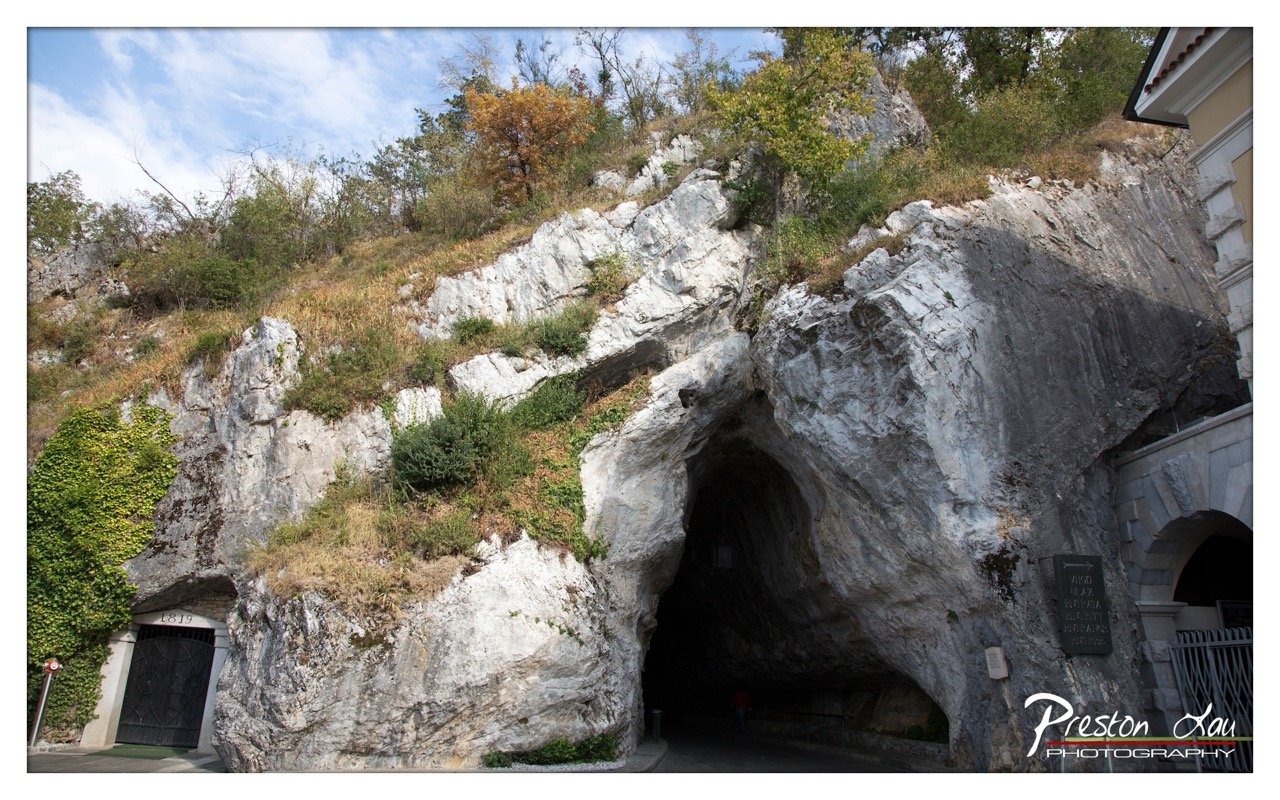

1. Overall Rating (0–10) — 7.0
This photograph captures the dramatic interplay between natural rock formations and human architecture, evoking a sense of time-worn history and quiet mystery. The cavernous entrance draws the eye into the unknown, while the surrounding greenery and stone textures lend a tactile, almost cinematic quality. Though the composition is strong, the presence of modern signage and the photographer’s watermark slightly disrupt the scene’s timeless atmosphere.
2. Composition (0–10) — 7.5
The large cave dominates the frame, creating a natural focal point, while the surrounding structures and foliage balance the image. The low-angle perspective enhances the grandeur of the rock, though the slight tilt in the horizon slightly undermines the symmetry.
3. Lighting (0–10) — 7.0
Natural daylight illuminates the scene effectively, highlighting the texture of the stone and casting deep shadows within the cave. The contrast between sunlit rock and the dark interior enhances depth and adds a sense of mystery.
4. Color & Tone (0–10) — 6.5
The palette is grounded in natural earth tones—grays, greens, and muted browns—giving the image a subdued, authentic feel. The blue sky provides a soft contrast, but the overall tone leans slightly cool and flat, reducing the warmth of the scene.
5. Creativity (0–10) — 7.0
The juxtaposition of natural and man-made elements is compelling, suggesting a narrative of human adaptation to the landscape. The inclusion of the lone figure adds scale and intrigue, inviting the viewer to imagine what lies beyond.
6. Technical Quality (0–10) — 8.0
The image is sharp and well-exposed, with fine detail visible in the rock surfaces and foliage. The focus is consistent across the frame, and the dynamic range handles the bright sky and dark cave reasonably well.
7. Emotional Impact (0–10) — 7.5
The image conveys a quiet sense of awe and historical resonance, inviting contemplation of the passage of time and human endurance. The deep, dark tunnel beckons, evoking a subtle tension between curiosity and the unknown.
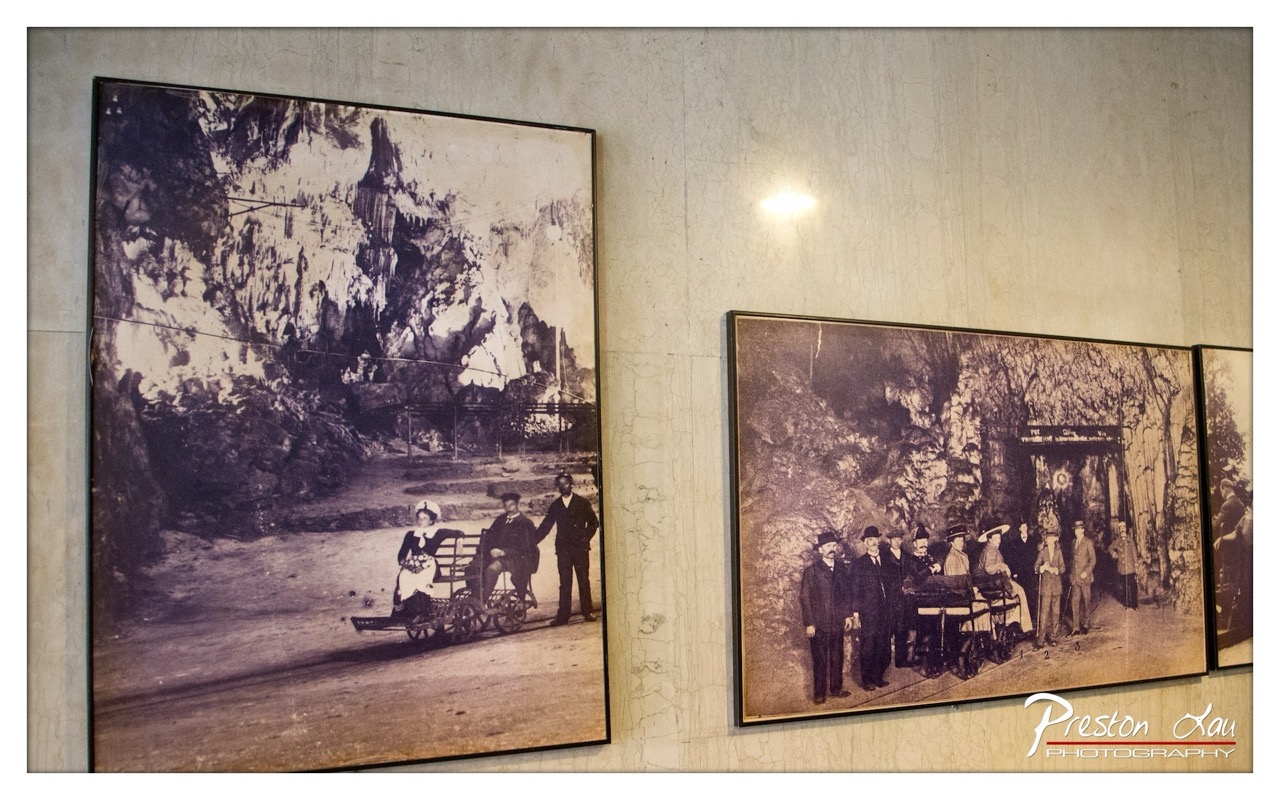

1. Overall Rating (0–10) — 7.0
This photograph captures a quiet, contemplative moment in a museum or gallery, where historical images tell stories of early tourism and exploration. The juxtaposition of two sepia-toned photographs—both depicting people in vintage attire near cave entrances—evokes a sense of time travel and cultural memory. While the lighting and framing feel somewhat candid, the composition's layered narrative and nostalgic tone give it a subtle, reflective power.
2. Composition (0–10) — 7.0
The two framed photographs are arranged asymmetrically, with the larger image on the left drawing initial attention. The slight tilt of the right frame adds a touch of informal balance, while the wall’s texture and the soft reflection of the light source enhance depth. A tighter crop might have improved focus, but the spacing allows the viewer to appreciate the relationship between the images.
3. Lighting (0–10) — 6.5
The single overhead light casts a warm, directional glow that highlights the right frame while leaving the left slightly underexposed. This creates a subtle contrast in mood and emphasis, though the harsh reflection and uneven exposure detract from the overall harmony.
4. Color & Tone (0–10) — 7.5
The warm sepia tones of the photographs blend naturally with the aged, off-white wall, creating a cohesive vintage atmosphere. The tonal range is limited but effective, with the dark frames providing visual anchor points that guide the eye across the scene.
5. Creativity (0–10) — 7.0
The image functions as both documentation and storytelling, capturing a moment where history is displayed as art. The choice to photograph the photographs—layering past and present—adds conceptual depth, though it leans more on context than visual innovation.
6. Technical Quality (0–10) — 7.5
Sharp focus on the foreground frames is maintained, with good detail in the textures of the photographs and the wall. The watermark is unobtrusive, and the overall image is clean, though minor noise and uneven lighting slightly reduce technical polish.
7. Emotional Impact (0–10) — 6.5
The photograph evokes a quiet reverence for the past, inviting the viewer to reflect on how people once experienced natural wonders. While not emotionally overwhelming, it succeeds in creating a contemplative, slightly melancholic mood that lingers.
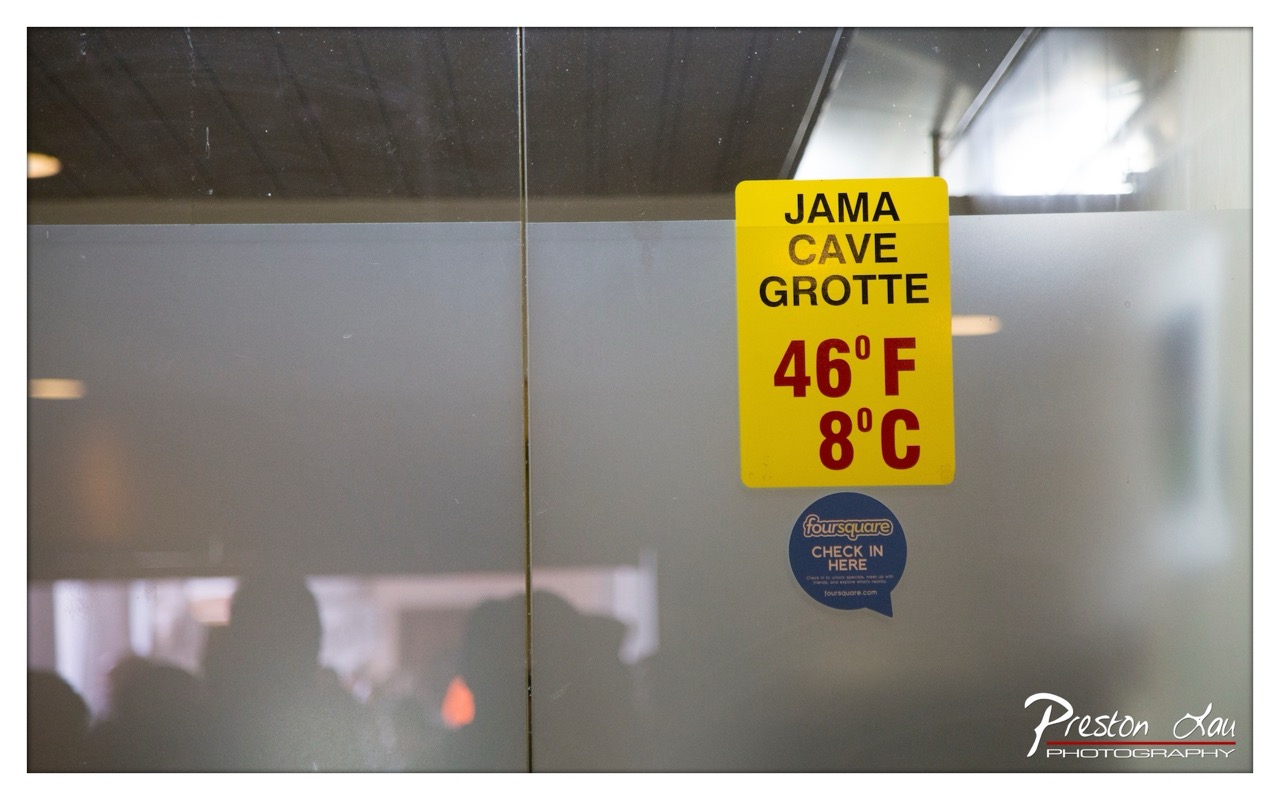

1. Overall Rating (0–10) — 5.5
This photograph captures a mundane moment in a public space, where the juxtaposition of a temperature sign and a check-in sticker creates a subtle commentary on modern environments. The reflective surface adds depth and layering, suggesting a world beyond the frame. While the composition is straightforward and the subject matter slightly ironic, the image lacks visual dynamism and emotional resonance, feeling more like a snapshot than a deliberate statement.
2. Composition (0–10) — 5.0
The subject is centered but partially obscured by reflections and a cluttered background. The vertical seam between glass panels divides the frame unevenly, creating visual disruption.
3. Lighting (0–10) — 5.5
Diffuse indoor lighting creates soft reflections and a neutral tone. While functional, the light lacks contrast and fails to highlight the sign’s boldness or the scene’s atmosphere.
4. Color & Tone (0–10) — 6.0
The bright yellow sign stands out against the muted gray background, creating a strong focal point. However, the overall palette is flat and desaturated, reducing the image’s visual impact.
5. Creativity (0–10) — 5.5
The image plays with layers—text, reflection, signage—and hints at narrative potential. Yet, the concept remains underdeveloped, relying on irony rather than originality.
6. Technical Quality (0–10) — 7.0
The focus is sharp on the sign, and the image is free of noise. However, the reflections and surface imperfections slightly compromise clarity.
7. Emotional Impact (0–10) — 4.5
The image feels detached and observational, evoking mild curiosity but little emotional connection. The cool temperature and sterile setting contribute to a sense of impersonality.
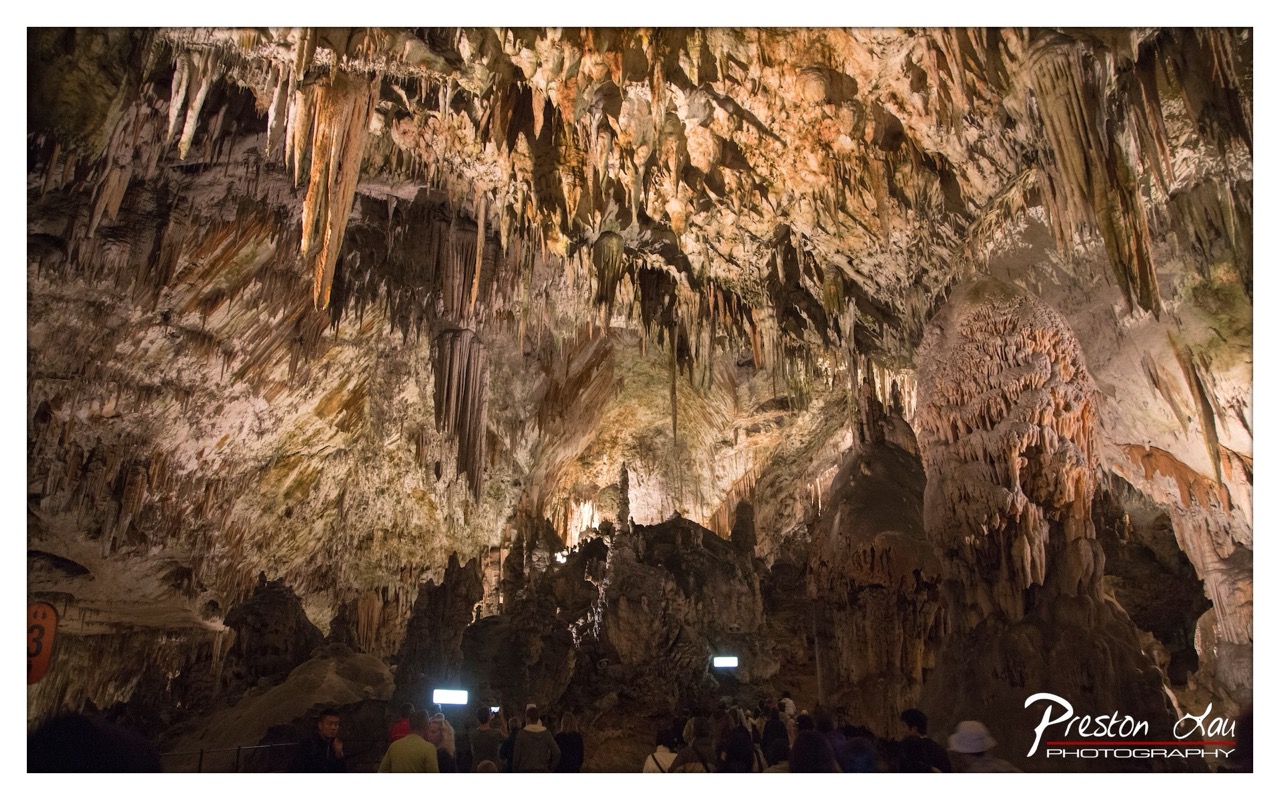

1. Overall Rating (0–10) — 7.5
This photograph captures the awe-inspiring grandeur of a cavernous cave system, where centuries of geological formation unfold in intricate detail. The interplay of light and shadow accentuates the textures of stalactites and stalagmites, evoking a sense of timelessness and natural wonder. While the presence of visitors grounds the scene in reality, it also slightly undermines the cavern’s pristine majesty, and the composition could better balance the human element with the overwhelming scale of the cave.
2. Composition (0–10) — 7.0
The wide-angle framing emphasizes the cave’s vastness, with the ceiling’s dramatic formations drawing the eye upward. However, the lower third is cluttered with people and artificial lighting, which disrupts visual harmony and distracts from the natural architecture.
3. Lighting (0–10) — 8.0
The use of artificial illumination enhances the cave’s textures and depth, creating a warm, dramatic glow that highlights the layered formations. The light sources are well-placed to reveal detail without overexposing key areas, though some shadows remain too deep.
4. Color & Tone (0–10) — 7.5
The palette leans toward earthy browns and ochres, with subtle variations in tone that give the cave a rich, organic feel. The warm lighting enhances the colors, though a slightly cooler white balance might have provided better contrast and realism.
5. Creativity (0–10) — 7.0
The image successfully captures both the scale and the mystery of the cave, blending natural beauty with human presence. The photographer’s intent to document the cave’s splendor is evident, though the inclusion of tourists tempers the sense of untouched wonder.
6. Technical Quality (0–10) — 8.0
Sharp focus across the frame reveals fine detail in the rock formations. Exposure is well-managed, and the image is free from noticeable noise or blur, indicating solid technical execution.
7. Emotional Impact (0–10) — 7.5
The photograph conveys a powerful sense of awe and reverence for natural processes, evoking a quiet wonder in the viewer. The presence of people adds a human scale, reminding us of our small place within the vastness of time and geology.
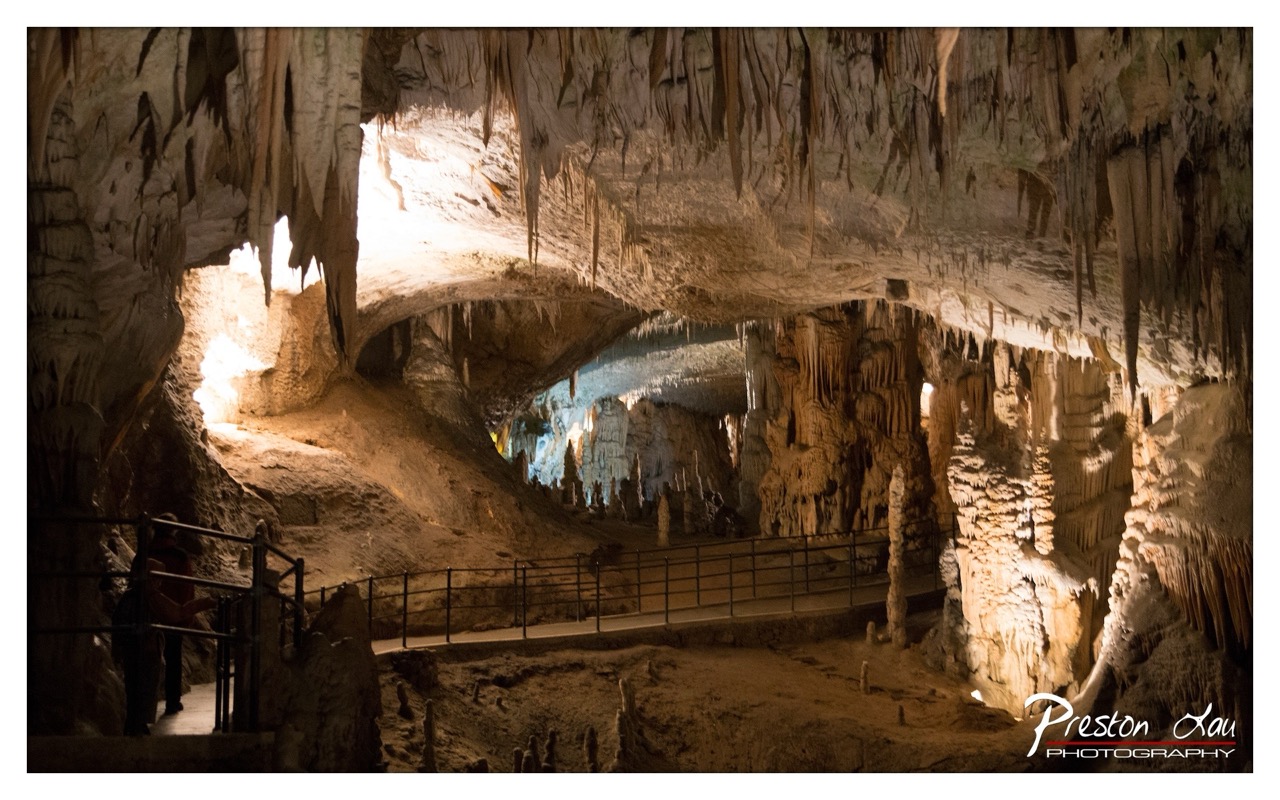

1. Overall Rating (0–10) — 7.5
This photograph captures the awe-inspiring grandeur of a cavern, where ancient rock formations rise like a natural cathedral. The interplay of light and shadow enhances the cave’s mysterious depth, while the presence of a visitor subtly underscores the scale and wonder of the environment. While the lighting is dramatic, the image occasionally veers into overexposure in key areas, slightly diminishing its overall cohesion.
2. Composition (0–10) — 7.0
The composition effectively guides the eye through the cavern’s arching chambers, using the walkway as a leading line into the depth of the cave. The inclusion of the visitor adds scale and perspective, though the framing feels slightly off-center, creating an imbalance that pulls focus away from the central geological formations.
3. Lighting (0–10) — 8.0
The lighting is dramatic and intentional, with warm, directional illumination highlighting the textures of the stalactites and stalagmites. The contrast between the brightly lit areas and the deep shadows enhances the cave’s three-dimensional quality, though some highlights appear overexposed, losing detail in the brightest regions.
4. Color & Tone (0–10) — 7.0
The warm, golden tones dominate the scene, evoking a sense of ancient warmth and mystery. The subtle blue glow in the distant background introduces a cool counterpoint, adding visual interest. However, the color palette, while atmospheric, lacks vibrancy, leaning toward a muted, earthy tone that slightly dampens the image’s emotional punch.
5. Creativity (0–10) — 7.5
The photographer captures the cave not just as a geological site but as a place of quiet reverence. The use of light and scale transforms the cavern into a narrative space, suggesting both time and human curiosity. The image stands out for its immersive quality, inviting the viewer to step into the scene.
6. Technical Quality (0–10) — 8.0
The image is sharp and well-focused, with clear detail in the rock formations. The exposure is generally well-handled, though some highlight clipping in the brighter areas suggests a need for more precise dynamic range control. The watermark is clean and unobtrusive.
7. Emotional Impact (0–10) — 8.0
The photograph evokes a deep sense of wonder and solitude, capturing the timeless majesty of nature. The combination of scale, light, and human presence creates a contemplative mood, inviting the viewer to reflect on the vastness of time and the quiet beauty of the earth’s hidden depths.
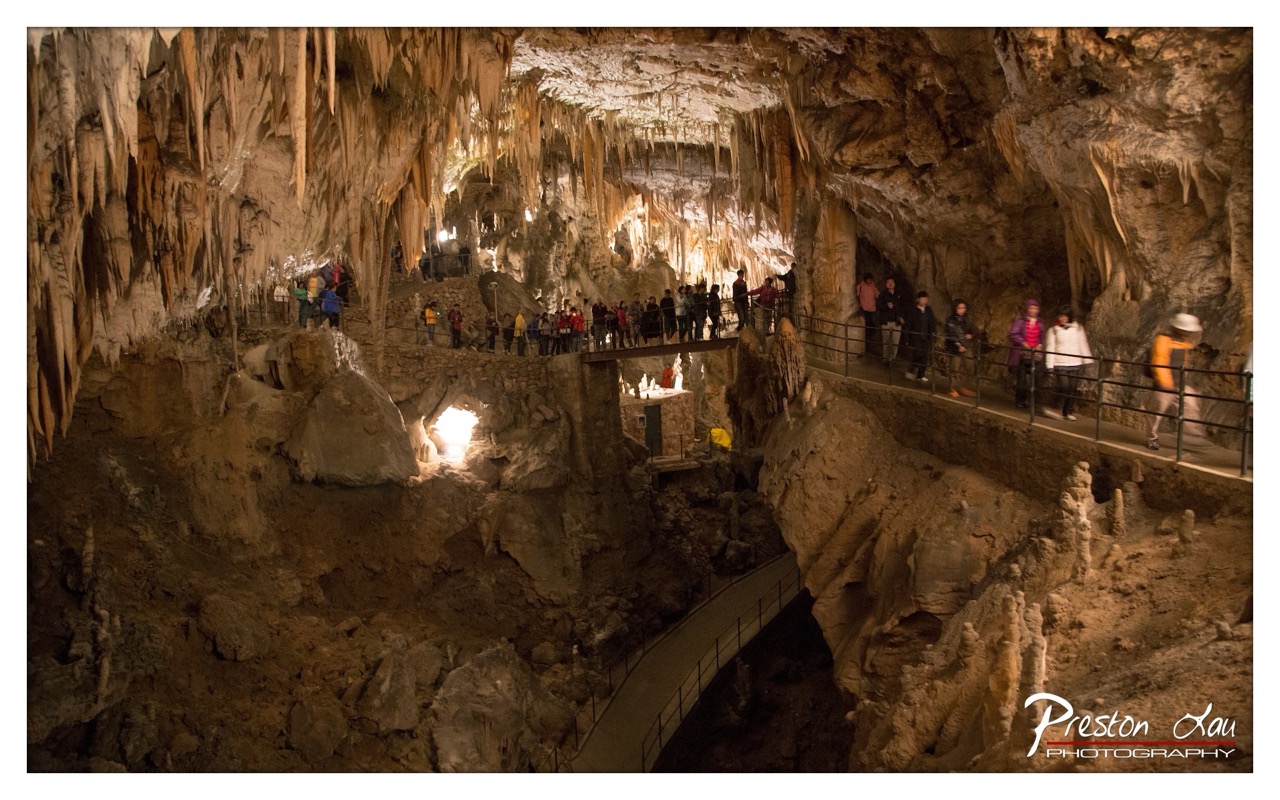

1. Overall Rating (0–10) — 7.5
This photograph captures the awe-inspiring grandeur of a cavernous cave system, where natural formations and human presence converge in a moment of shared wonder. The interplay of warm artificial light and the cavern’s organic textures creates a dramatic, almost sacred atmosphere, while the presence of visitors grounds the scene in reality. Though the composition is rich in detail and scale, the image slightly falters in visual cohesion due to the crowded walkways and uneven lighting distribution.
2. Composition (0–10) — 7.0
The wide-angle perspective emphasizes the cave’s immense scale, with the winding pathways guiding the eye through layers of depth. However, the numerous people and railings create visual clutter, distracting from the natural beauty of the stalactites and formations. A more focused framing could enhance the sense of discovery and mystery.
3. Lighting (0–10) — 8.0
The warm, directional lighting highlights the textures of the cave walls and stalactites, creating a dramatic contrast between light and shadow. The strategic use of spotlights enhances the three-dimensional quality of the formations, while the glow from the distant opening adds a sense of depth and intrigue.
4. Color & Tone (0–10) — 7.5
The palette is dominated by earthy browns and golden yellows, lending the scene a natural, organic warmth. The tonal range is well-balanced, with deep shadows that accentuate the cave’s contours. The slight yellow cast from the artificial lighting enhances the atmosphere but slightly reduces color accuracy.
5. Creativity (0–10) — 7.0
The image successfully blends natural wonder with human interaction, capturing both the majesty of the cave and the scale of human curiosity. The use of light and perspective adds a narrative quality, inviting the viewer to imagine themselves walking through the cavern.
6. Technical Quality (0–10) — 8.0
The photograph is sharp and detailed, with clear focus throughout the frame. The long exposure allows for smooth handling of the ambient light and motion blur from walking visitors, enhancing the sense of activity without sacrificing clarity.
7. Emotional Impact (0–10) — 8.0
The image evokes a sense of awe and exploration, capturing the quiet thrill of discovery. The interplay of light, scale, and human presence creates a powerful emotional resonance, inviting the viewer to feel both small and connected to the ancient world.
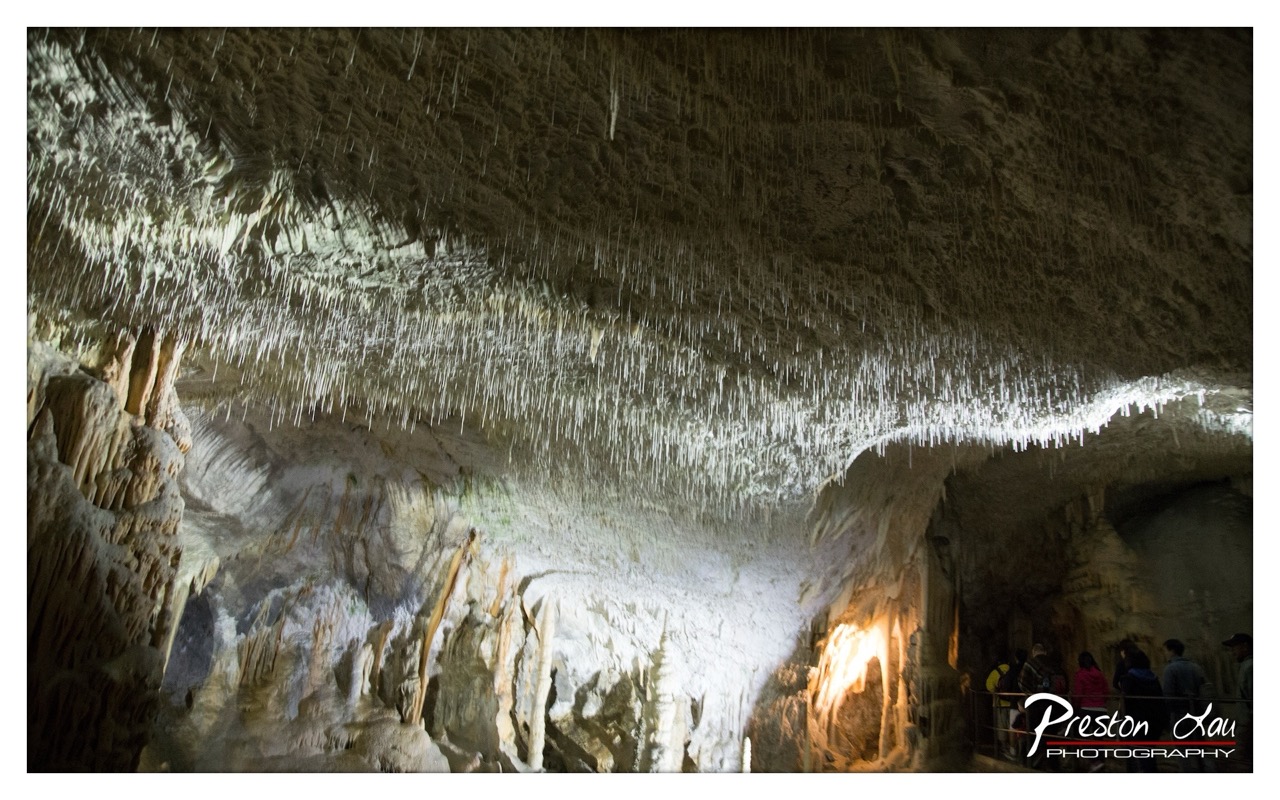

1. Overall Rating (0–10) — 7.5
This photograph captures the awe-inspiring grandeur of a limestone cave, where light transforms the natural formations into a cathedral of stone. The interplay of illumination and shadow accentuates the intricate textures of stalactites and stalagmites, creating a sense of depth and mystery. While the composition is compelling, the presence of people in the lower right slightly disrupts the organic flow, grounding the image in a more literal, touristic context.
2. Composition (0–10) — 7.0
The wide-angle perspective emphasizes the vastness of the cave, with the ceiling of stalactites dominating the upper frame. The diagonal sweep of light and rock draws the eye across the scene, though the placement of the visitors in the lower right creates a visual imbalance, pulling attention away from the natural focal points.
3. Lighting (0–10) — 8.0
The lighting is dramatic and purposeful, with artificial illumination highlighting the textures and forms of the cave. The contrast between the bright, illuminated areas and the deep shadows enhances the three-dimensional quality of the formations, creating a moody and immersive atmosphere.
4. Color & Tone (0–10) — 7.0
The color palette is largely neutral—whites, grays, and earthy tans—reflecting the natural tones of limestone. A subtle warmth from the artificial light adds a touch of golden glow to certain areas, enriching the visual depth and lending a slightly ethereal quality to the scene.
5. Creativity (0–10) — 7.5
The photographer captures the cave’s natural architecture with an artistic eye, transforming a geological wonder into a visually striking composition. The inclusion of human figures provides scale and context, grounding the scene in reality while still preserving its sense of majesty.
6. Technical Quality (0–10) — 8.5
The image is sharp and well-exposed, with fine detail visible in the rock formations. The long exposure likely helped capture the light and minimize noise, resulting in a clean, high-resolution image that effectively conveys the cave’s texture and scale.
7. Emotional Impact (0–10) — 8.0
The photograph evokes a sense of wonder and reverence, inviting the viewer to contemplate the slow, ancient processes that shaped this underground world. The combination of light, scale, and texture creates a powerful emotional resonance, making the cave feel both vast and intimate.
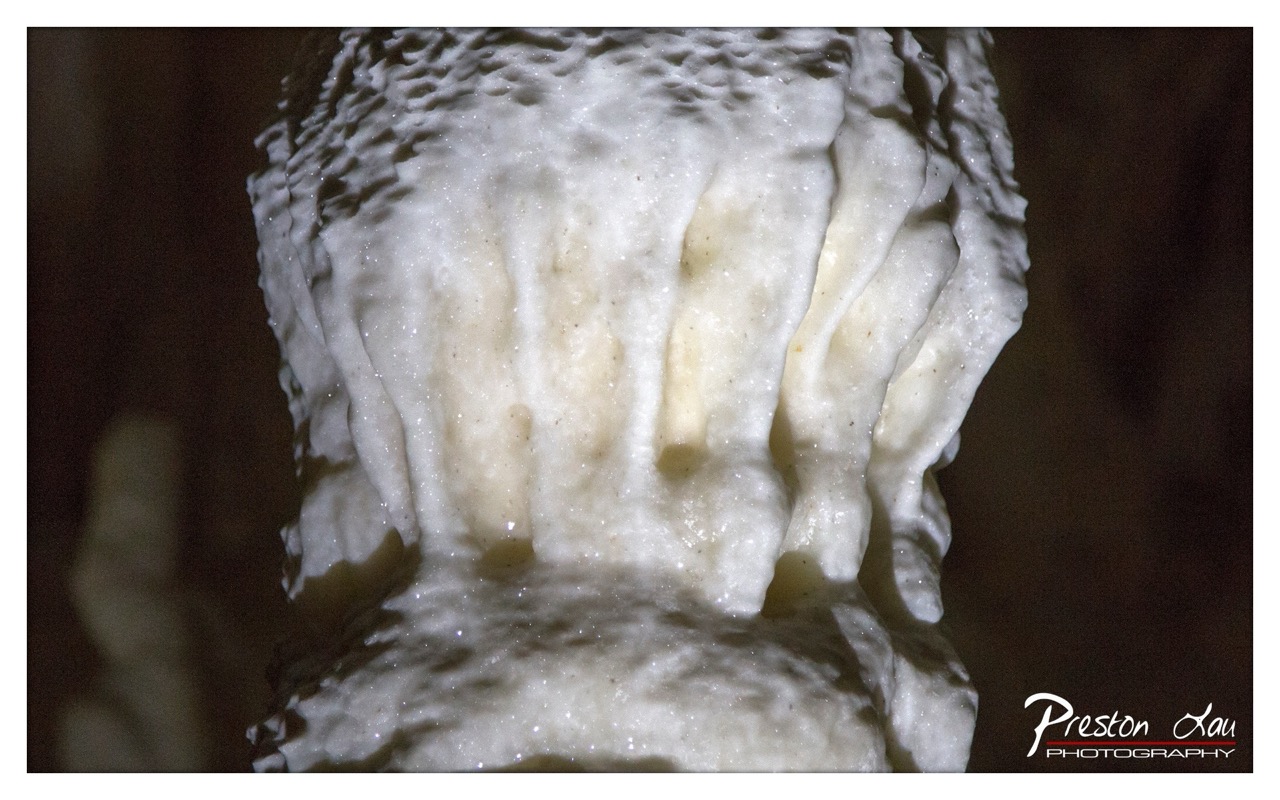

1. Overall Rating (0–10) — 7.0
This image captures the intricate, almost otherworldly texture of a cave formation with striking clarity, transforming a natural geological feature into a sculptural study. The interplay of light and shadow accentuates the delicate, layered surface, giving the stonework a tactile, almost organic quality. While the tight framing and dark background enhance the subject’s presence, the image’s emotional resonance is slightly restrained by its clinical lighting, which, while effective, lacks the atmospheric warmth that could deepen its mystery.
2. Composition (0–10) — 7.5
The central placement of the formation draws immediate attention, with the vertical lines guiding the eye upward and emphasizing its sculptural form. The dark, blurred background isolates the subject, enhancing its prominence and creating a strong sense of depth.
3. Lighting (0–10) — 7.0
A direct, focused light source highlights the texture and contours of the formation, creating sharp contrast and revealing fine details. The lighting is effective but slightly harsh, casting deep shadows that obscure some of the subtler textures and reducing the sense of natural illumination.
4. Color & Tone (0–10) — 6.5
The palette is dominated by cool whites and off-whites, with subtle yellowish tones in the illuminated areas, creating a monochromatic yet nuanced tonal range. The lack of vibrant color limits the image’s visual excitement, though the contrast between light and shadow adds depth.
5. Creativity (0–10) — 7.0
The photograph transforms a mundane geological subject into a compelling visual study through close-up framing and attention to texture. The choice to focus on detail rather than scale invites a contemplative, almost abstract interpretation, highlighting the beauty in natural form.
6. Technical Quality (0–10) — 8.0
The image is sharp and well-focused, with excellent detail capture in the textured surface. The clean resolution and absence of noise suggest strong technical execution, particularly in capturing fine particulate detail.
7. Emotional Impact (0–10) — 6.5
The image evokes a sense of quiet wonder and stillness, inviting the viewer to consider the slow, patient processes of nature. While the emotional pull is subtle, the combination of texture, light, and isolation creates a meditative, almost spiritual atmosphere.
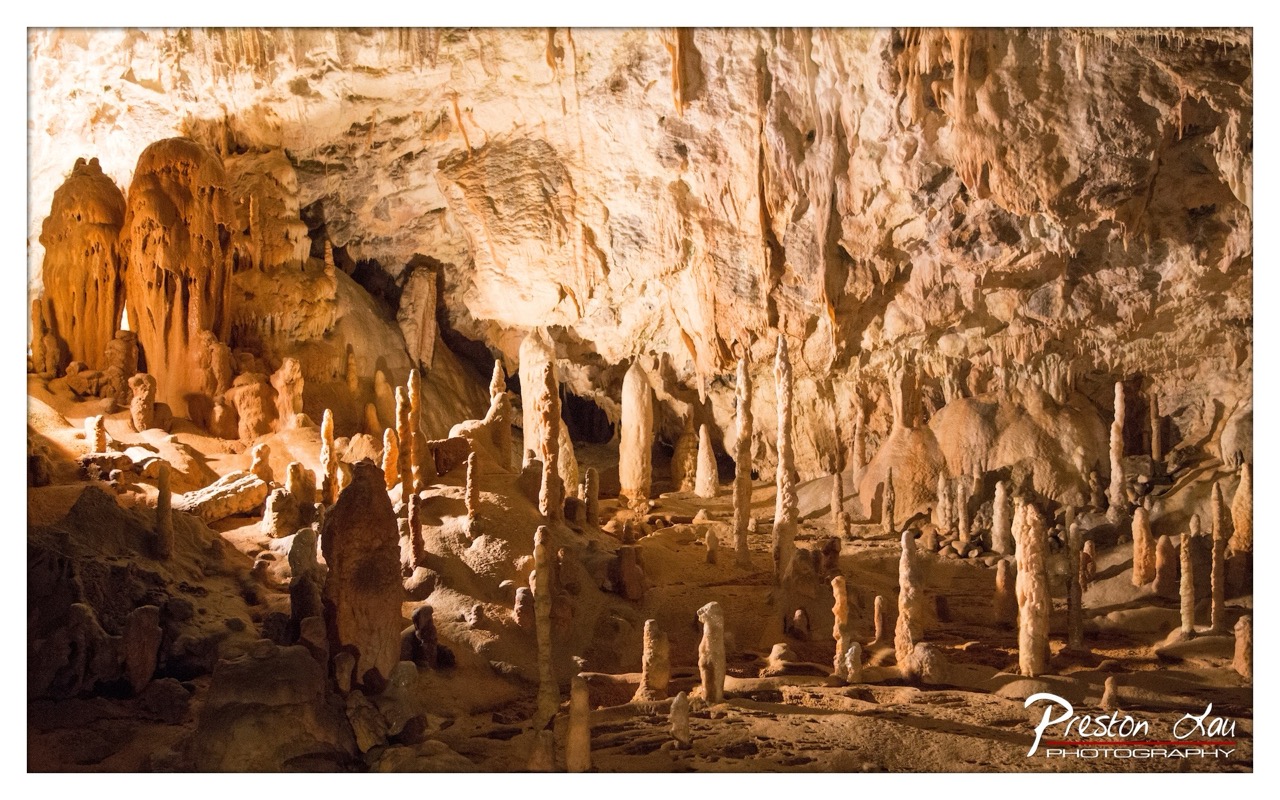

1. Overall Rating (0–10) — 8.0
This photograph captures the majestic stillness of a cavern, where geological time is etched in stone. The warm, golden light enhances the organic textures of stalagmites and stalactites, creating a sense of ancient wonder. While the scene is visually rich, the lighting could be more evenly balanced to avoid harsh shadows and reveal deeper detail in the darker recesses.
2. Composition (0–10) — 7.5
The wide framing effectively captures the scale of the cave, with stalagmites forming a natural leading line toward the back. However, the left side feels slightly crowded, drawing attention away from the central formations and creating an uneven visual weight.
3. Lighting (0–10) — 8.0
The directional lighting highlights the textures and contours of the formations, casting dramatic shadows that add depth and dimension. The warm tone enhances the otherworldly atmosphere, though some areas remain underexposed, obscuring detail.
4. Color & Tone (0–10) — 8.0
The palette of amber, ochre, and soft white creates a cohesive and immersive warmth. The tonal range is rich, with subtle gradients that emphasize the cave’s sculptural qualities and lend a dreamlike quality to the scene.
5. Creativity (0–10) — 7.5
The photographer captures the cave’s natural grandeur with a clear artistic intent—evoking awe and mystery. While the subject is inherently dramatic, the use of light and framing elevates it beyond a simple documentary shot into a contemplative landscape.
6. Technical Quality (0–10) — 8.5
The image is sharp and detailed, with excellent control over focus and exposure. The clarity of the rock formations and the clean handling of light indicate strong technical execution.
7. Emotional Impact (0–10) — 8.5
The photograph evokes a profound sense of time, solitude, and natural beauty. The viewer is invited to imagine the slow, silent growth of these formations over millennia, creating a powerful emotional resonance with the ancient earth.
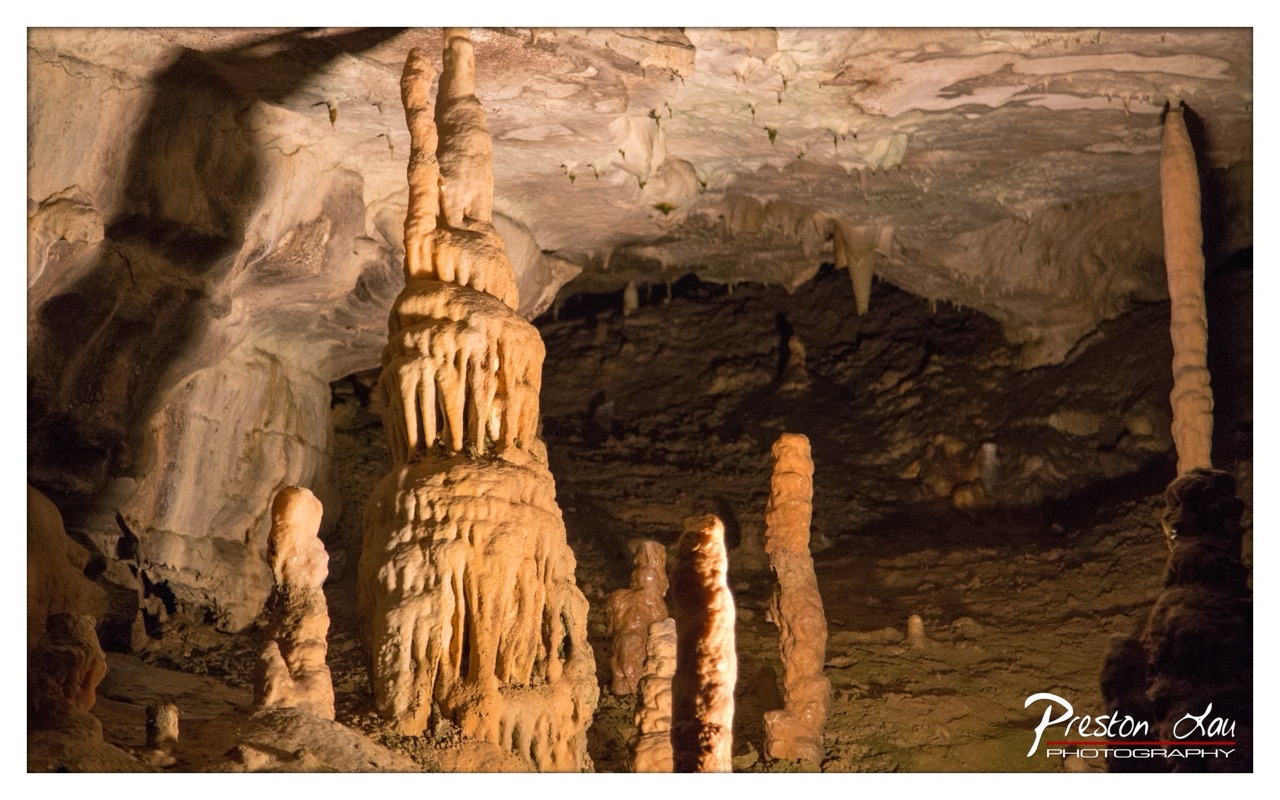

1. Overall Rating (0–10) — 7.5
This photograph captures the quiet majesty of a cavern, where geological time is etched into the stone. The warm illumination highlights the textures and forms of the stalagmites and stalactites, creating a sense of ancient wonder. While the lighting and composition are strong, a more deliberate balance between light and shadow could enhance the sense of depth and scale.
2. Composition (0–10) — 7.0
The central stalagmite draws the eye, with surrounding formations providing depth and context. The wide frame includes enough of the cave’s architecture to convey scale, though the right side feels slightly overexposed and could benefit from tighter framing.
3. Lighting (0–10) — 8.0
Warm, directional lighting emphasizes the texture and contours of the formations, creating a dramatic interplay of light and shadow. The glow enhances the organic shapes, though some areas remain underexposed, losing detail in the deeper recesses.
4. Color & Tone (0–10) — 7.5
The palette of earthy golds and browns is rich and cohesive, evoking the warmth of the cave’s interior. The contrast between lit and shadowed areas adds dimension, though the overall tone is slightly warm, possibly due to white balance.
5. Creativity (0–10) — 8.0
The image captures the surreal beauty of a subterranean world with a sense of reverence. The choice to spotlight the central column while leaving surrounding areas in darkness creates a narrative of discovery and awe.
6. Technical Quality (0–10) — 8.5
Sharp focus and clean detail reveal the intricate textures of the rock. The exposure is well-handled, though some noise is visible in the darker regions, likely due to low-light conditions.
7. Emotional Impact (0–10) — 8.0
The photograph evokes a sense of solitude and timelessness, inviting the viewer to imagine the slow, silent processes that formed these structures over millennia. The mood is contemplative and almost spiritual.
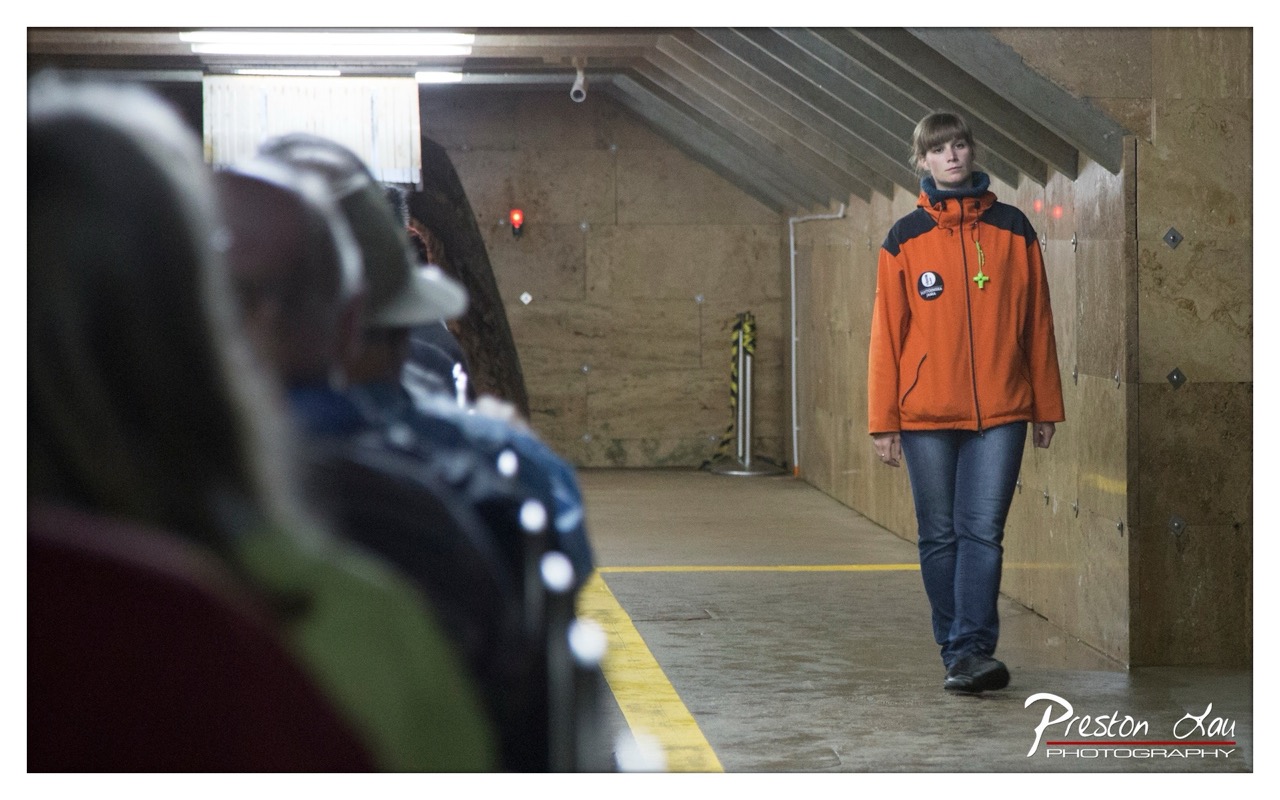

1. Overall Rating (0–10) — 7.0
This photograph captures a moment of quiet intensity within a shooting range, where the subject’s focused gaze and purposeful stride convey a sense of discipline and readiness. The layered composition, with blurred foreground figures leading the eye toward the central figure, creates a narrative depth that feels both candid and deliberate. While the lighting and color palette lean toward the utilitarian, the image’s emotional weight comes from the contrast between the subject’s calm determination and the stark, functional environment.
2. Composition (0–10) — 7.5
The diagonal lines of the corridor and the placement of the subject along the right third create a dynamic sense of movement. The blurred foreground adds depth and frames the scene effectively, drawing attention to the central figure while grounding the image in a shared space.
3. Lighting (0–10) — 6.0
Harsh overhead fluorescent lighting dominates, casting flat illumination that minimizes shadows and reduces atmospheric depth. While it clearly defines the environment, the lack of directional warmth or contrast limits the mood’s emotional resonance.
4. Color & Tone (0–10) — 6.5
The orange jacket stands out against the muted browns and grays of the wooden walls, creating a strong focal point. The cool tone of the scene, however, tempers the vibrancy of the color, giving it a slightly detached, documentary feel.
5. Creativity (0–10) — 7.0
The use of depth of field and layered framing adds a cinematic quality to an otherwise ordinary setting. The choice to capture the subject mid-stride, with a direct and unflinching gaze, elevates the image beyond mere documentation into a moment of personal focus and narrative intent.
6. Technical Quality (0–10) — 8.0
The focus is sharp on the subject, with smooth transitions into the foreground blur. The image is well-exposed, with no obvious technical flaws, and the watermark is unobtrusive.
7. Emotional Impact (0–10) — 7.5
The image evokes a quiet tension—of concentration, preparation, and human presence within a controlled, almost sterile environment. The subject’s direct gaze invites connection, suggesting a story of discipline and personal commitment that lingers after the view.
Loading map...